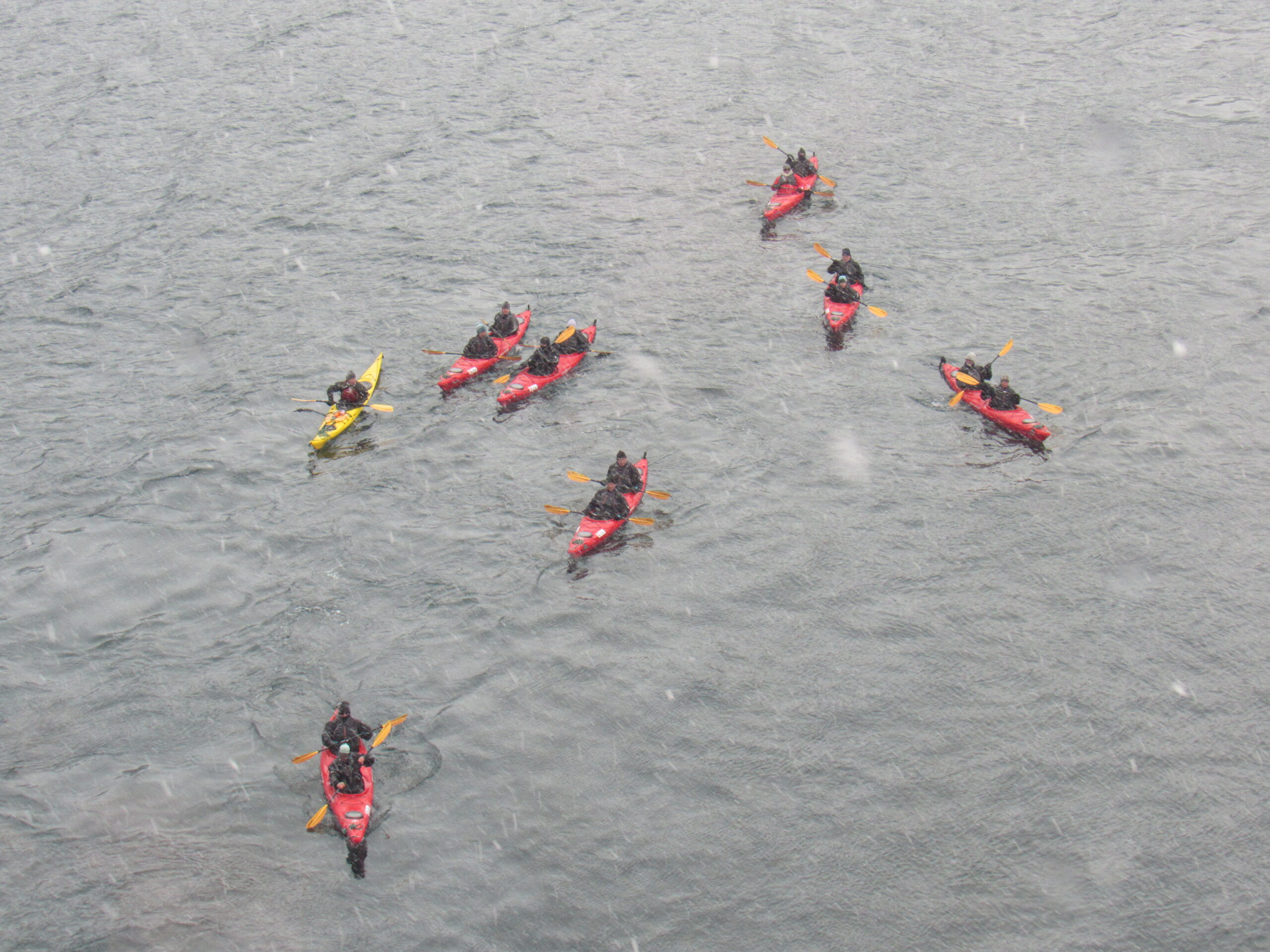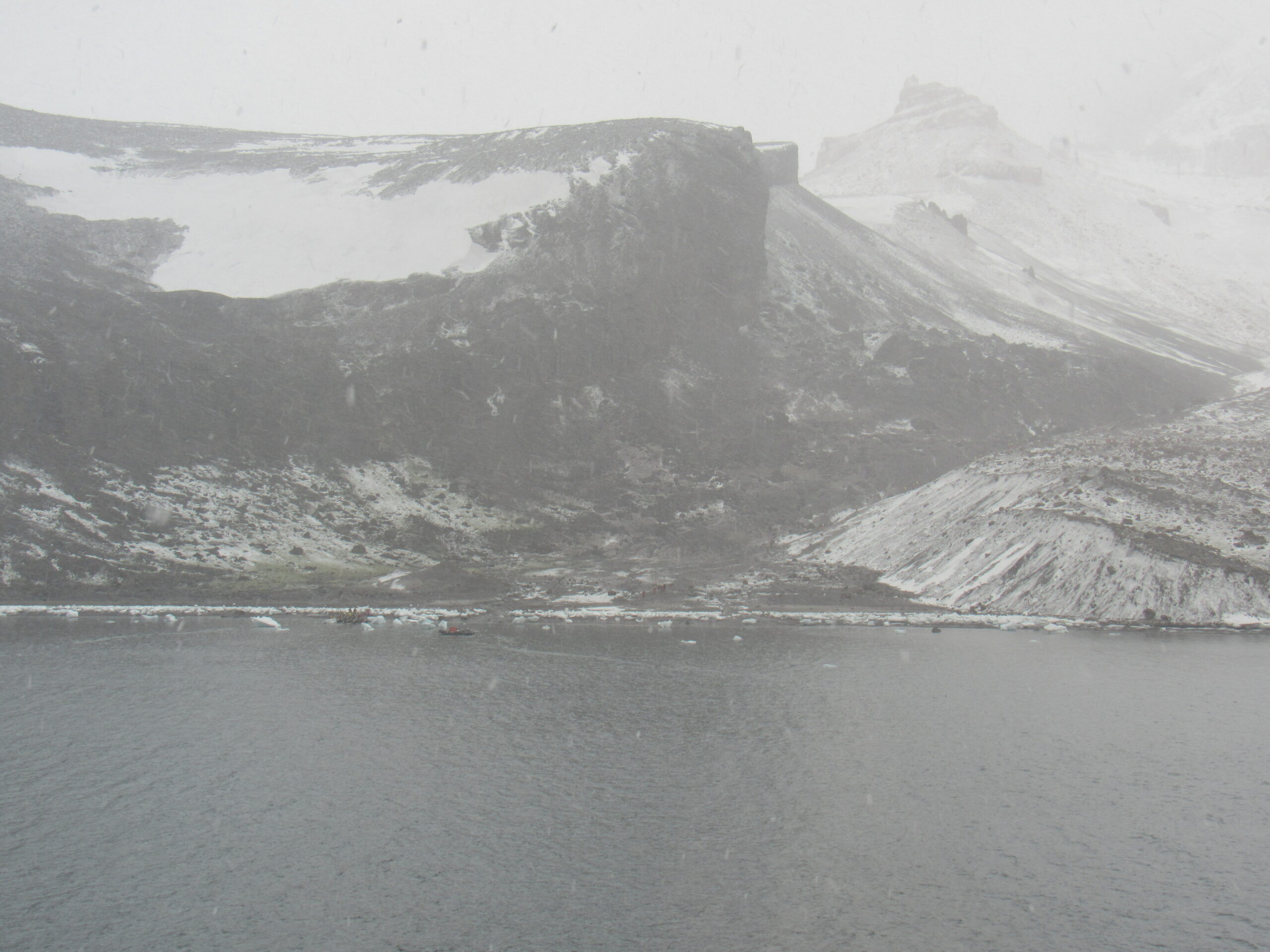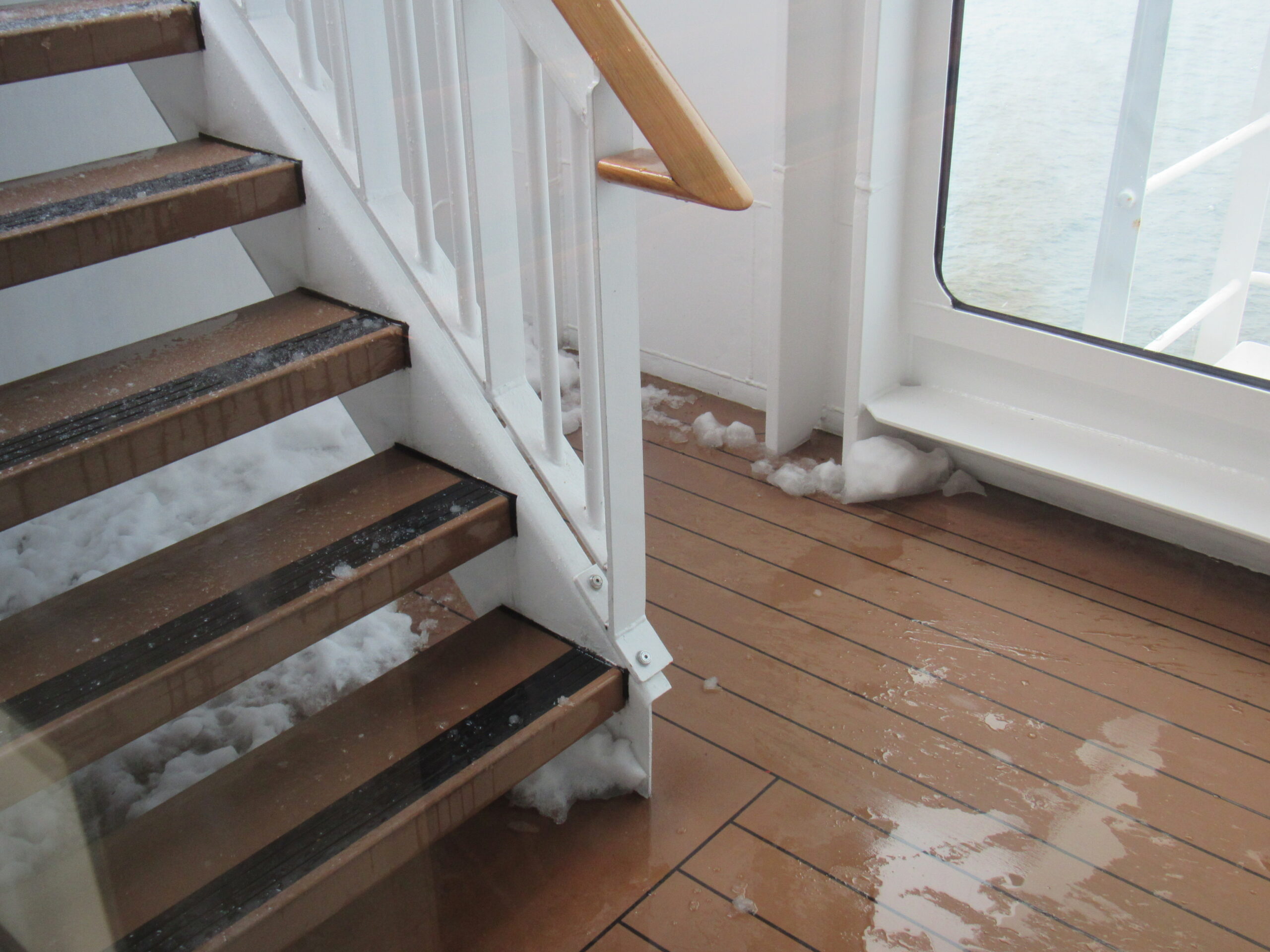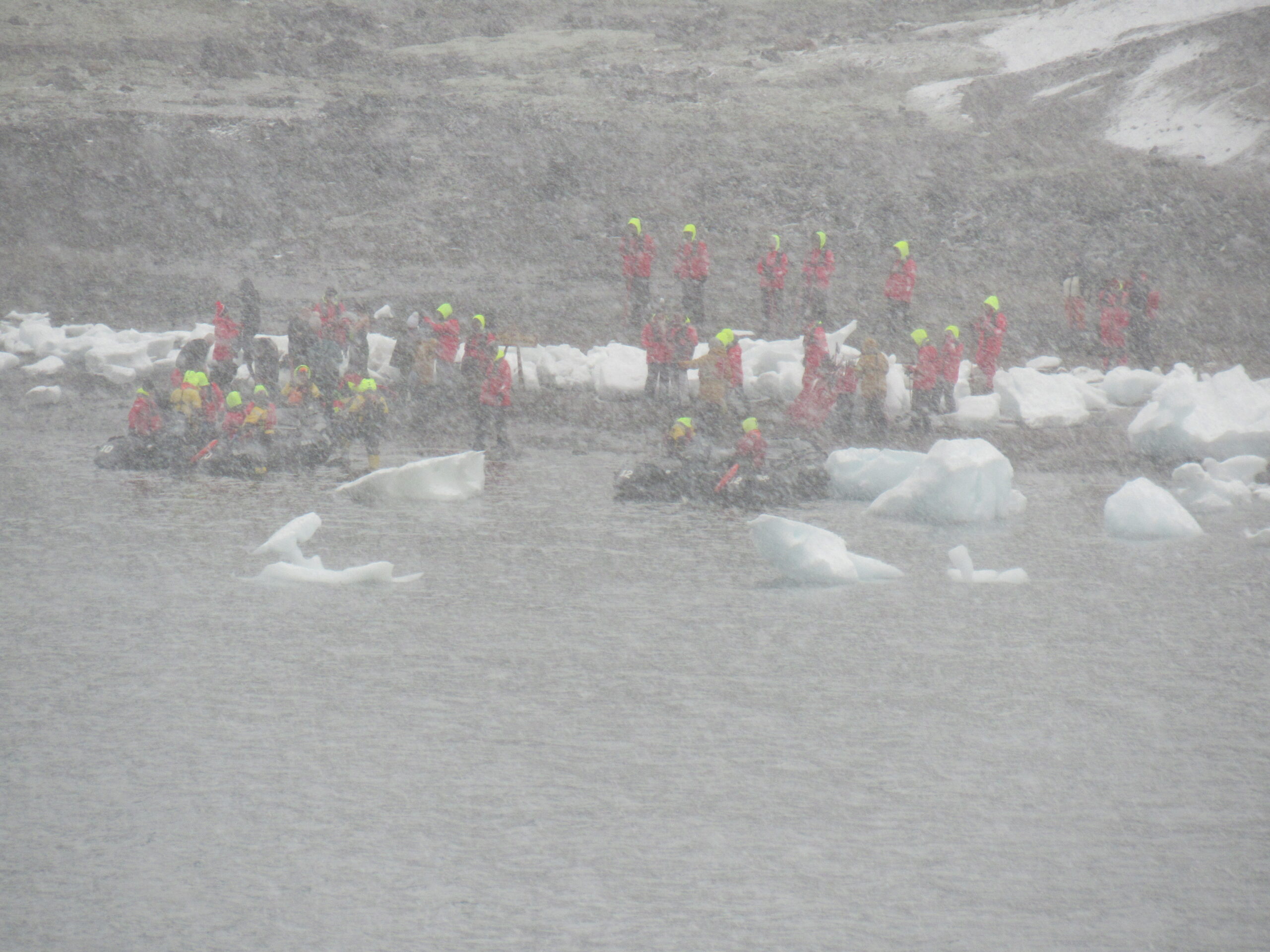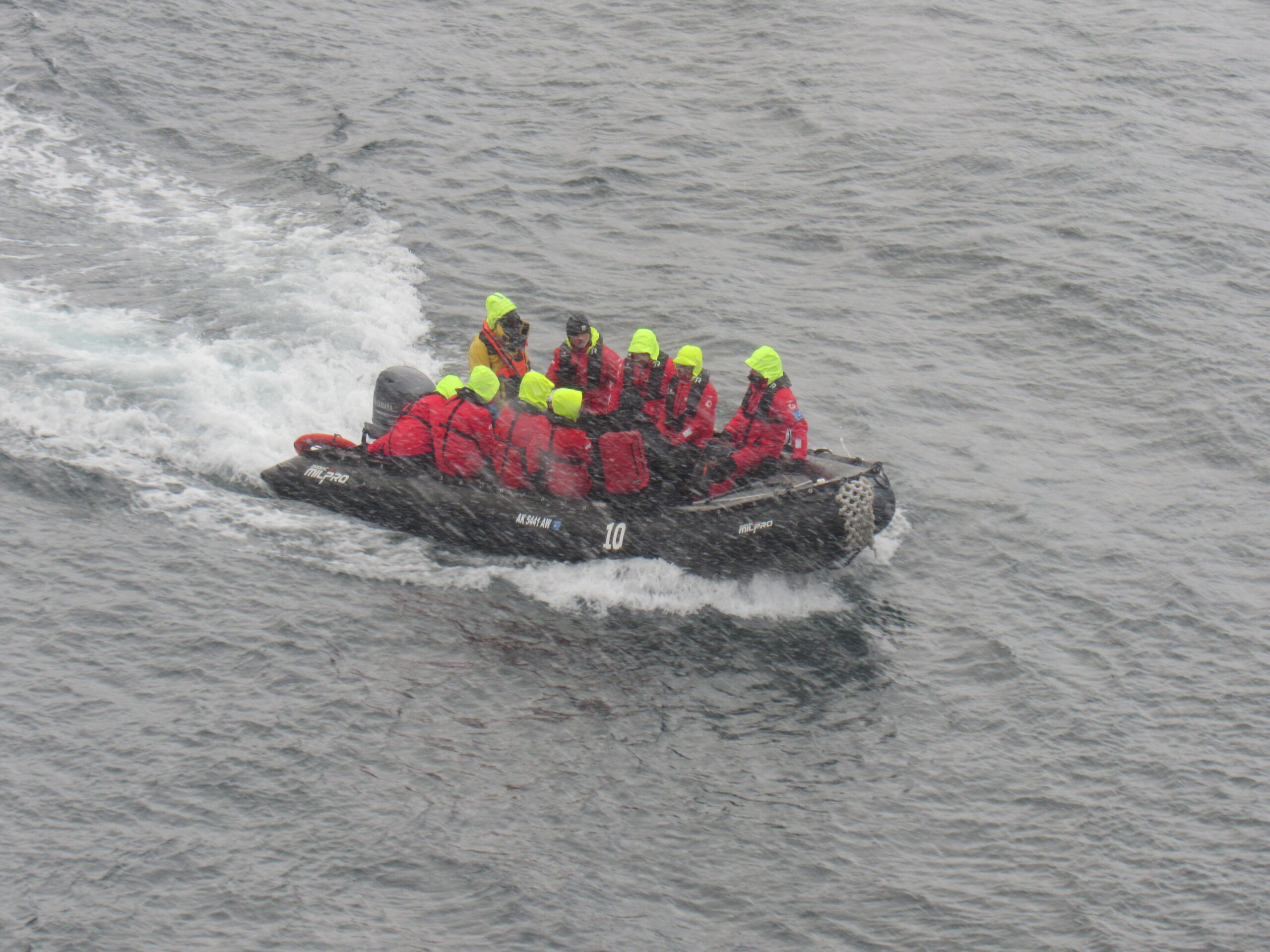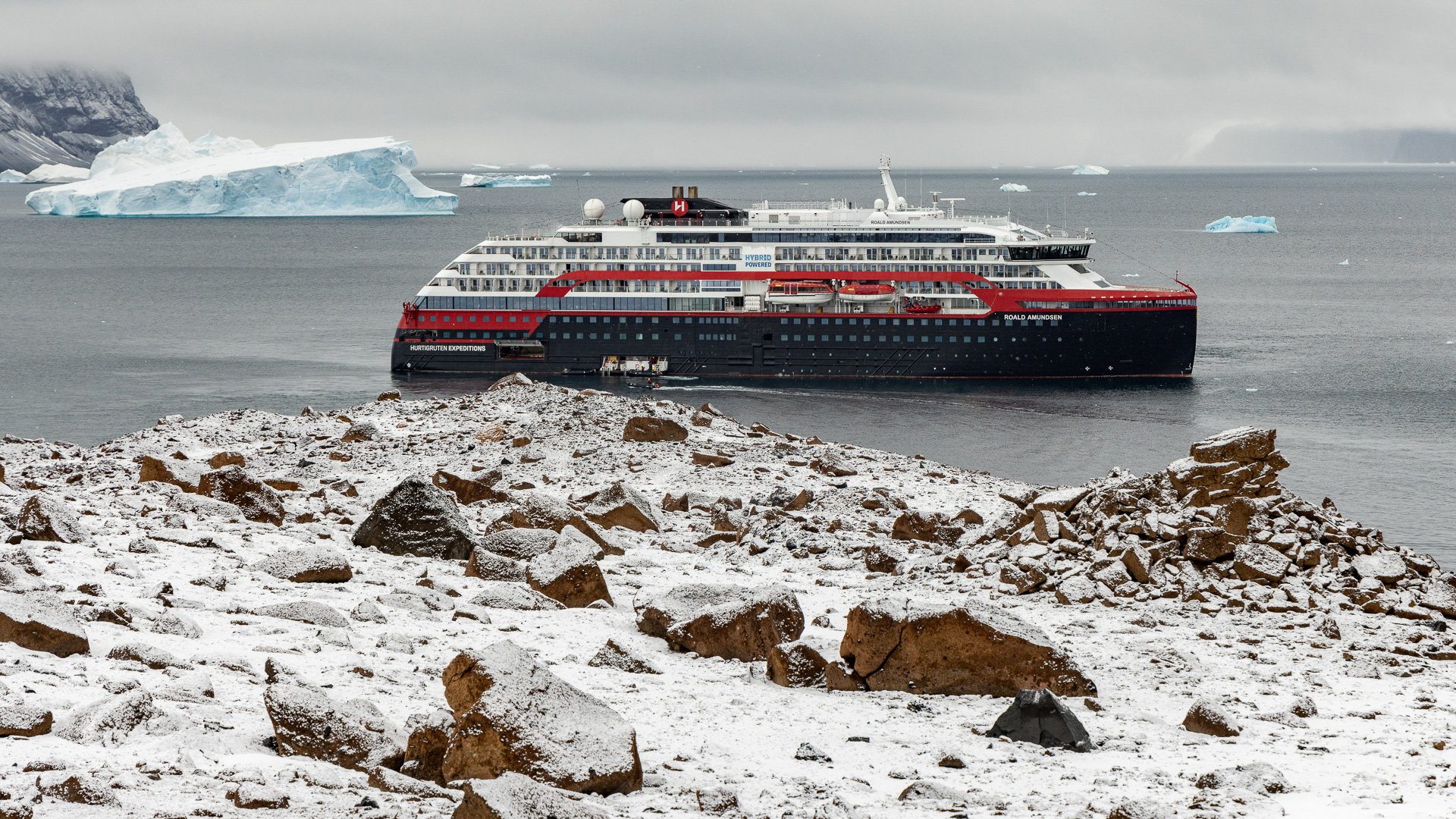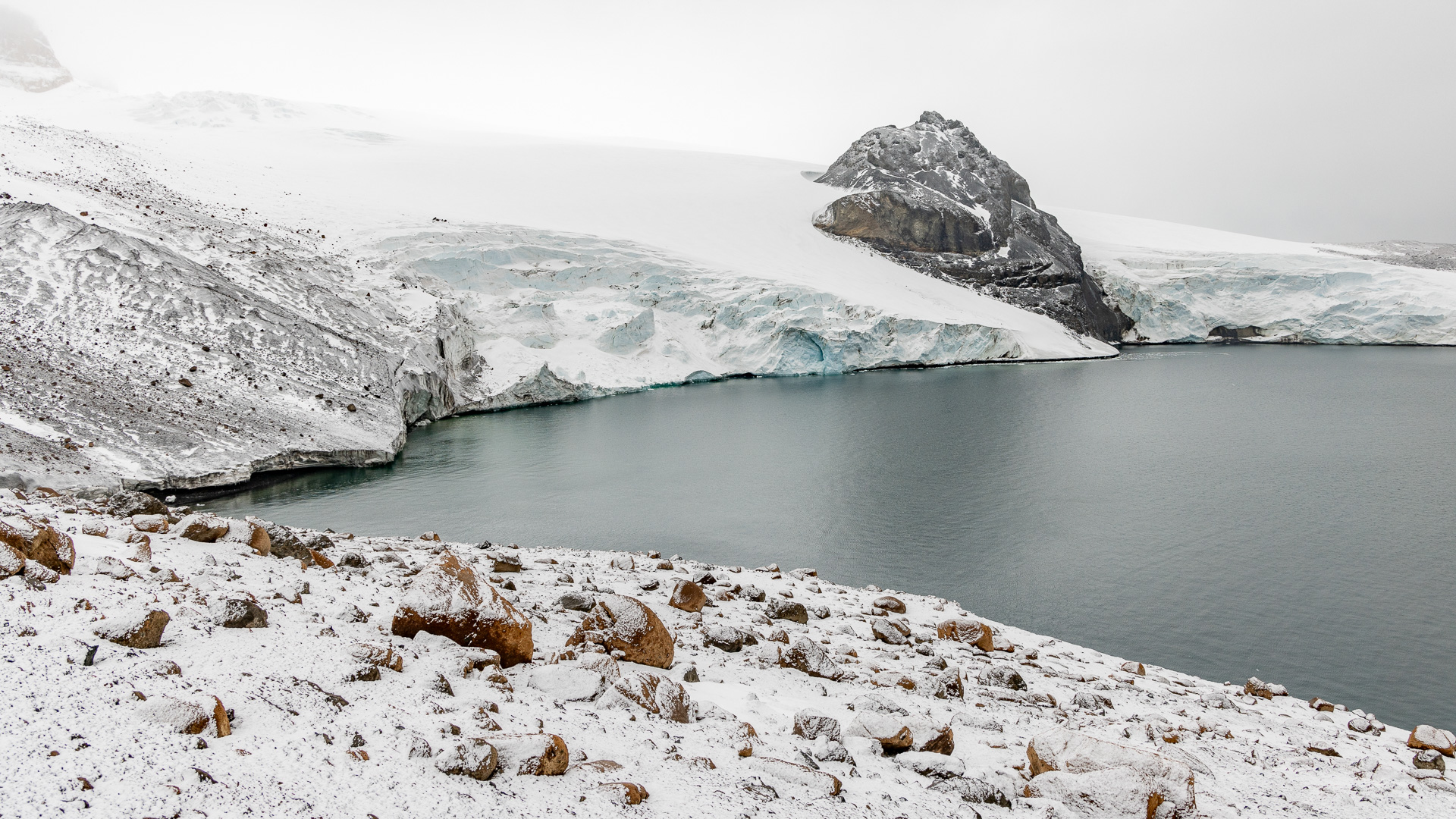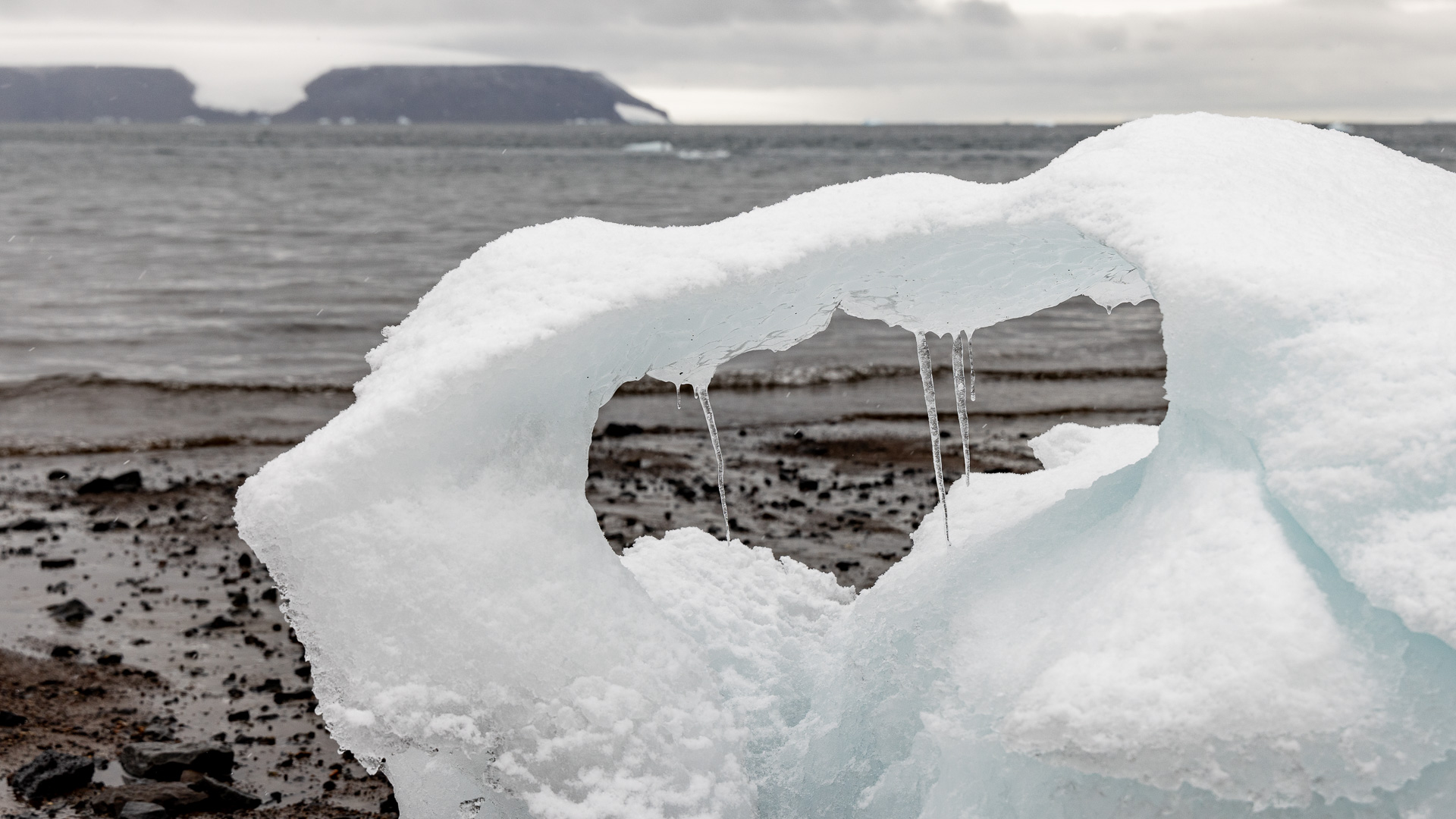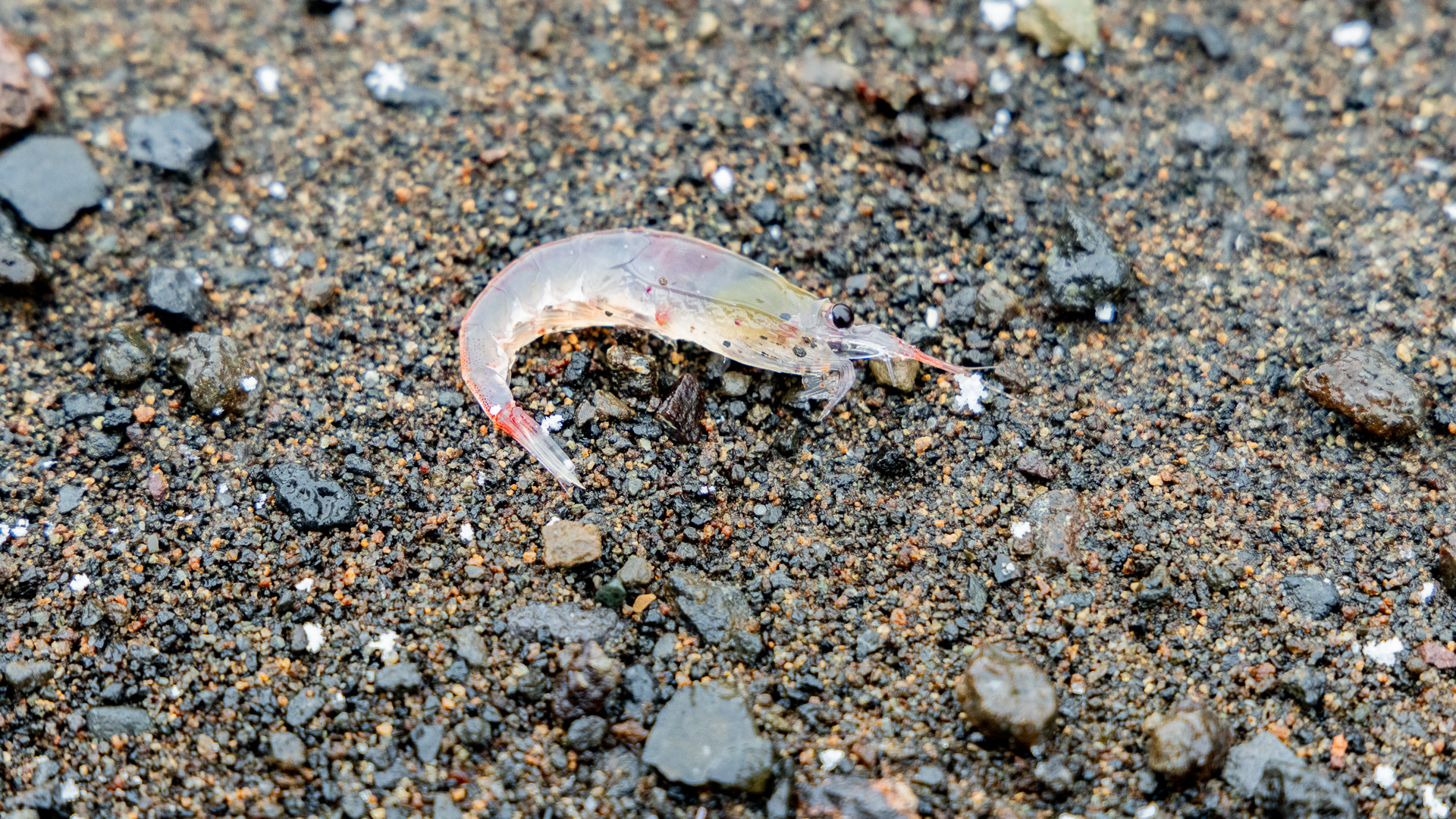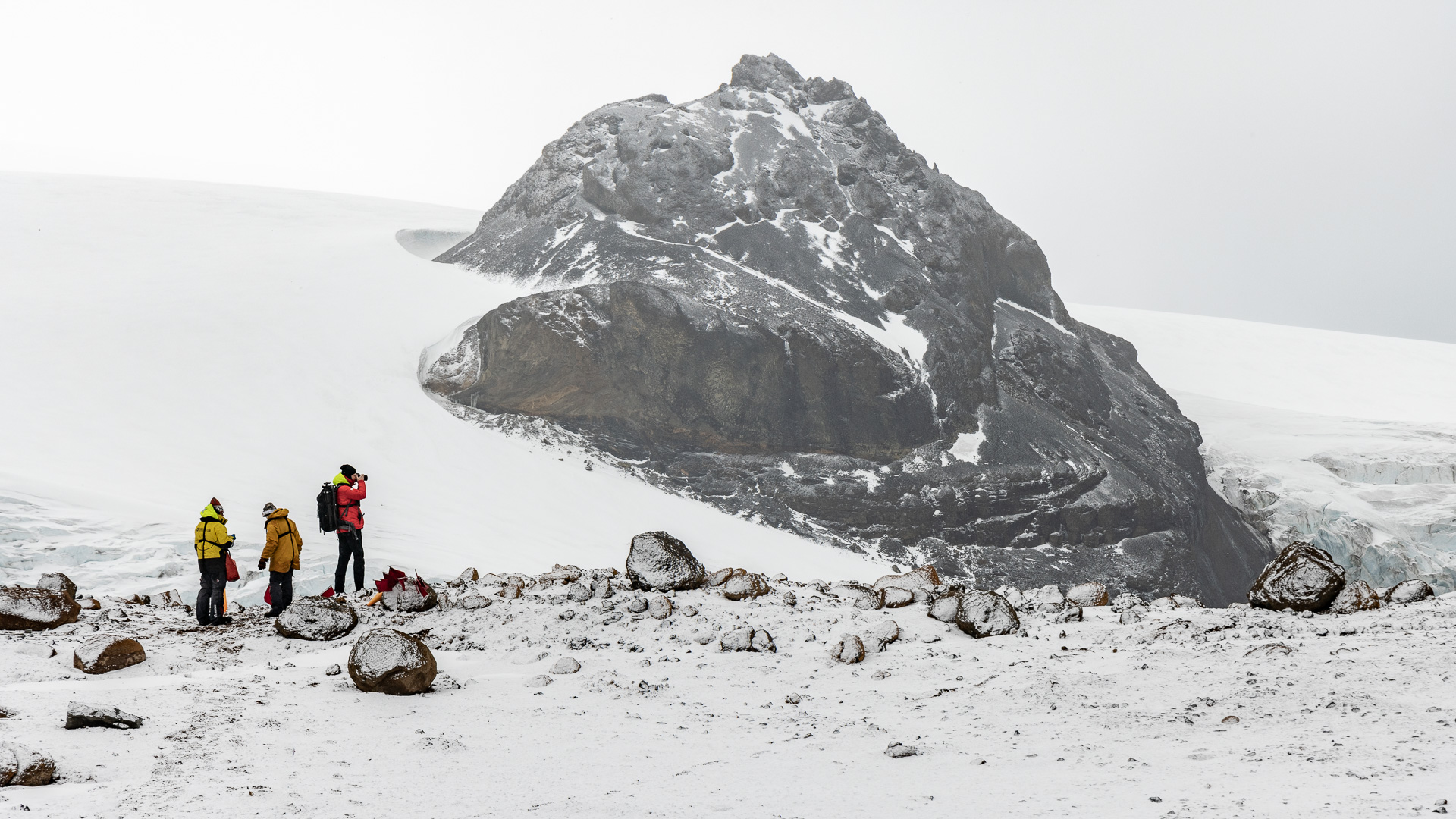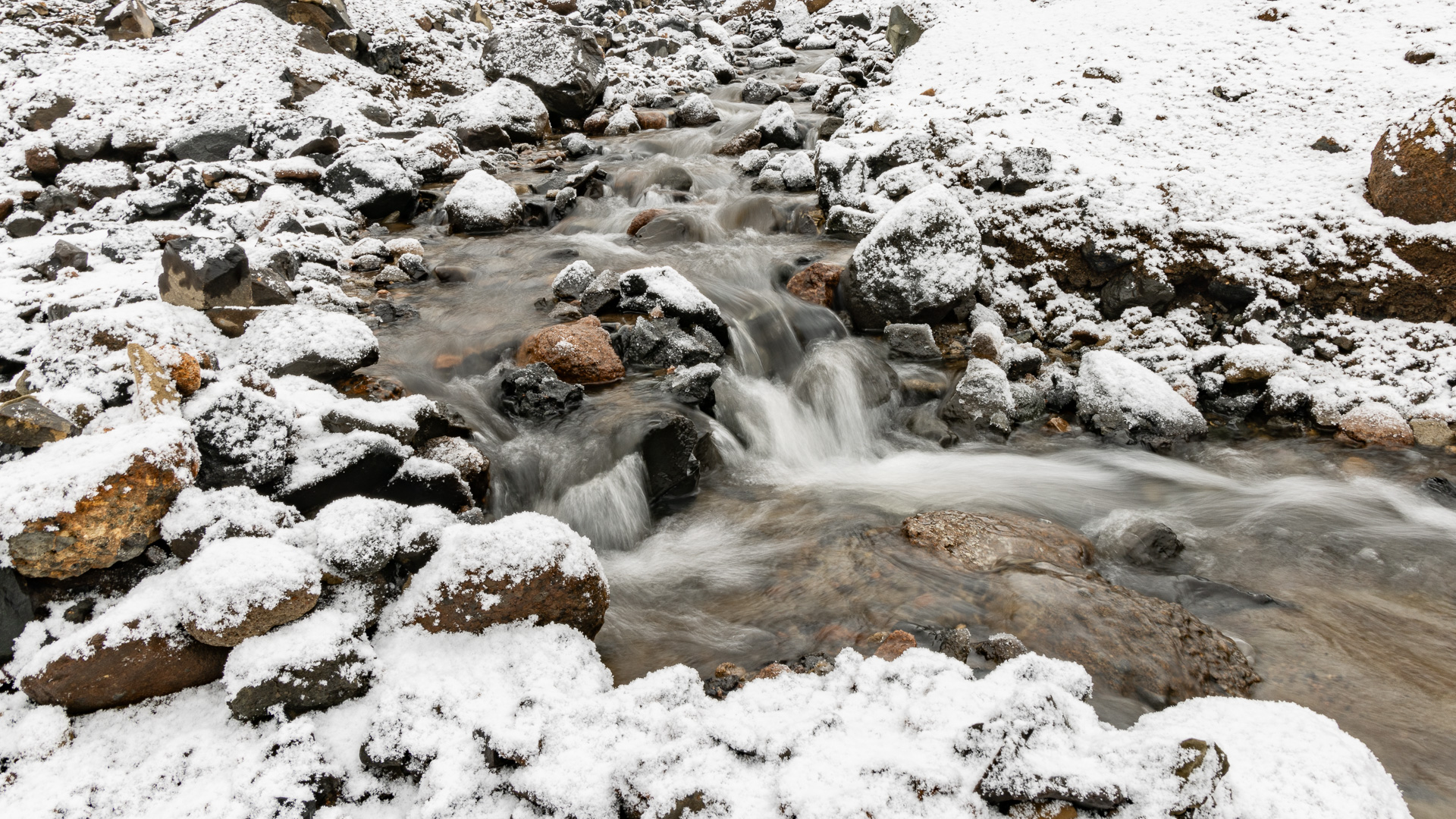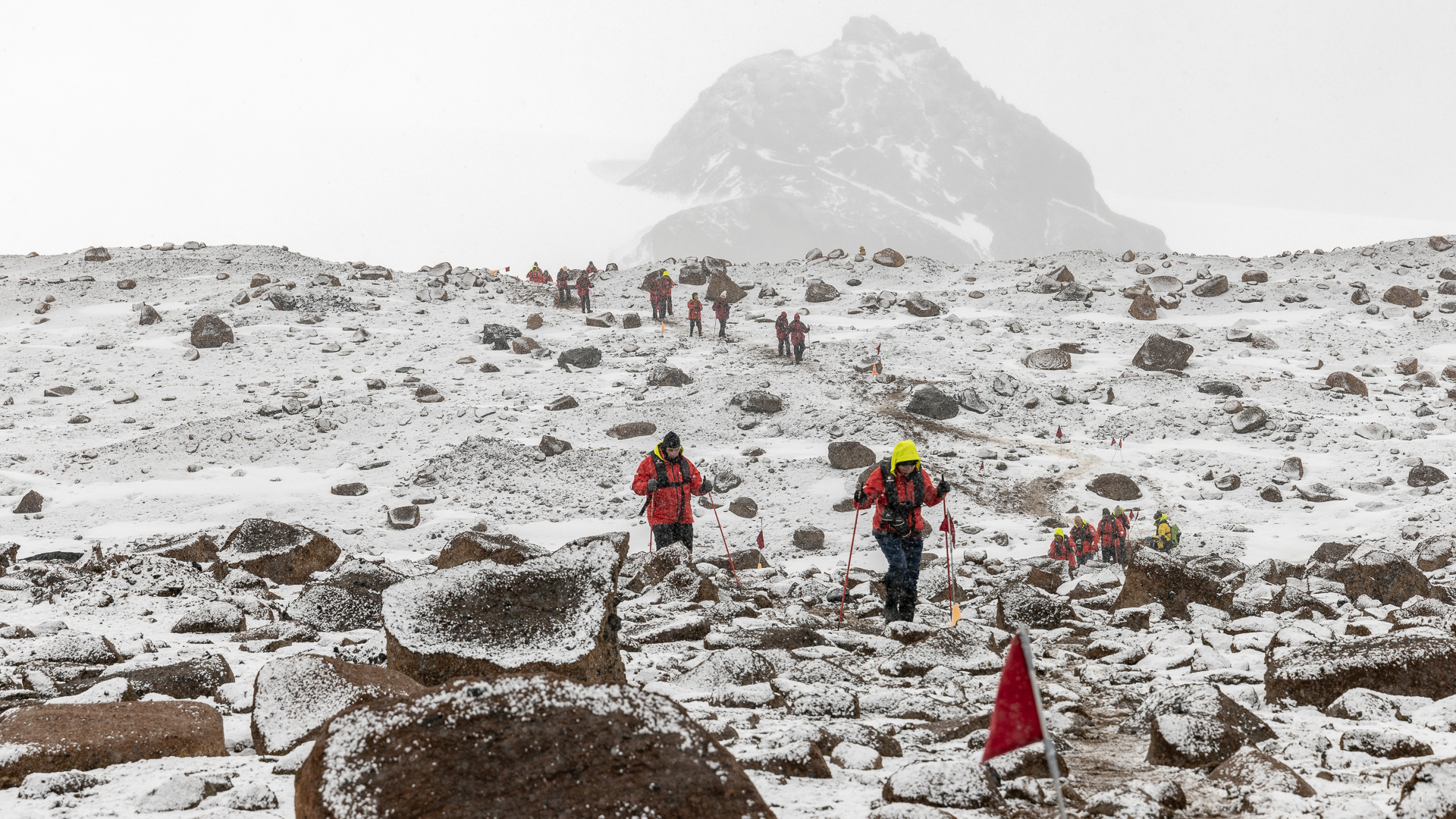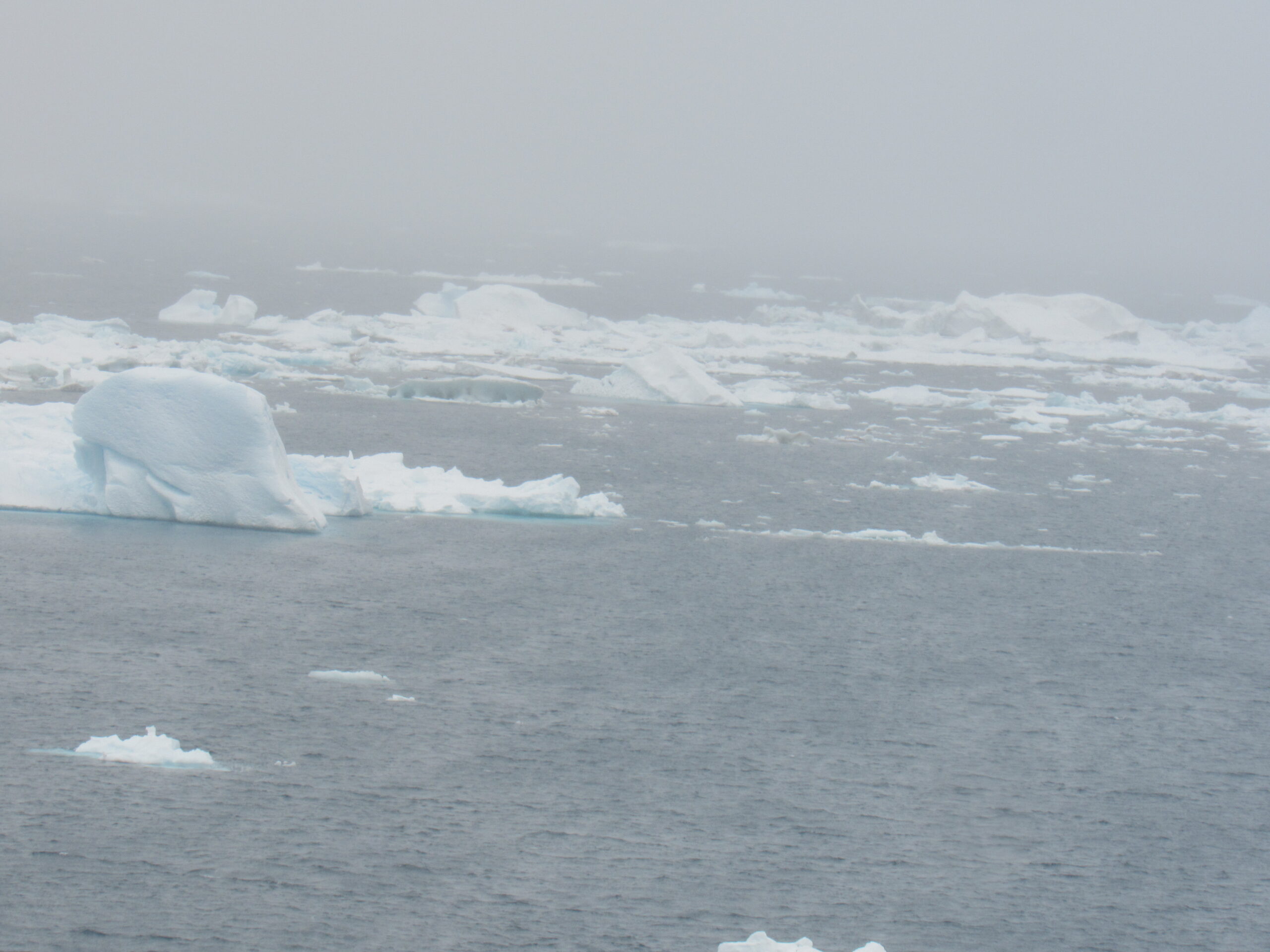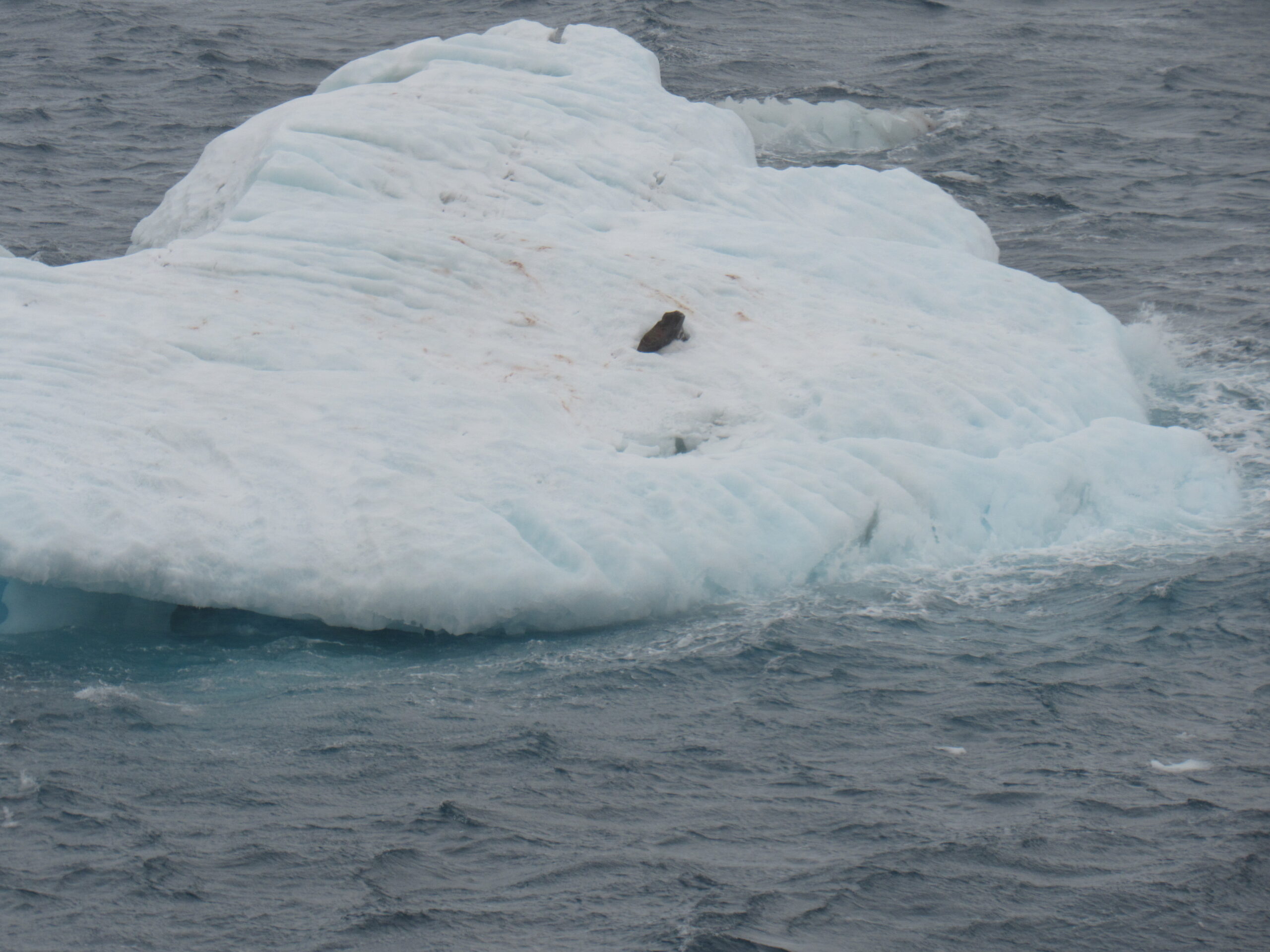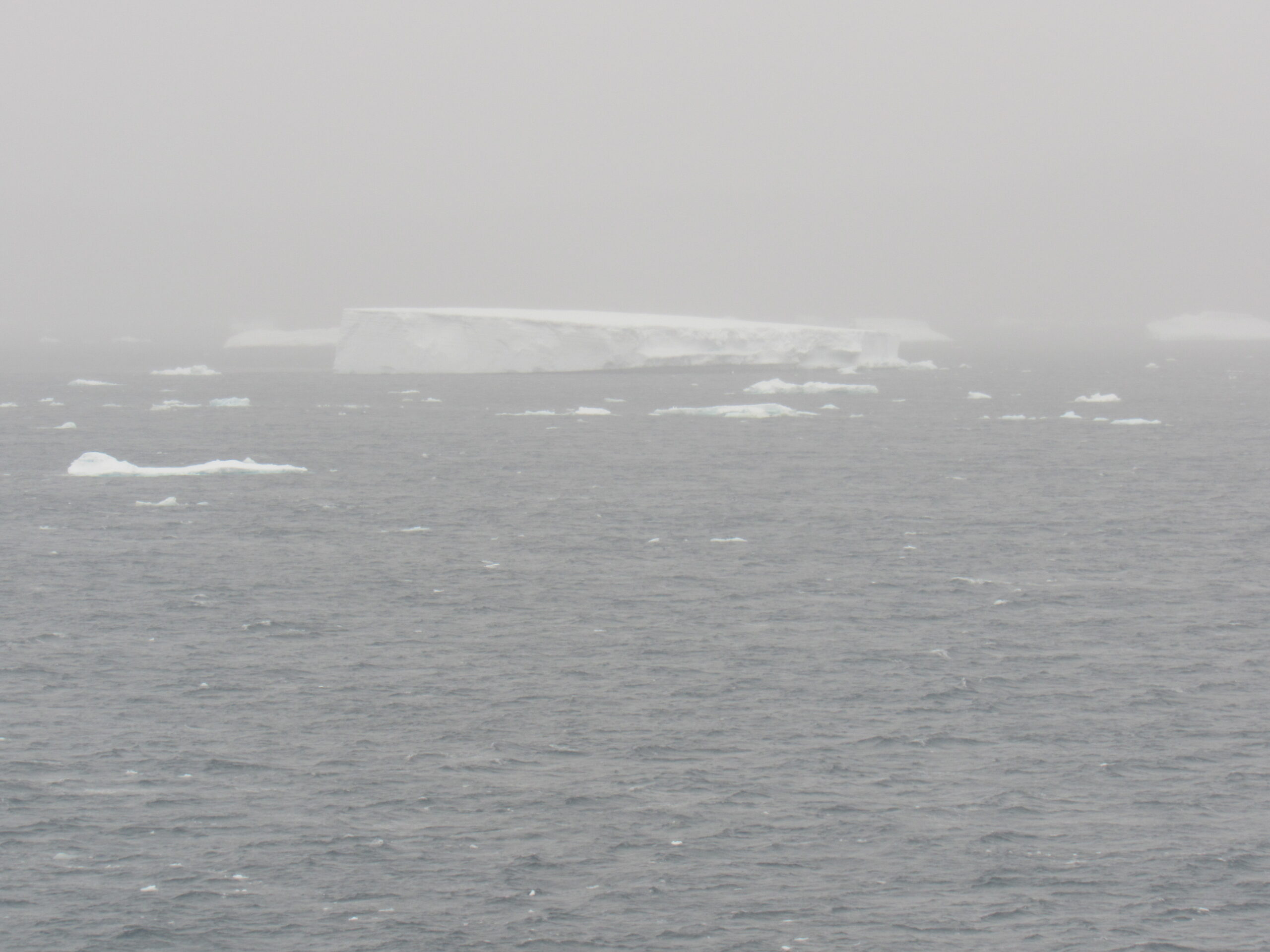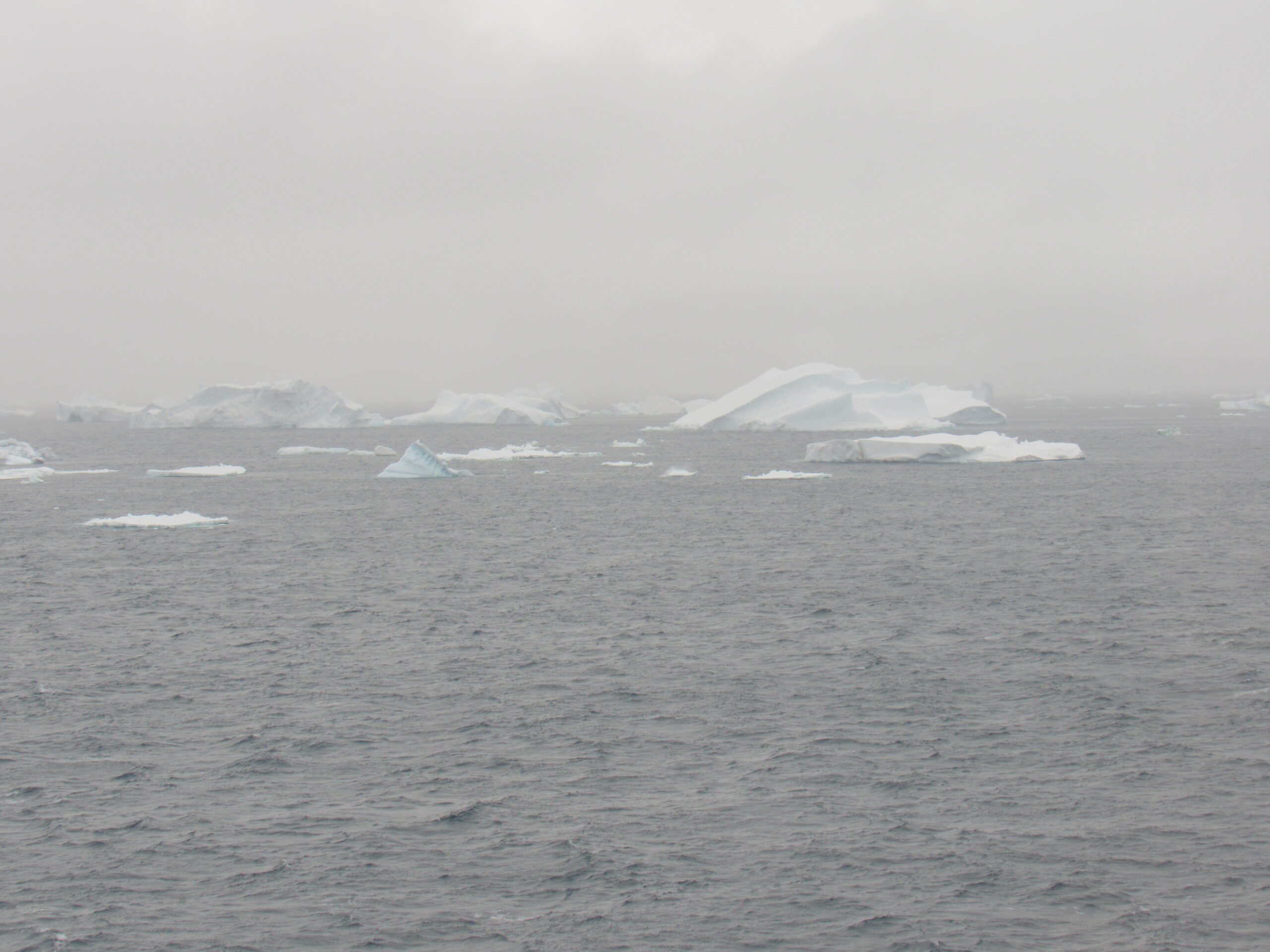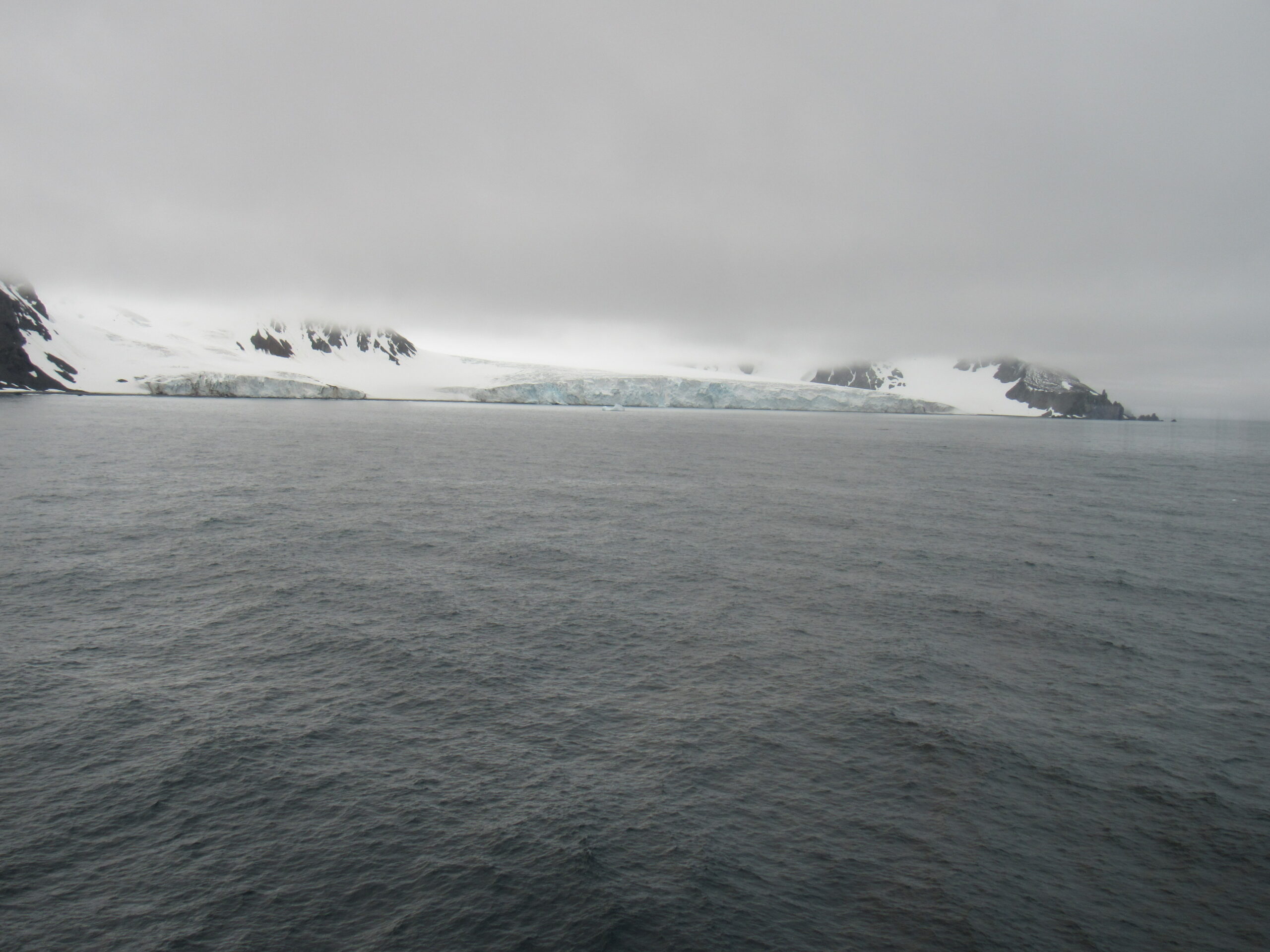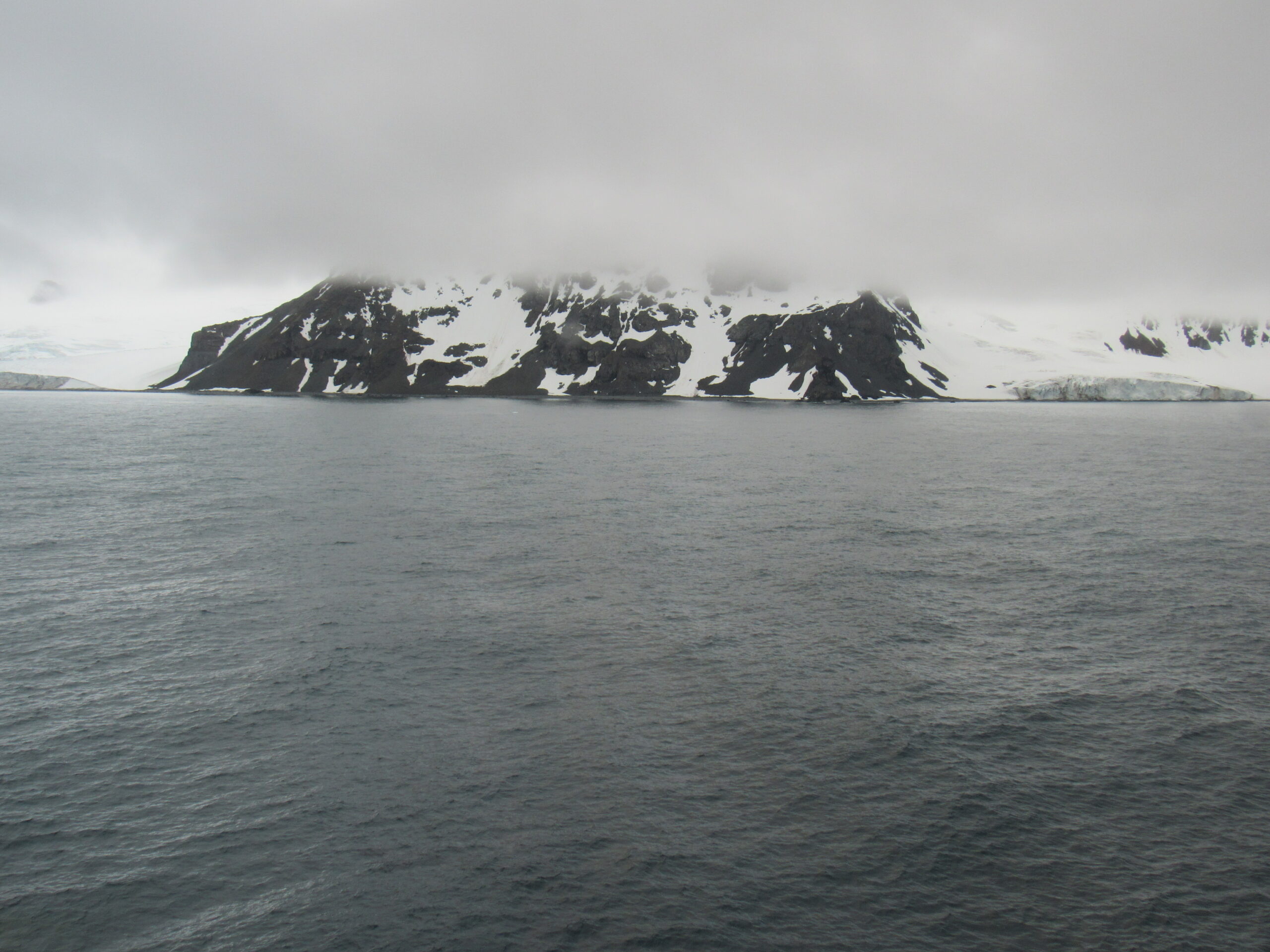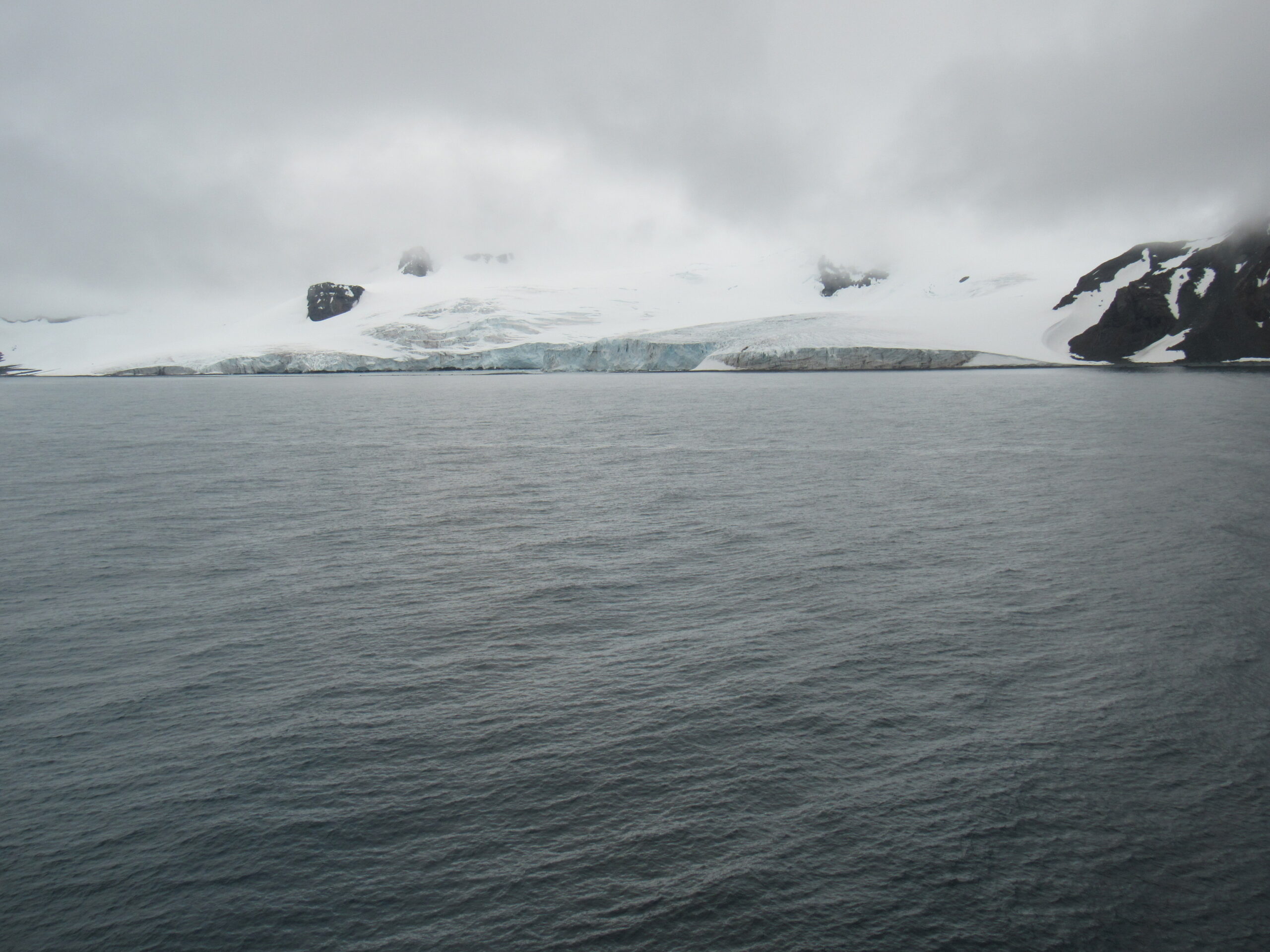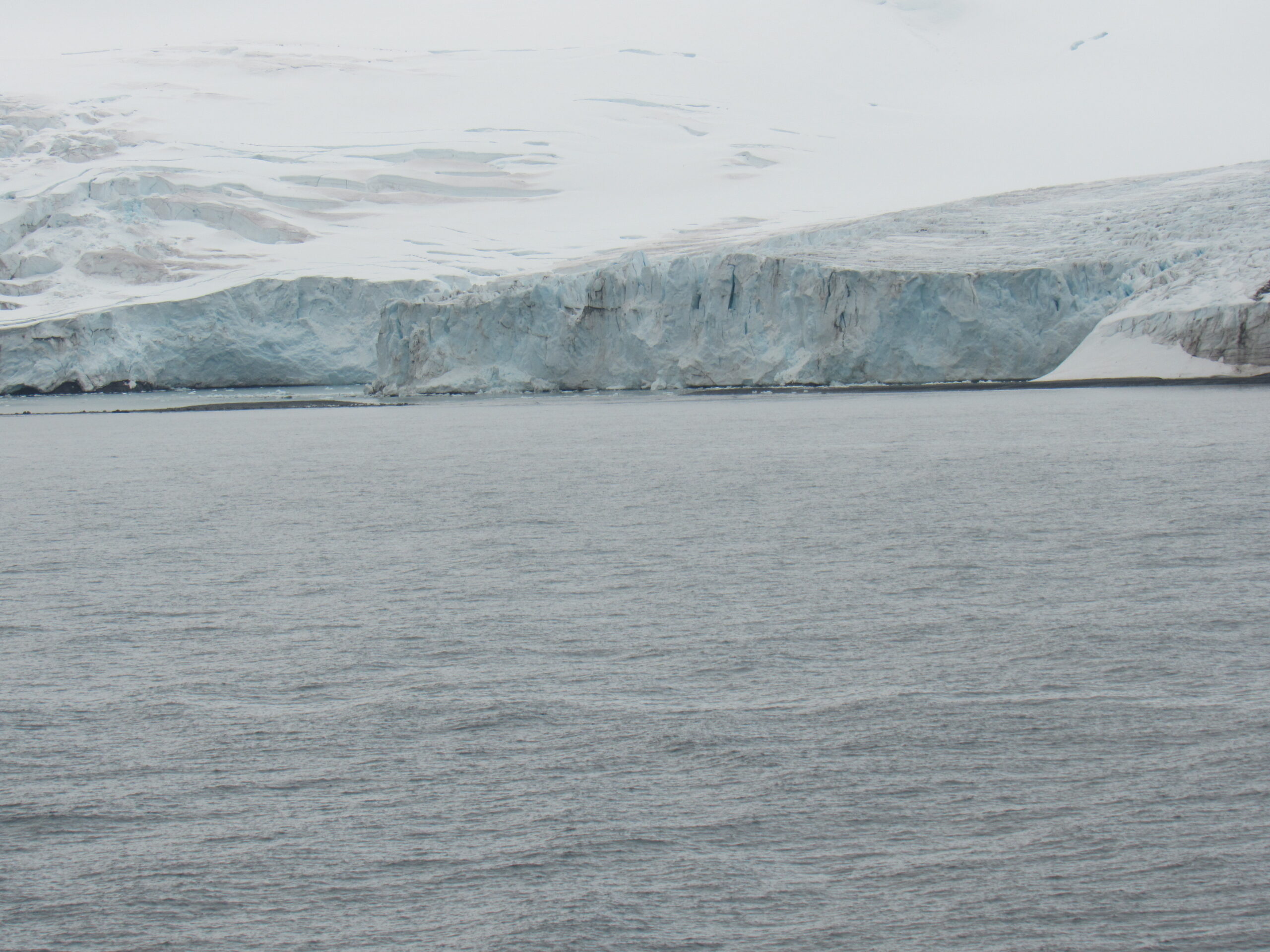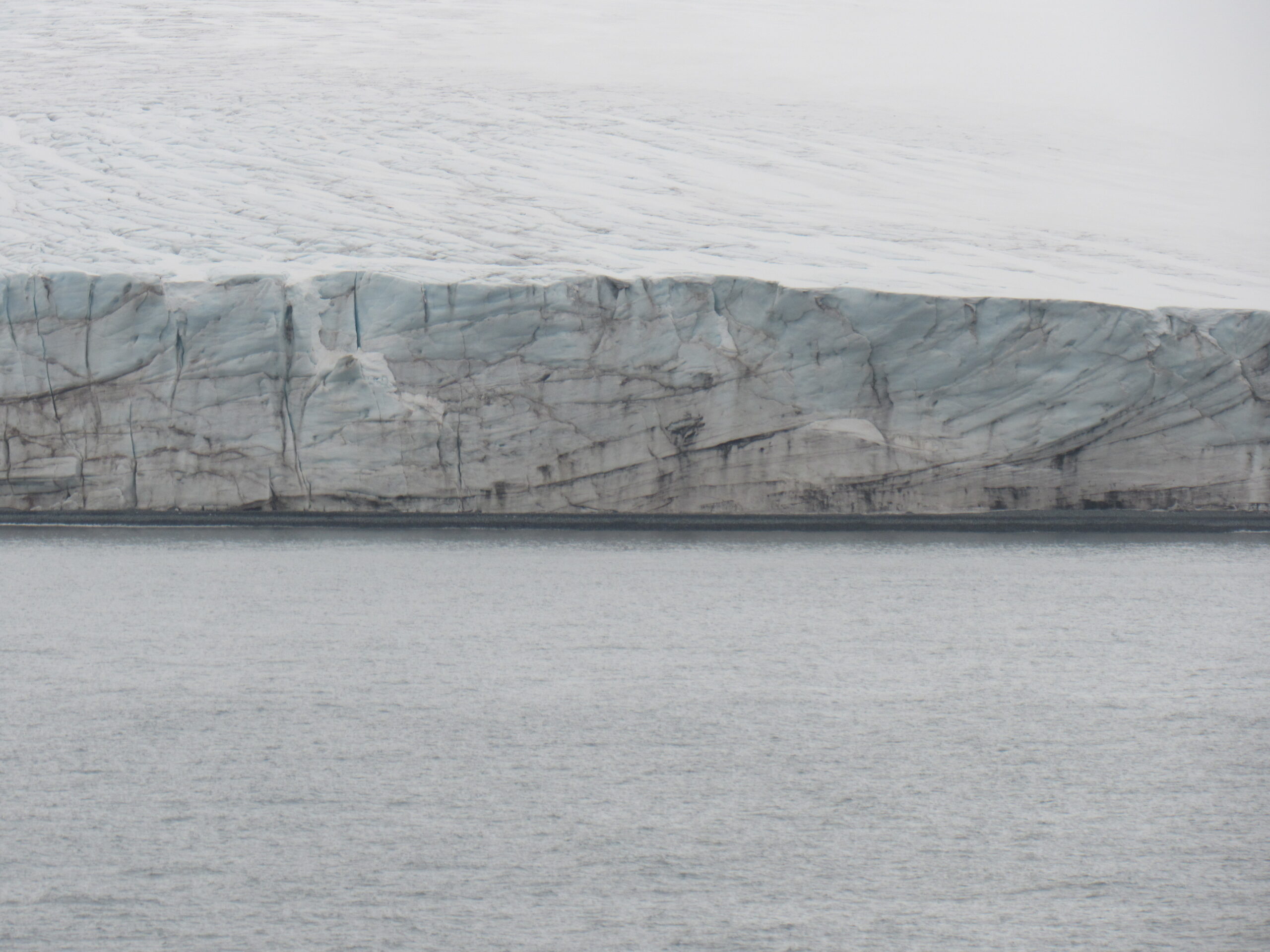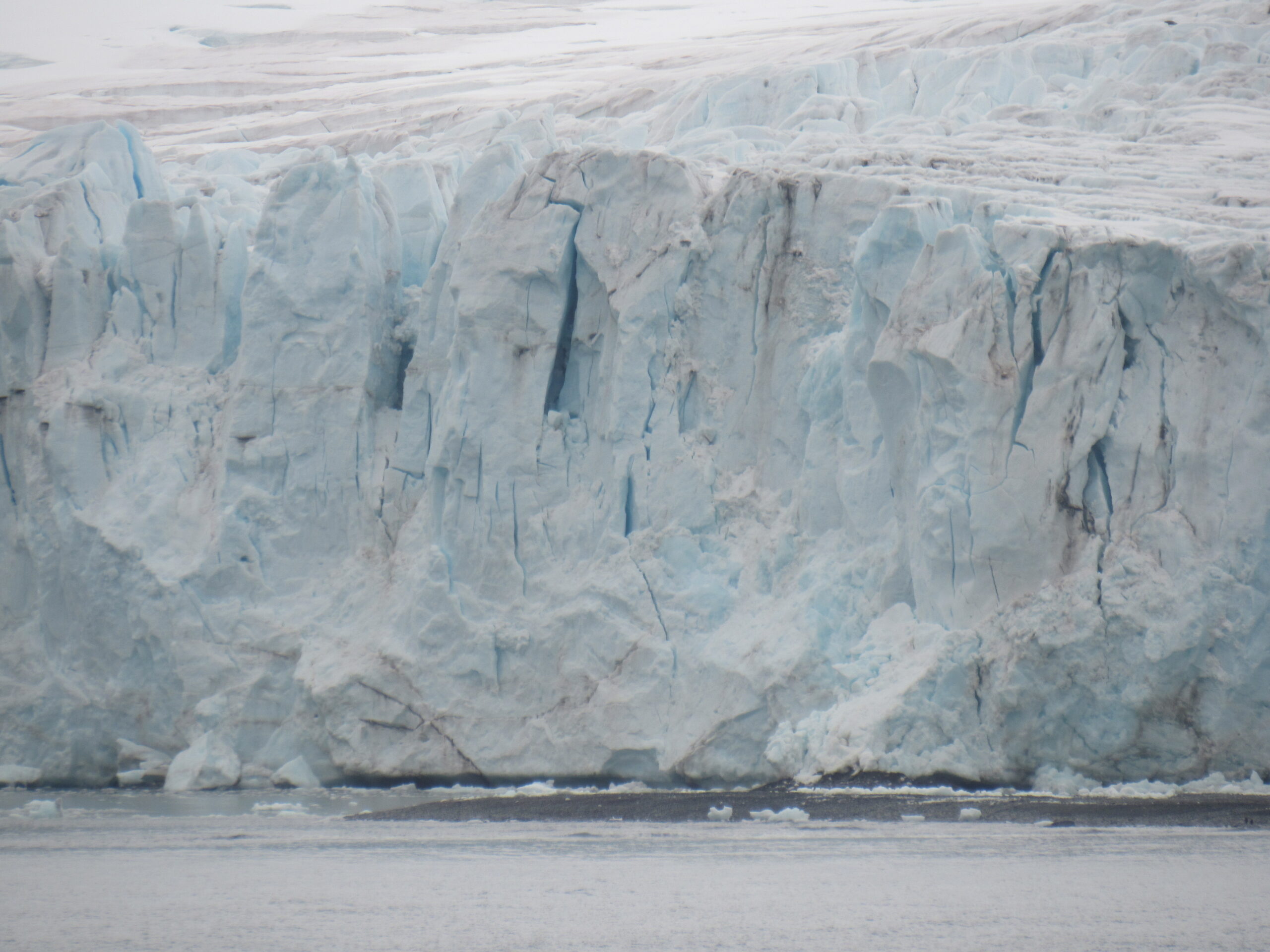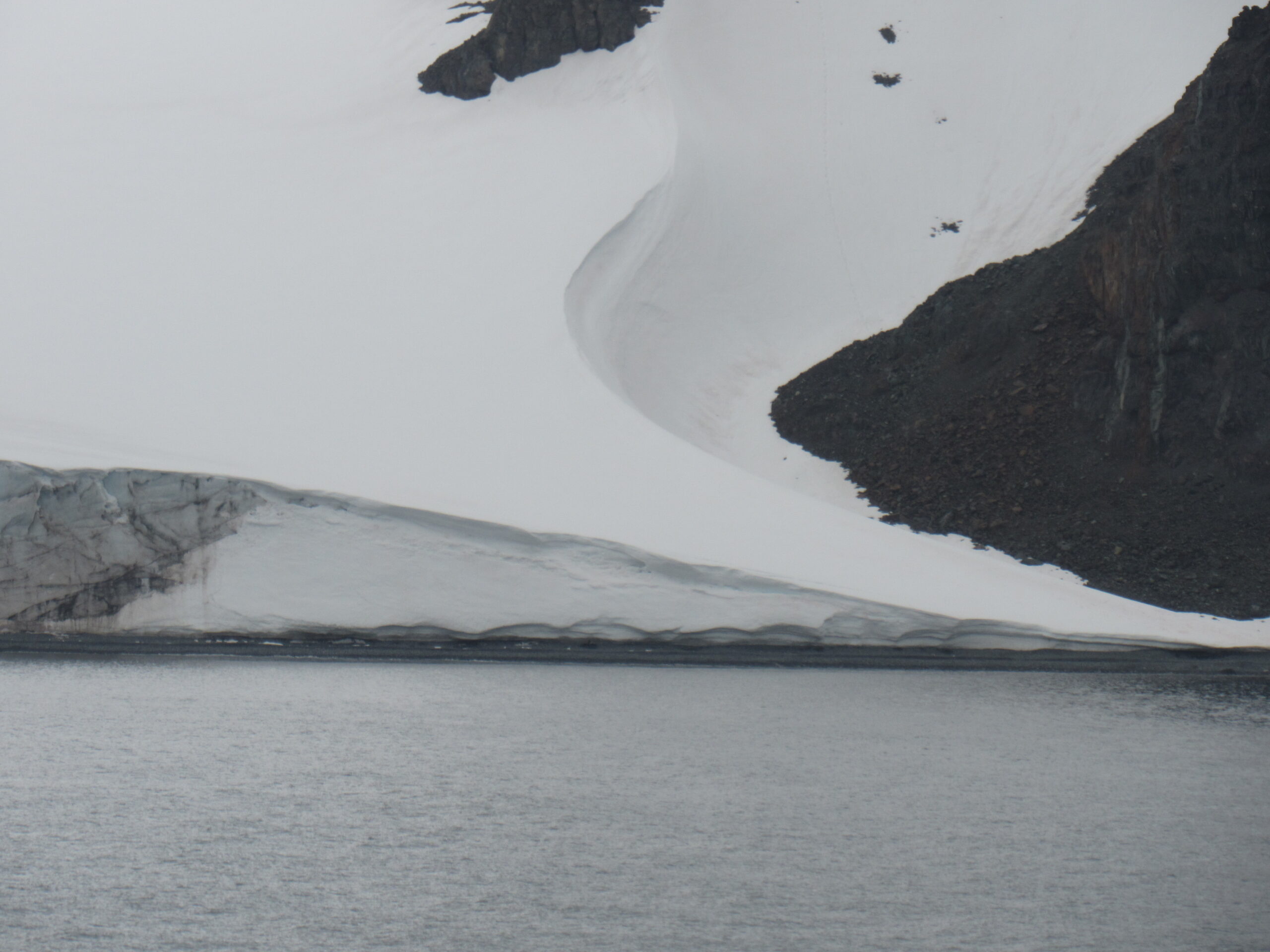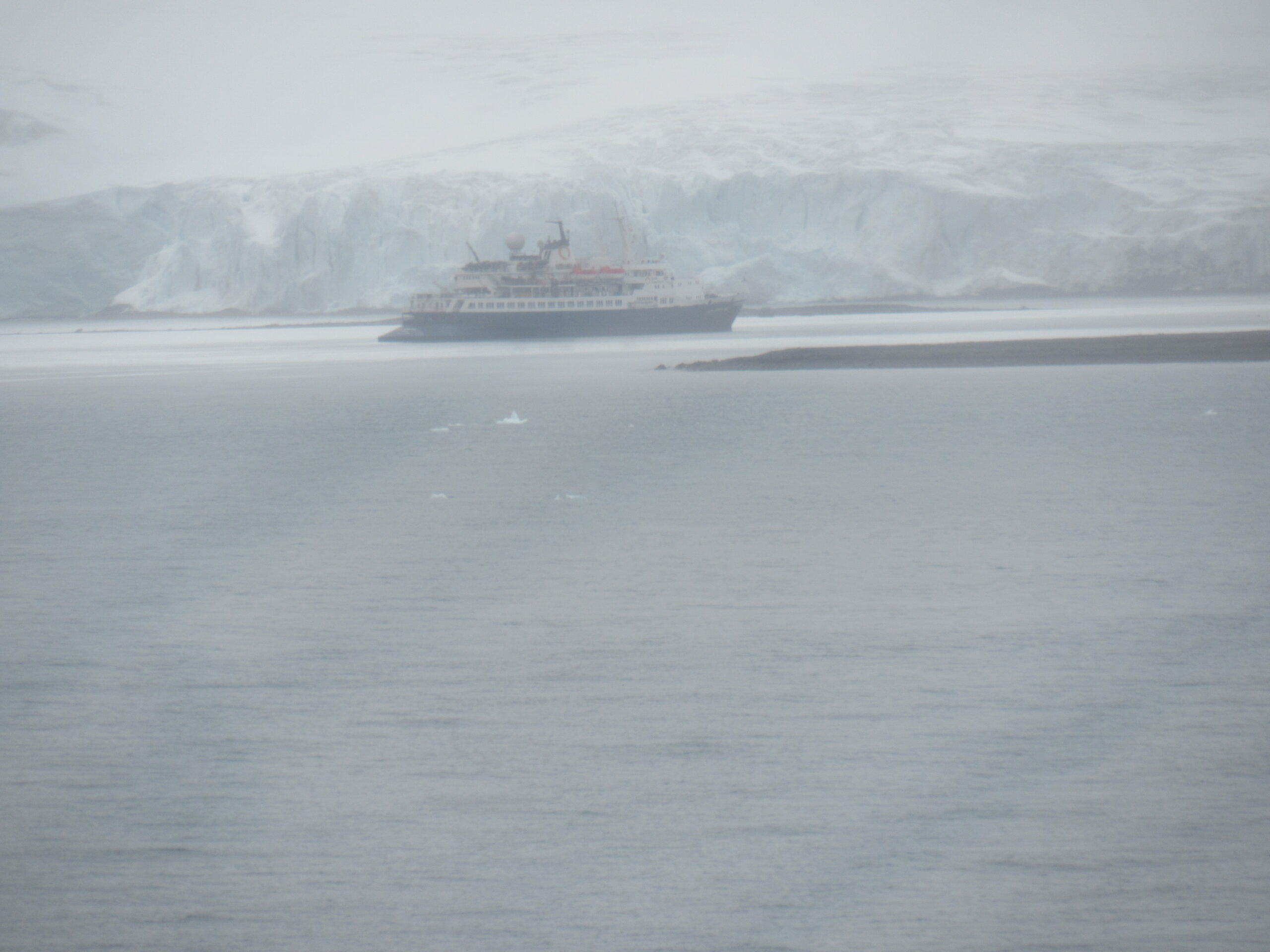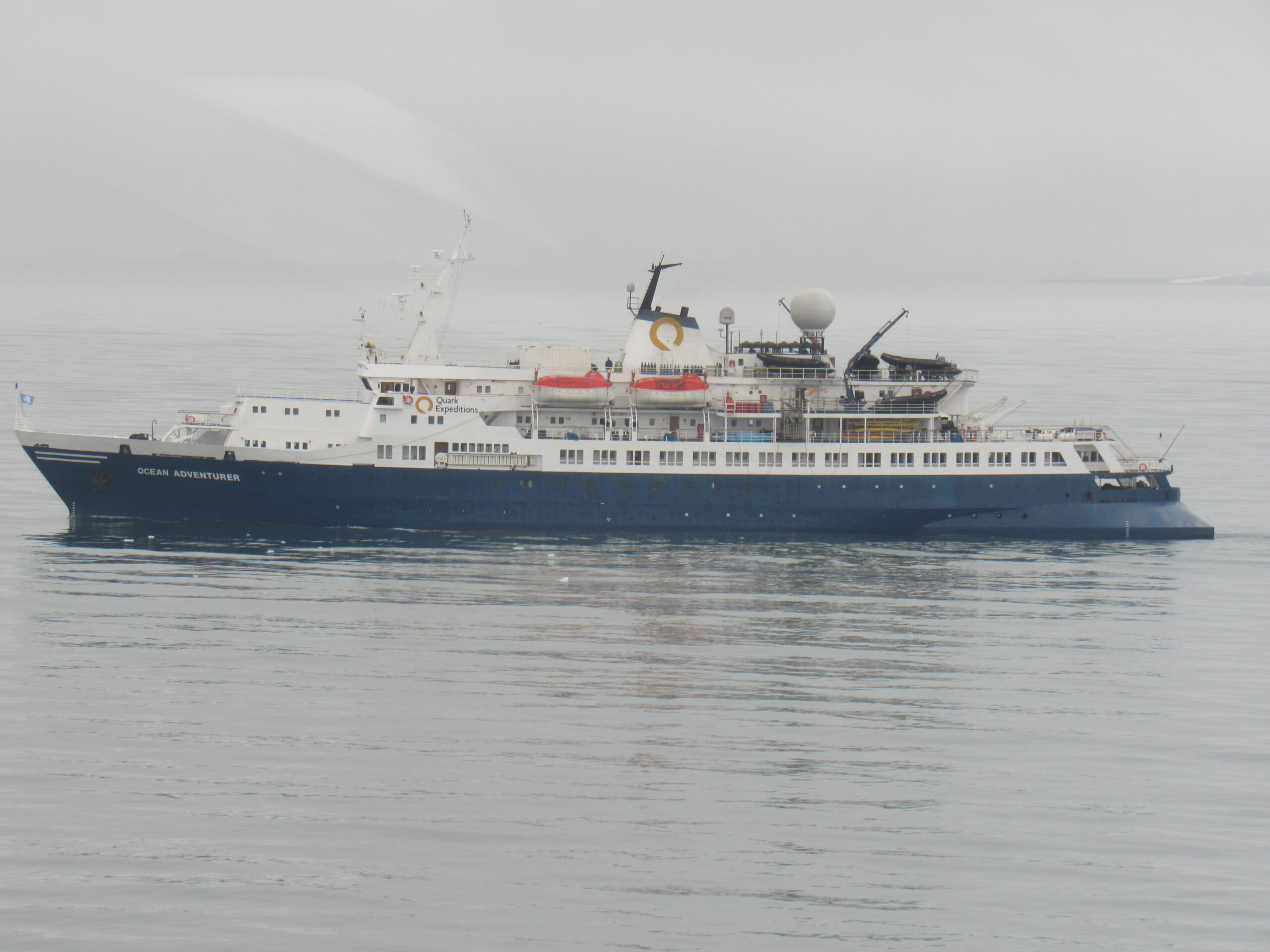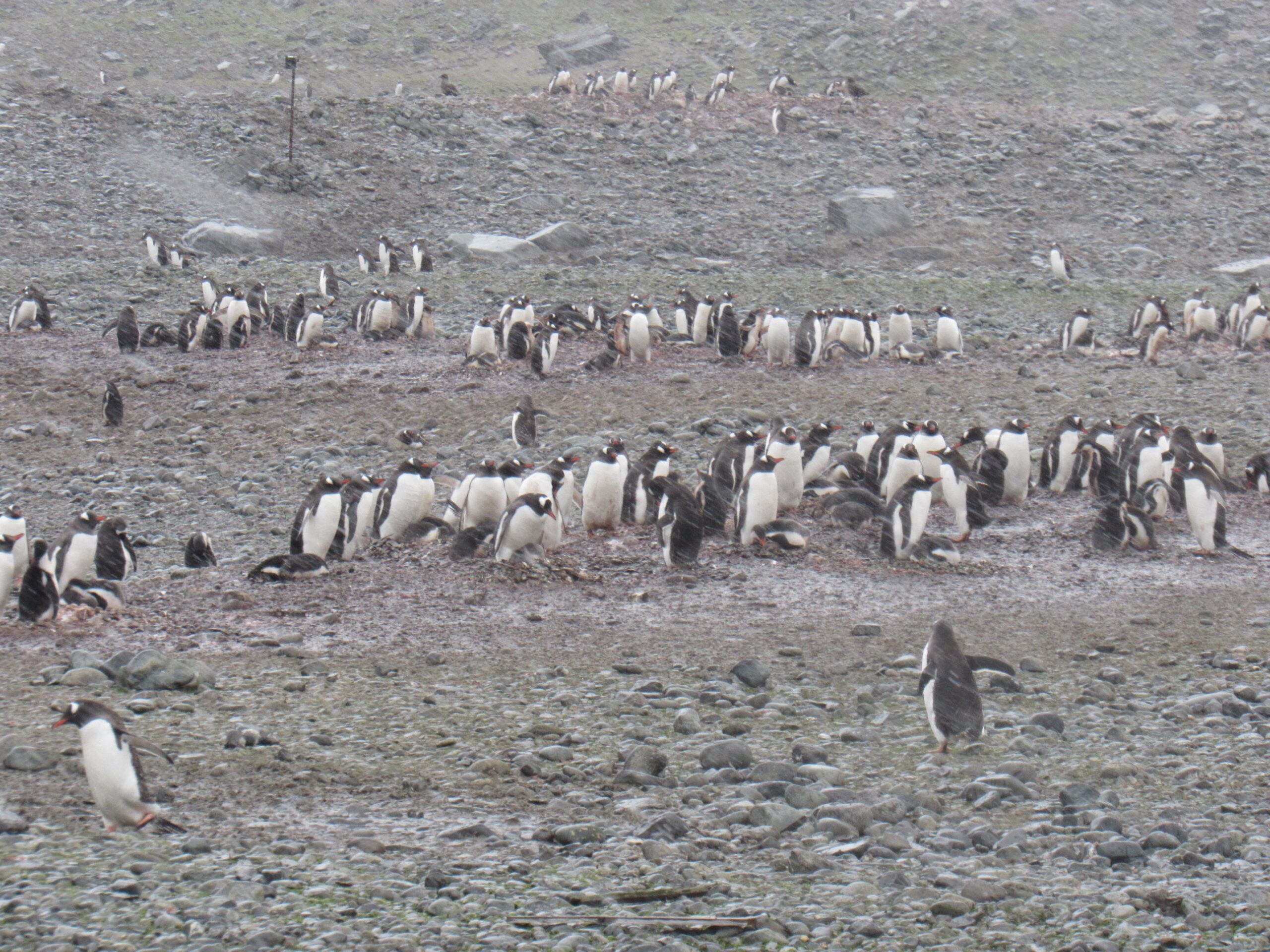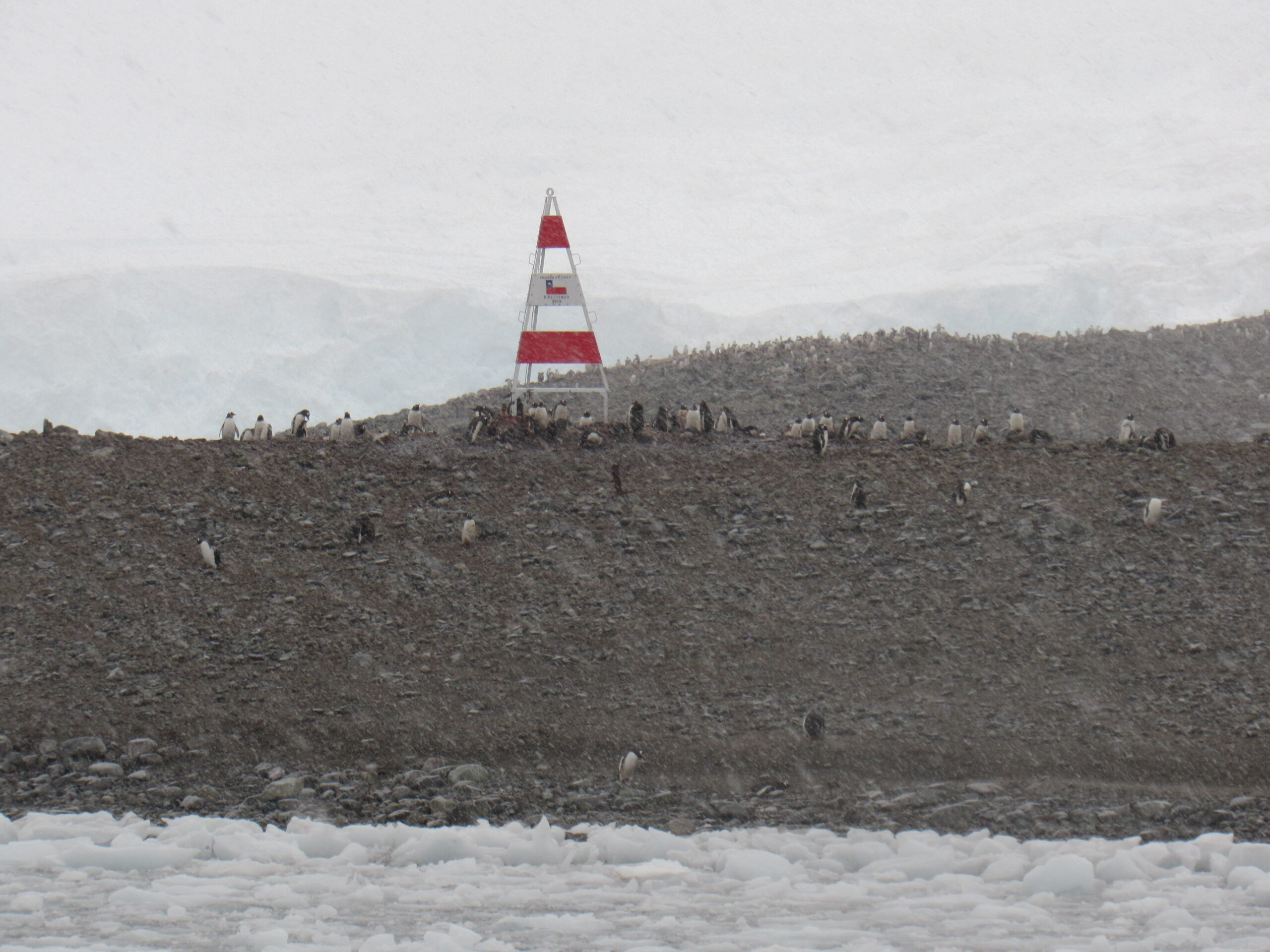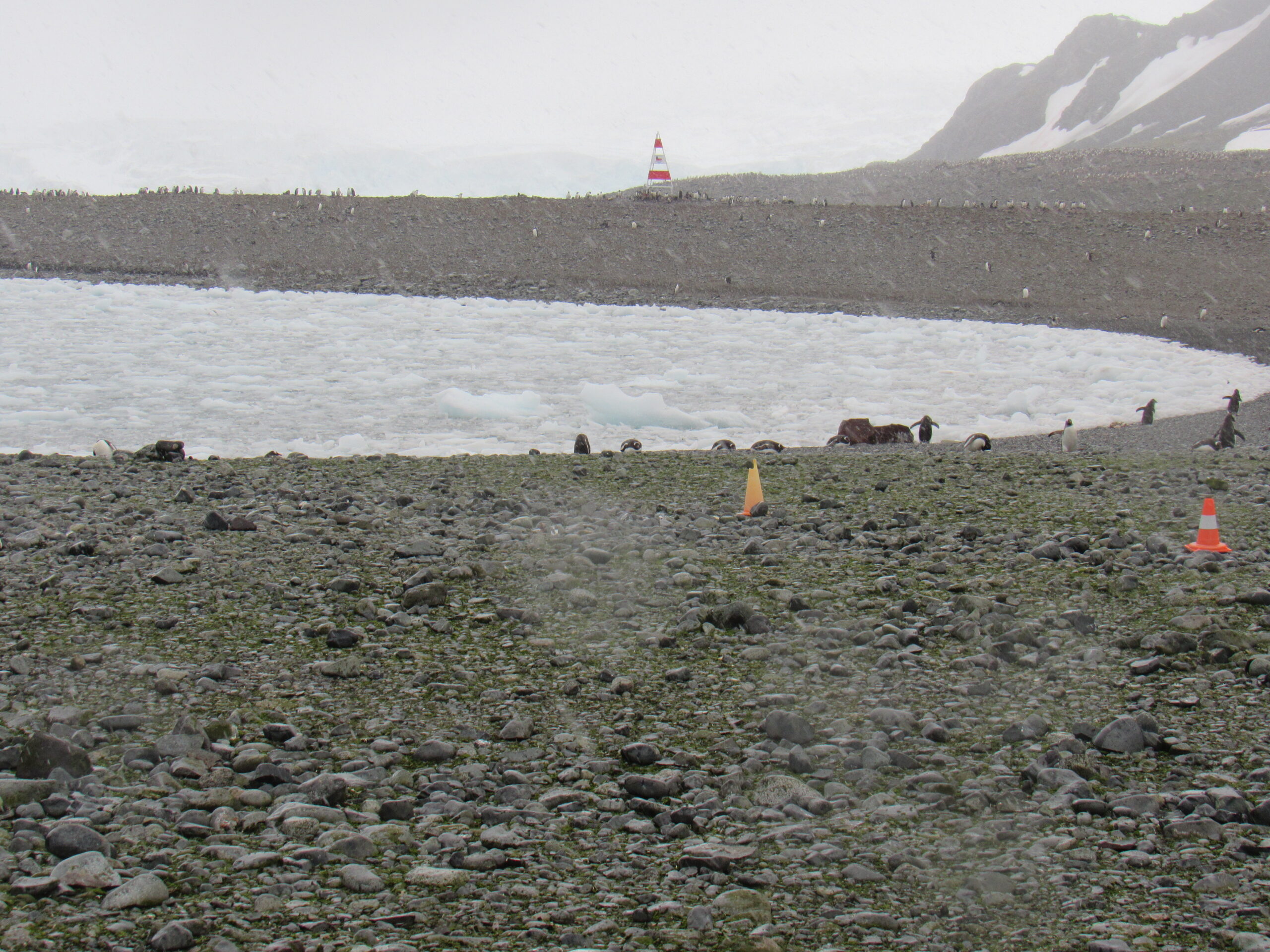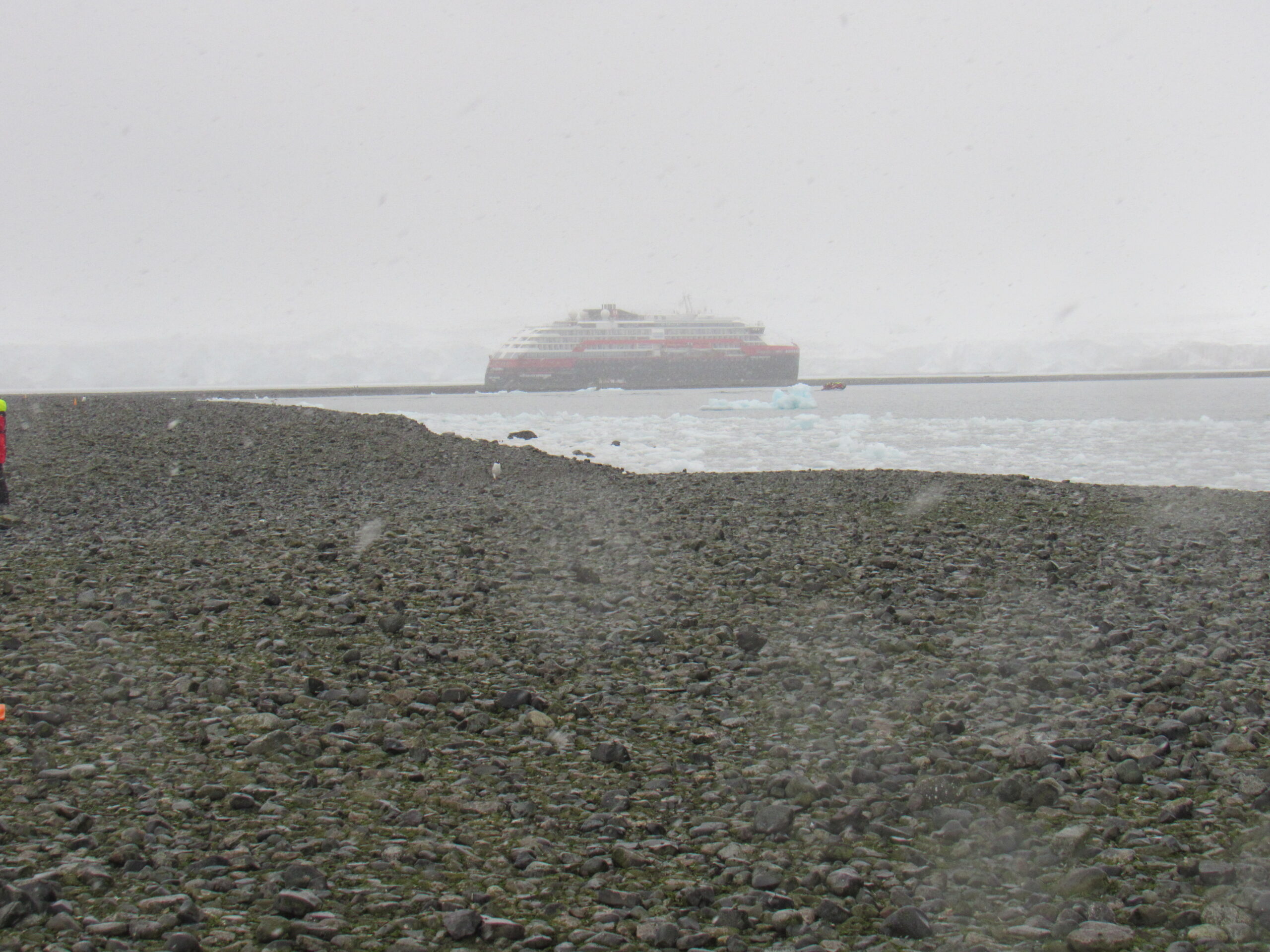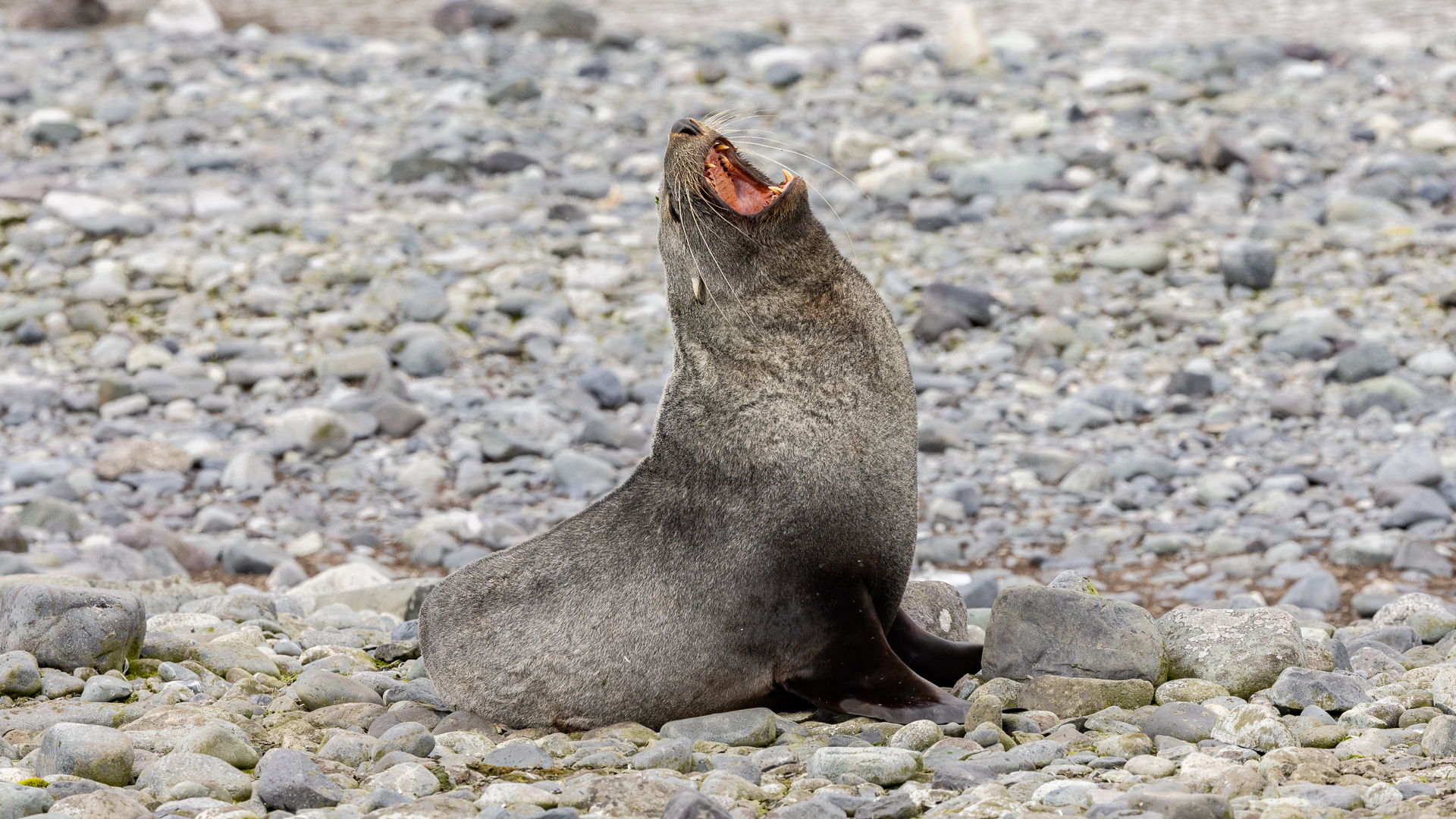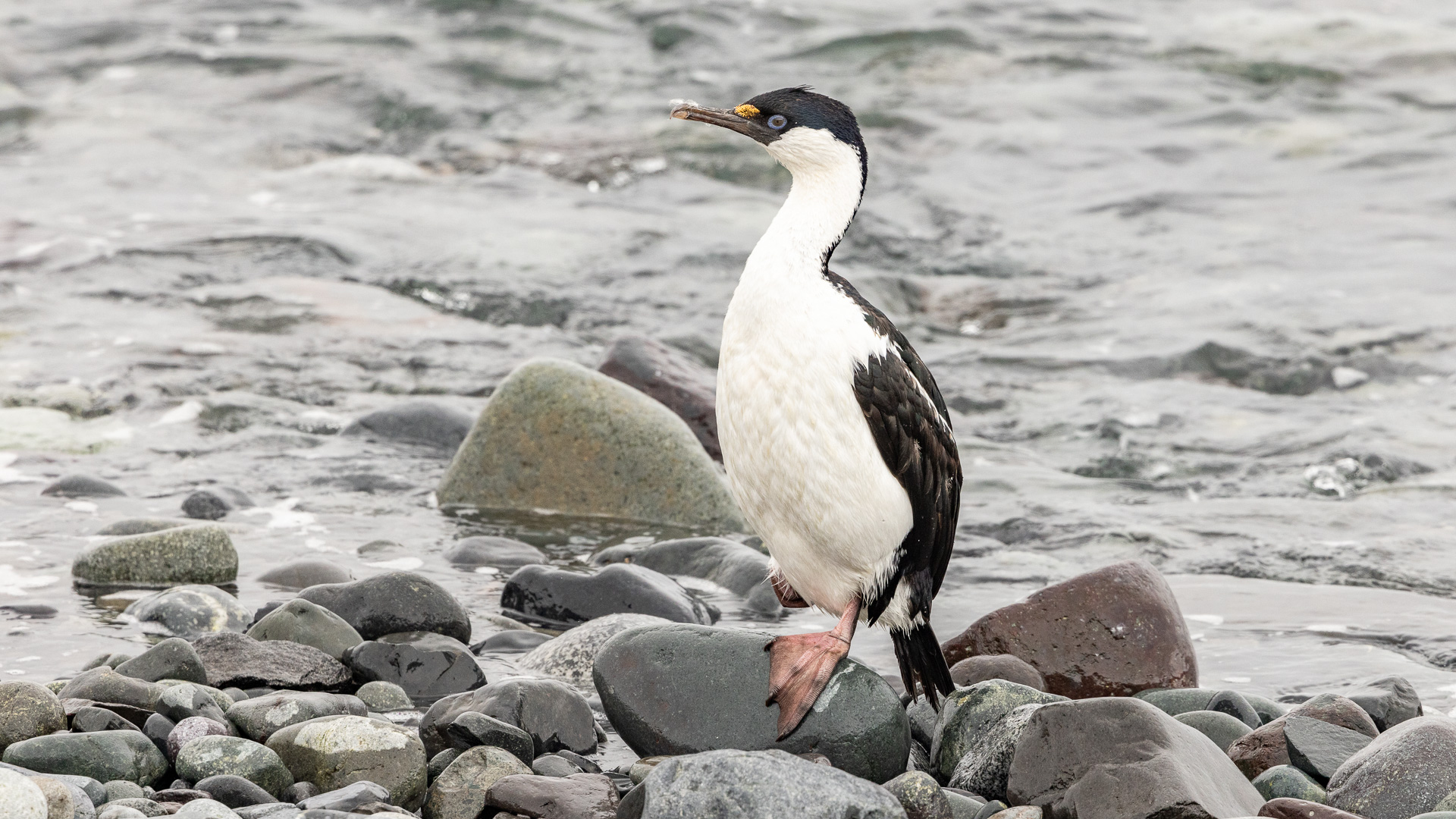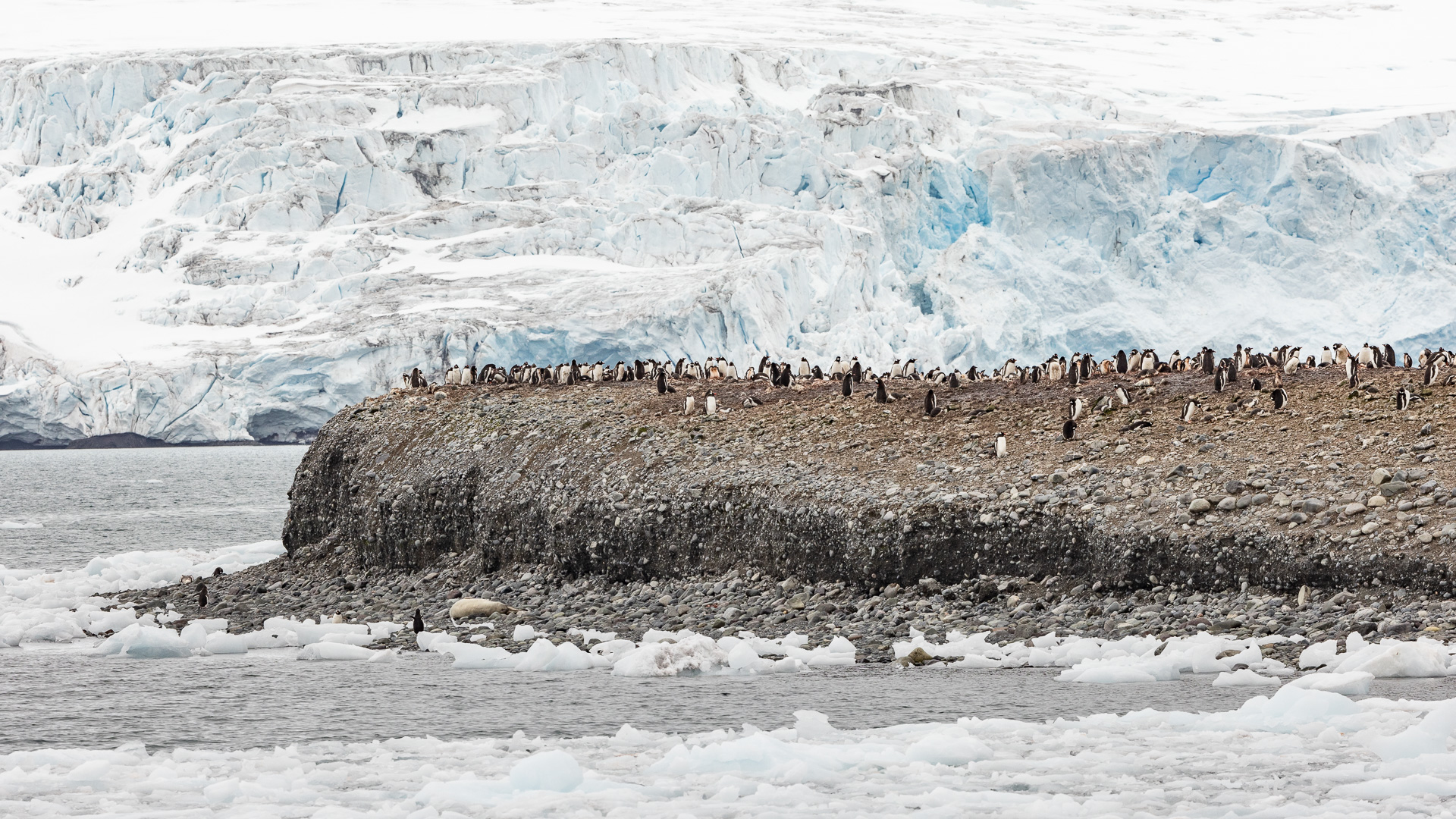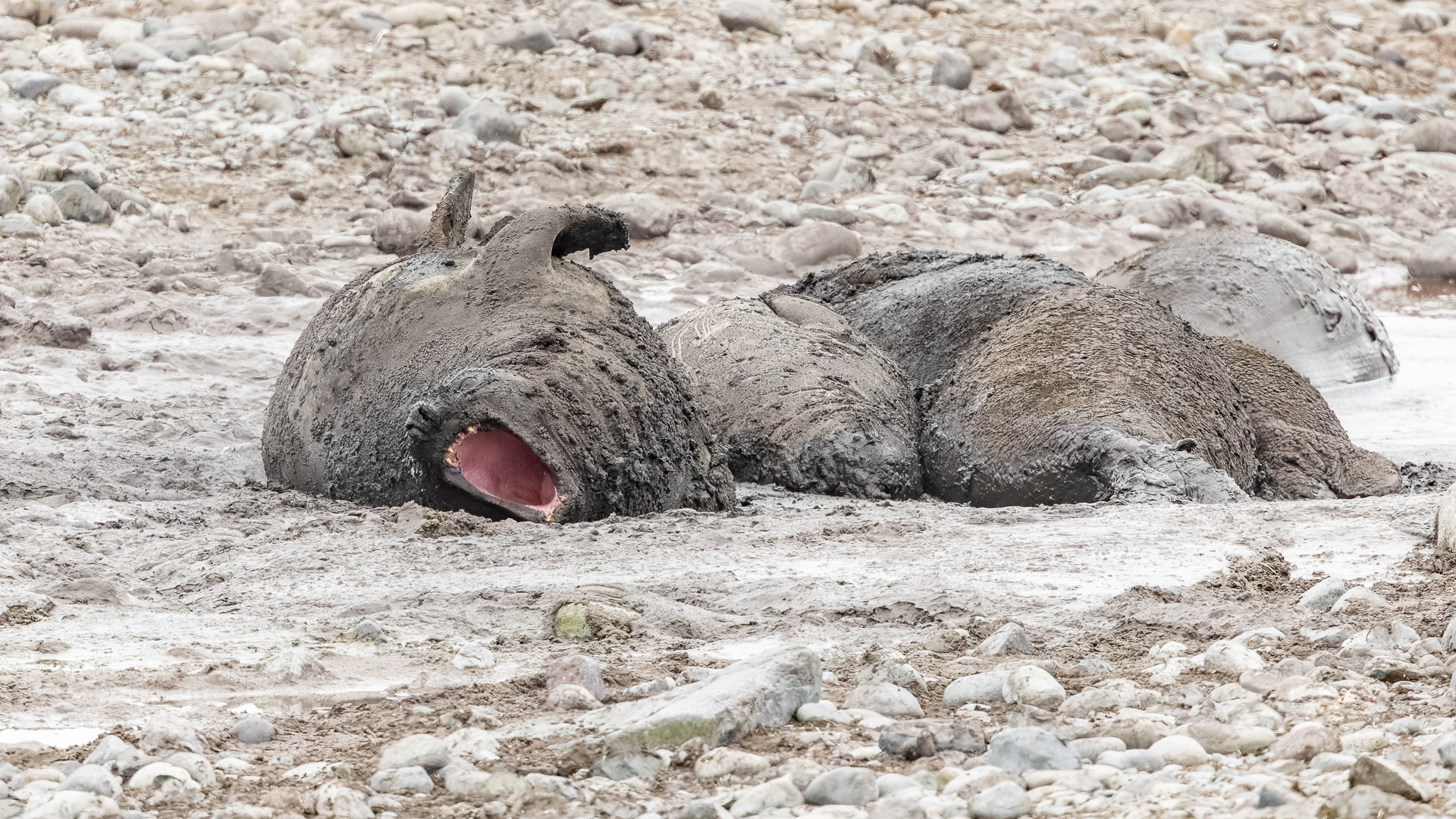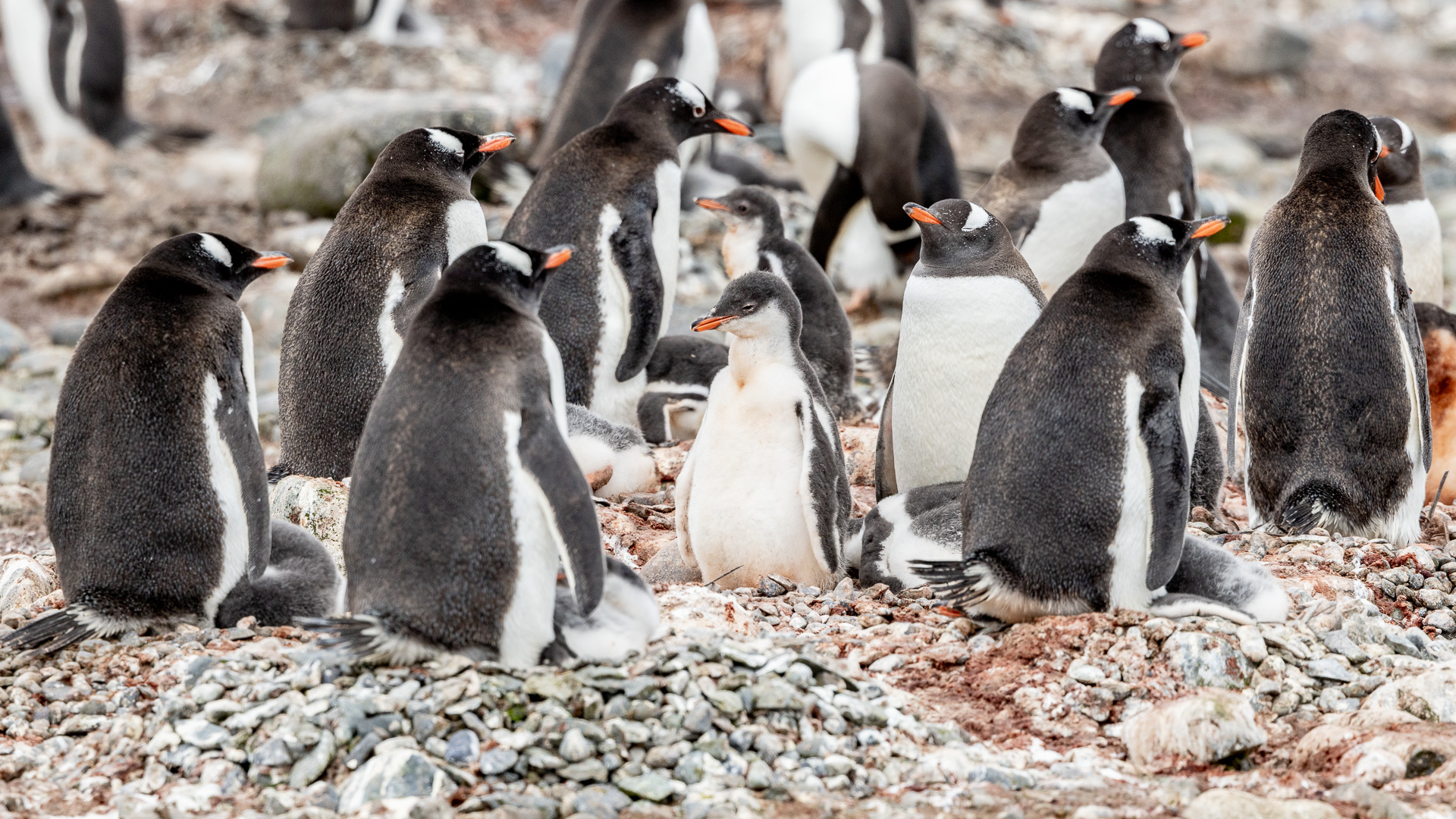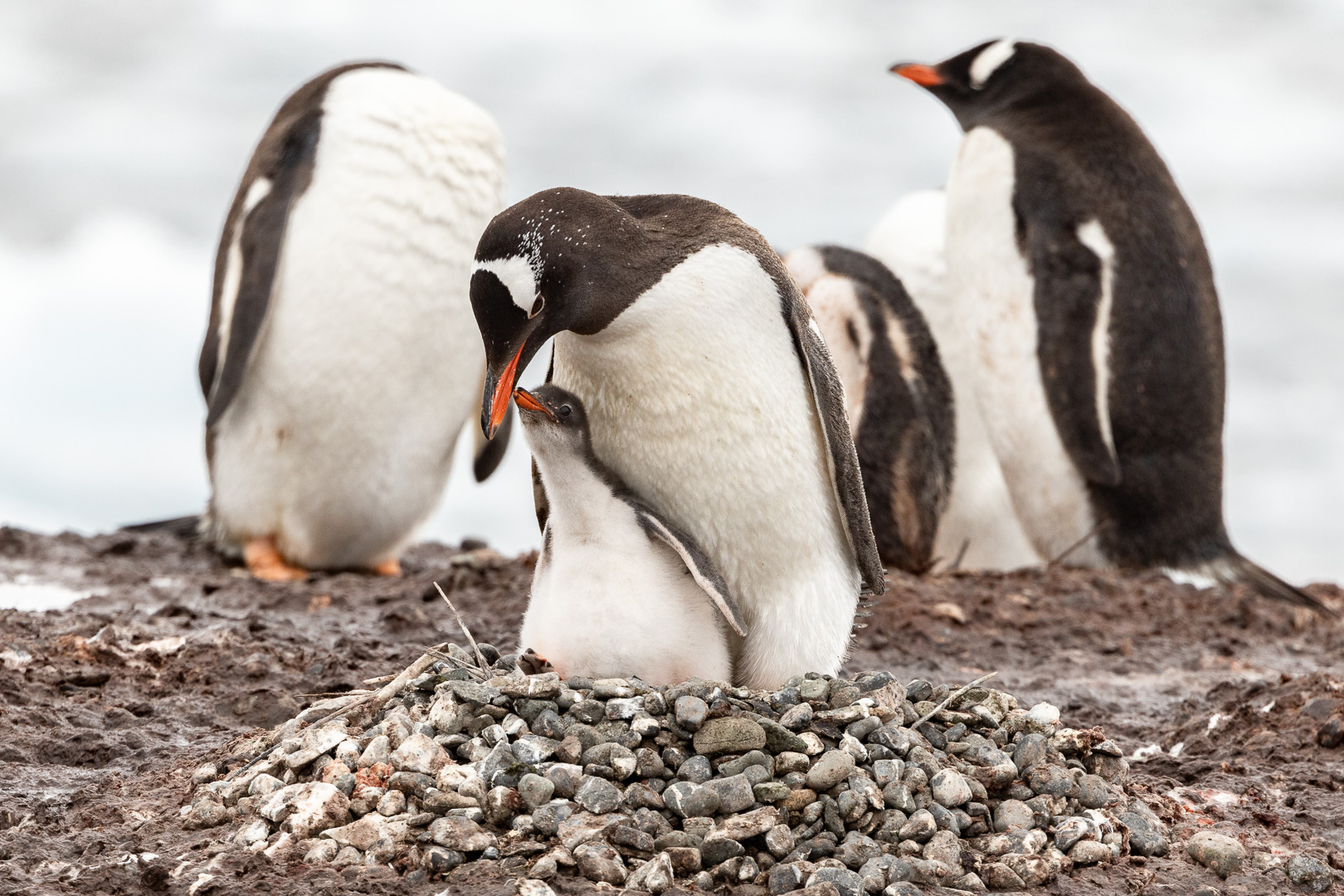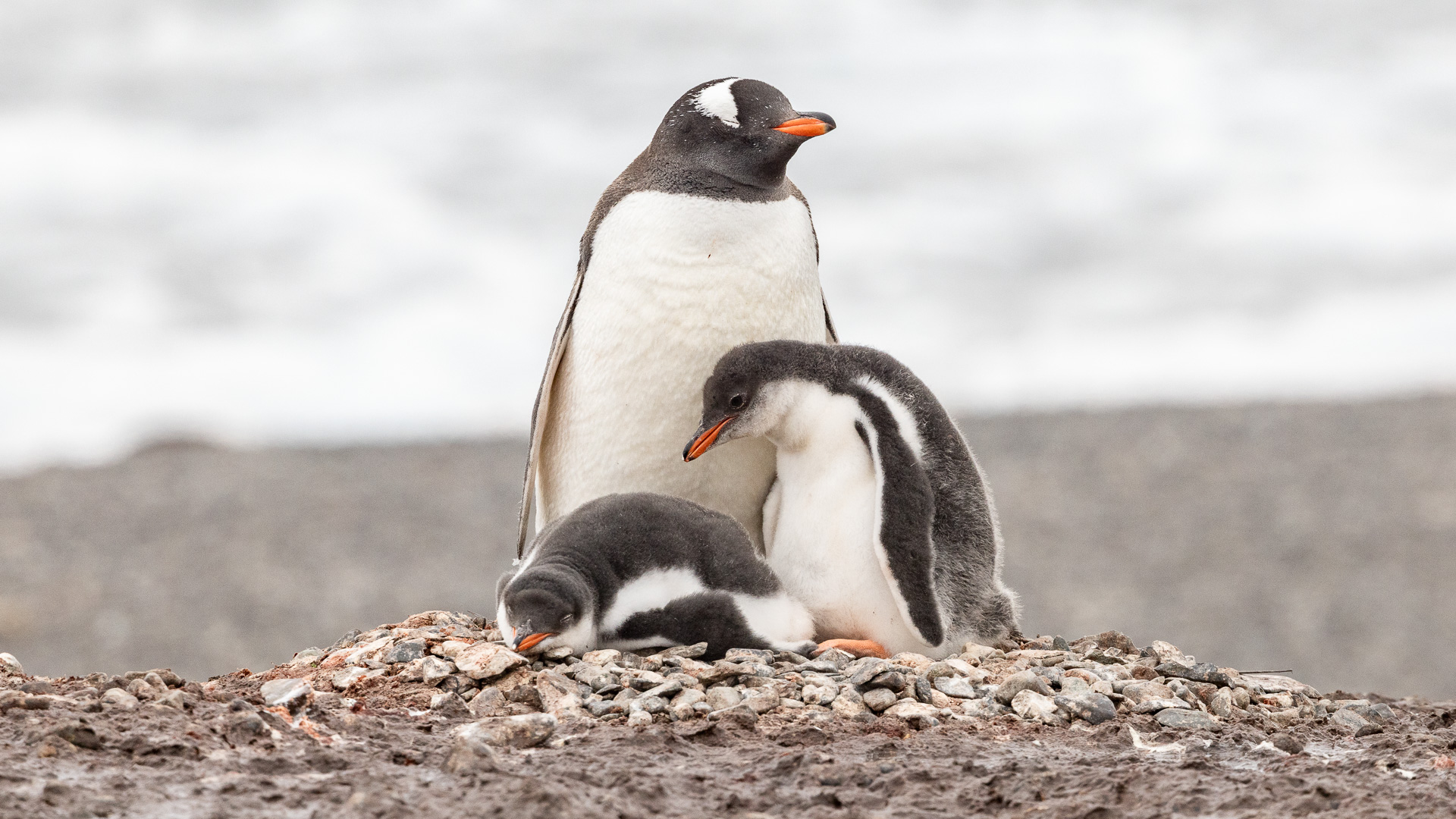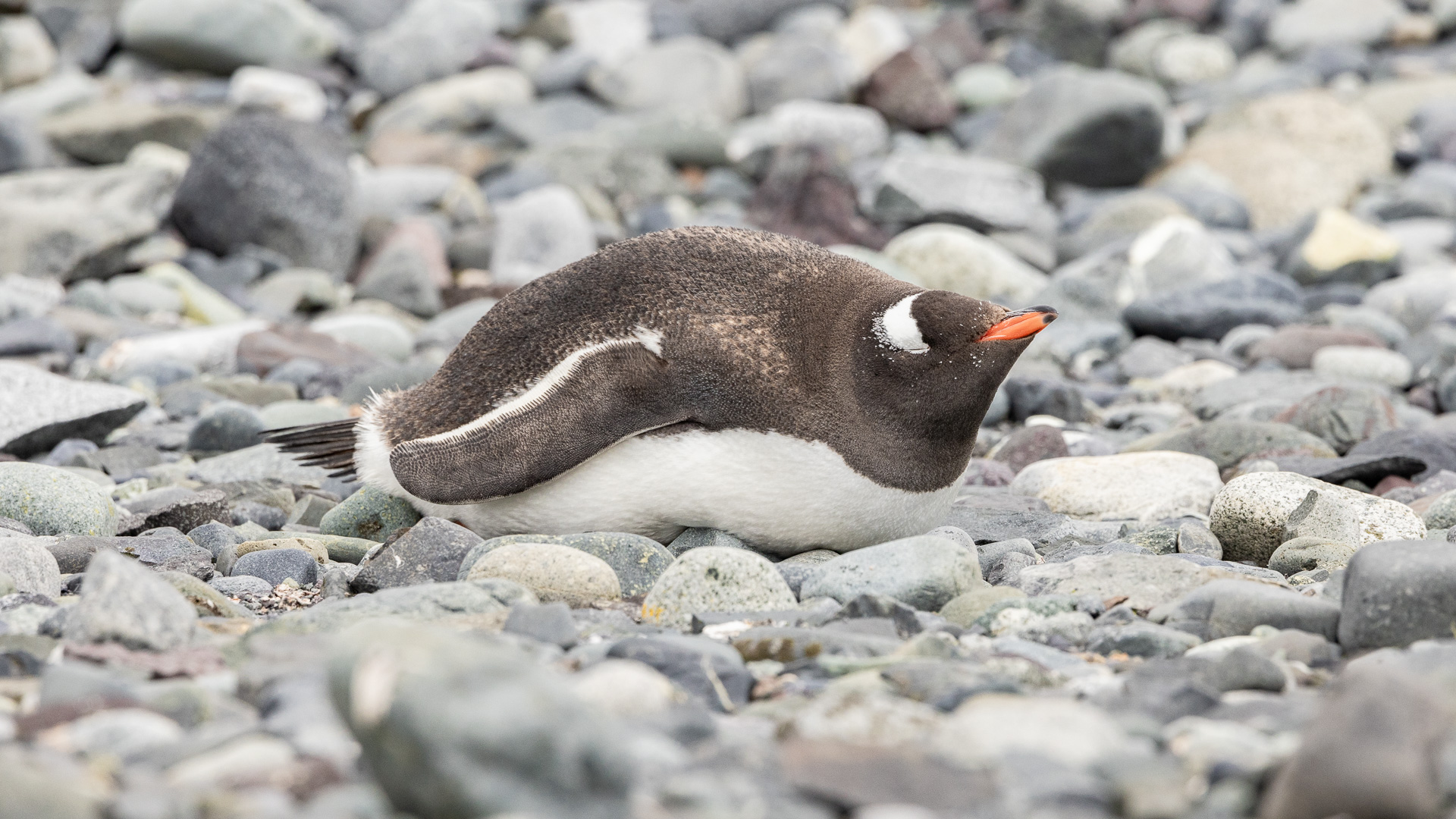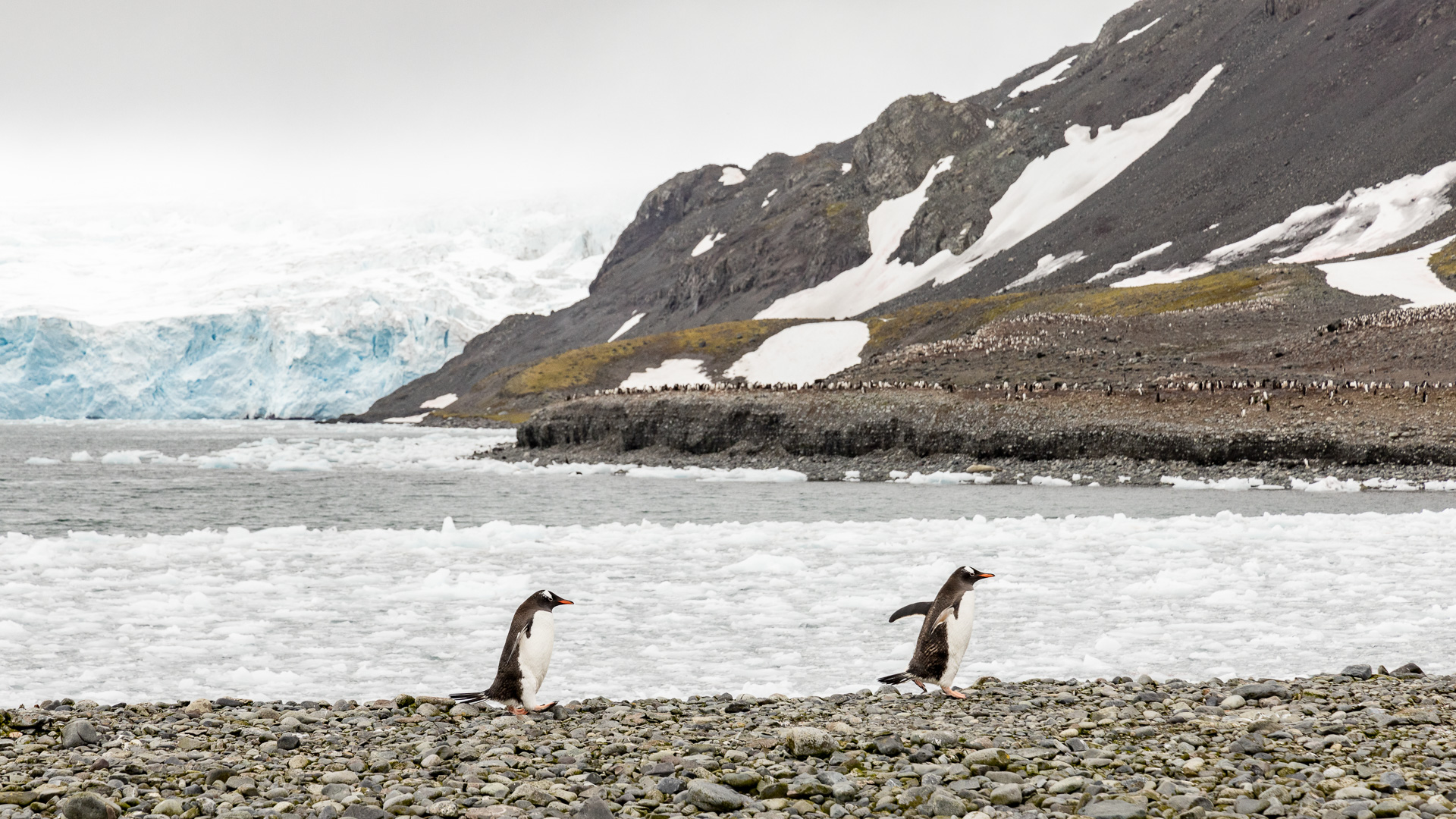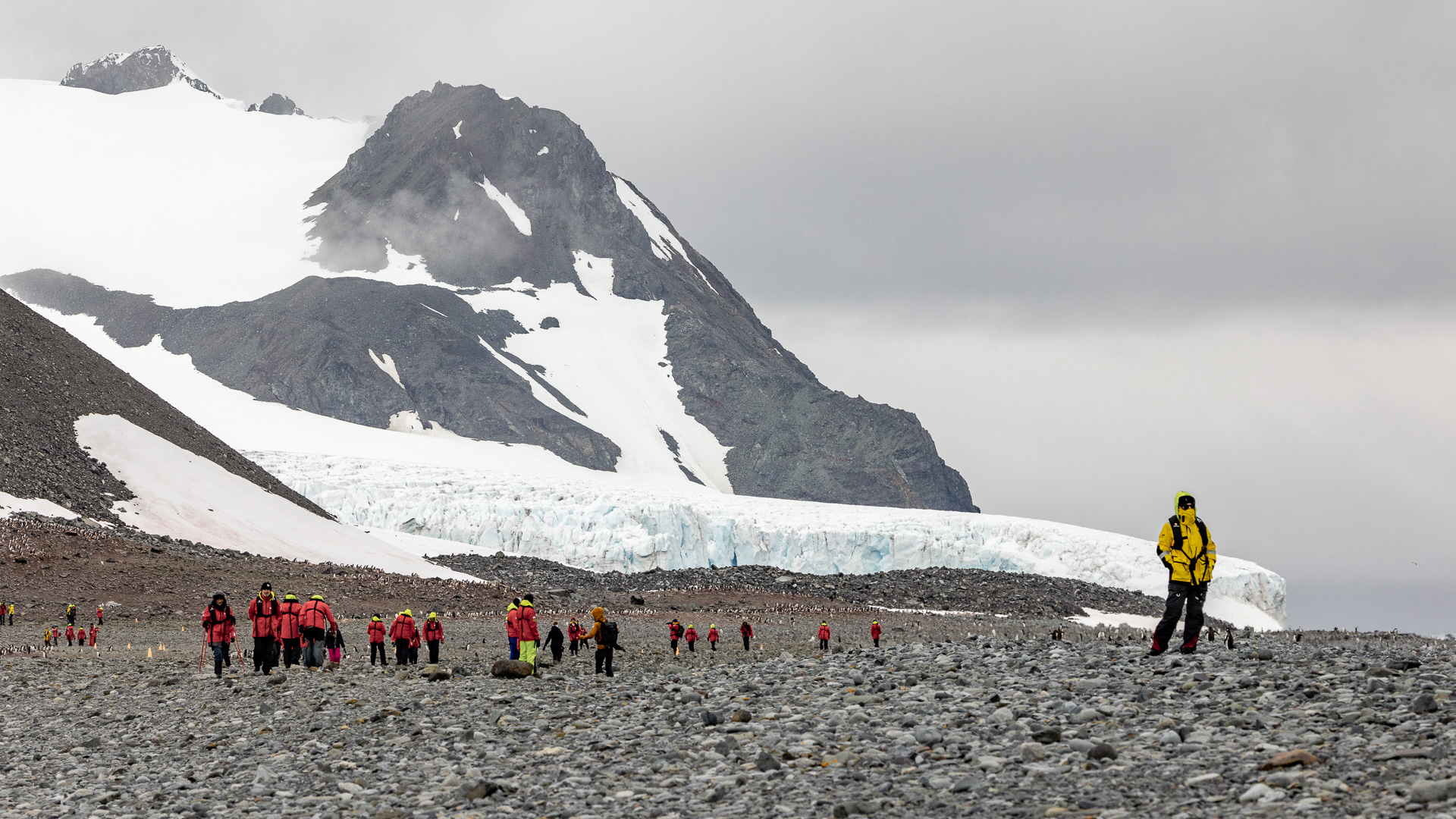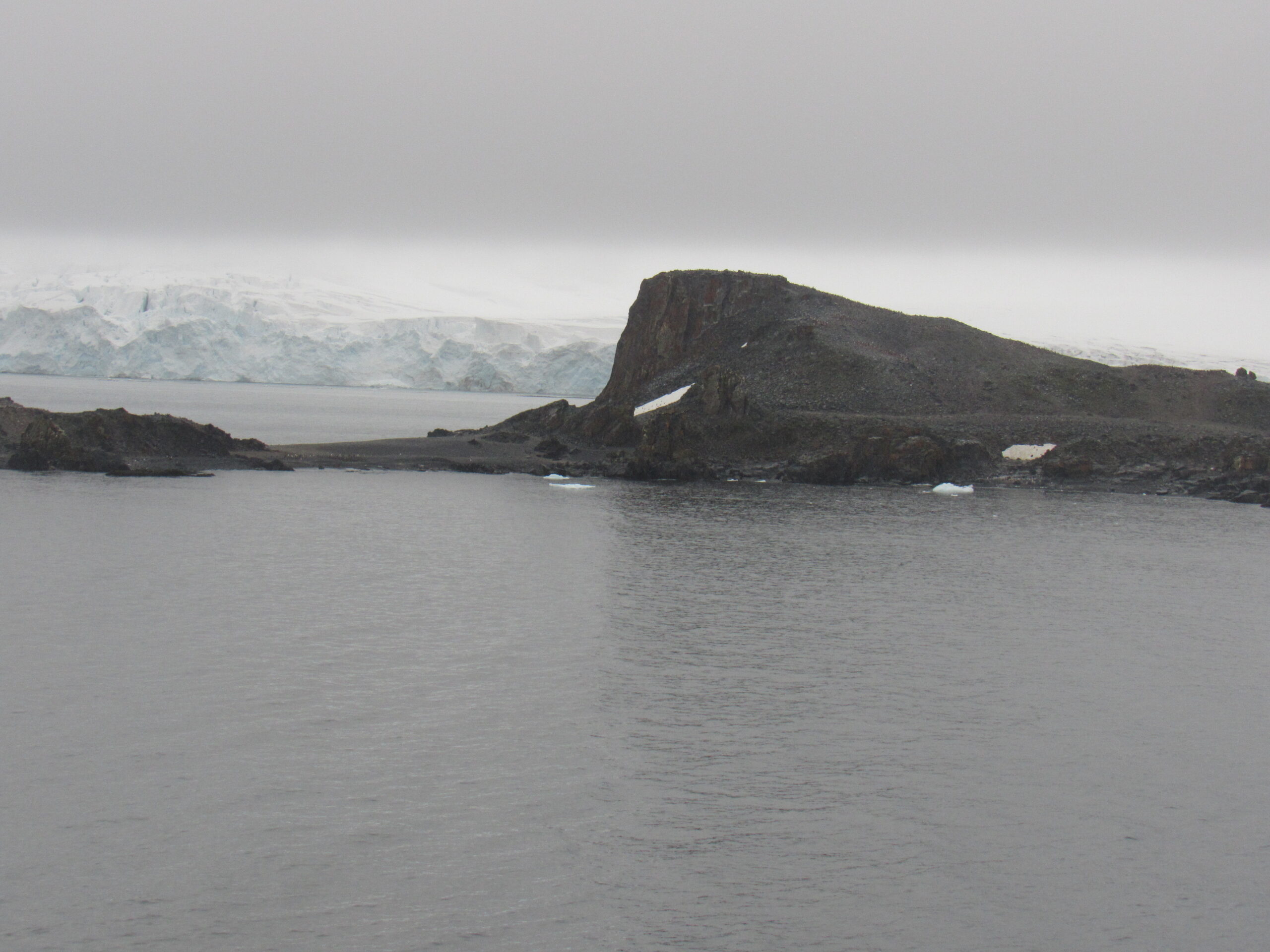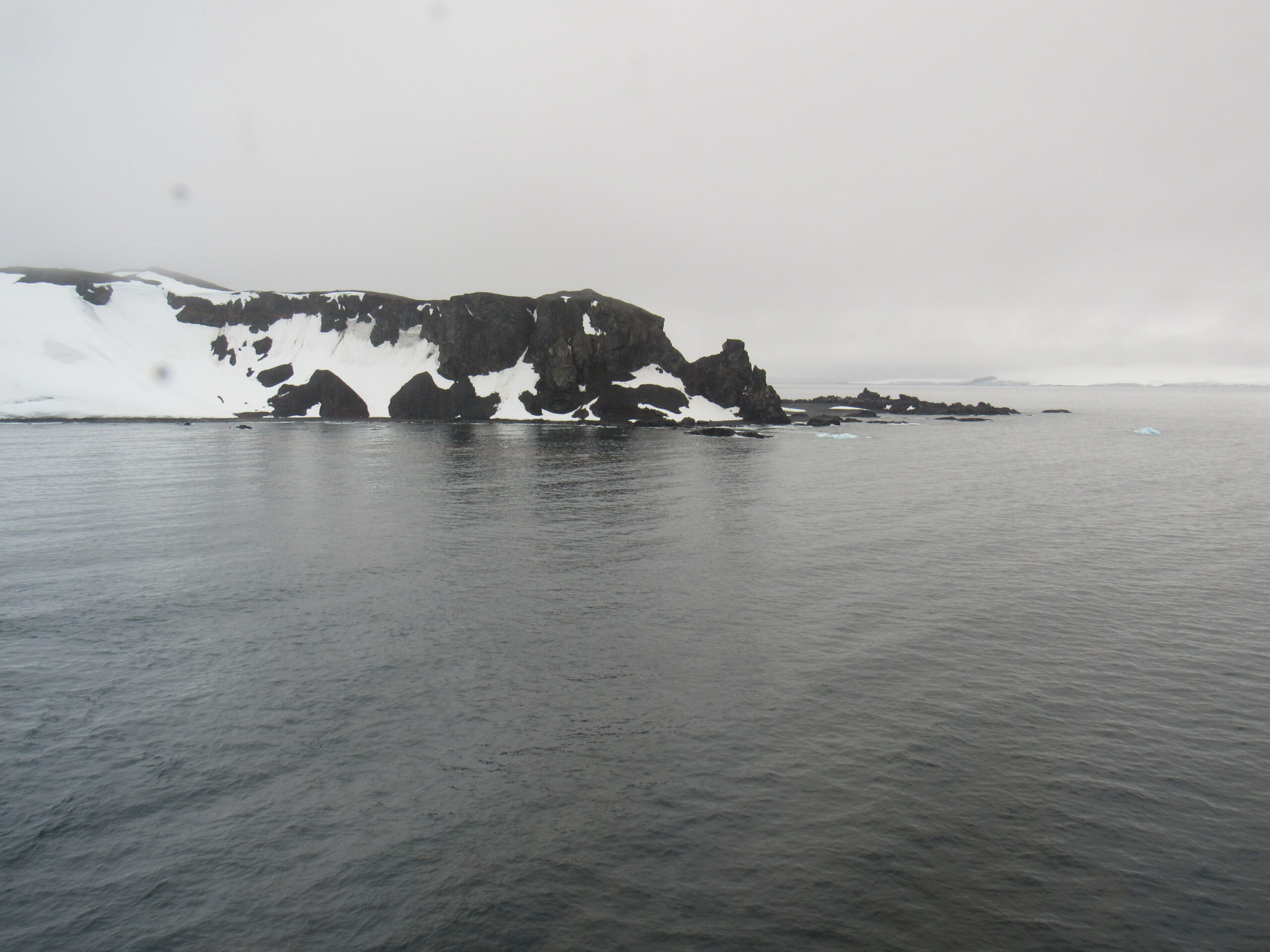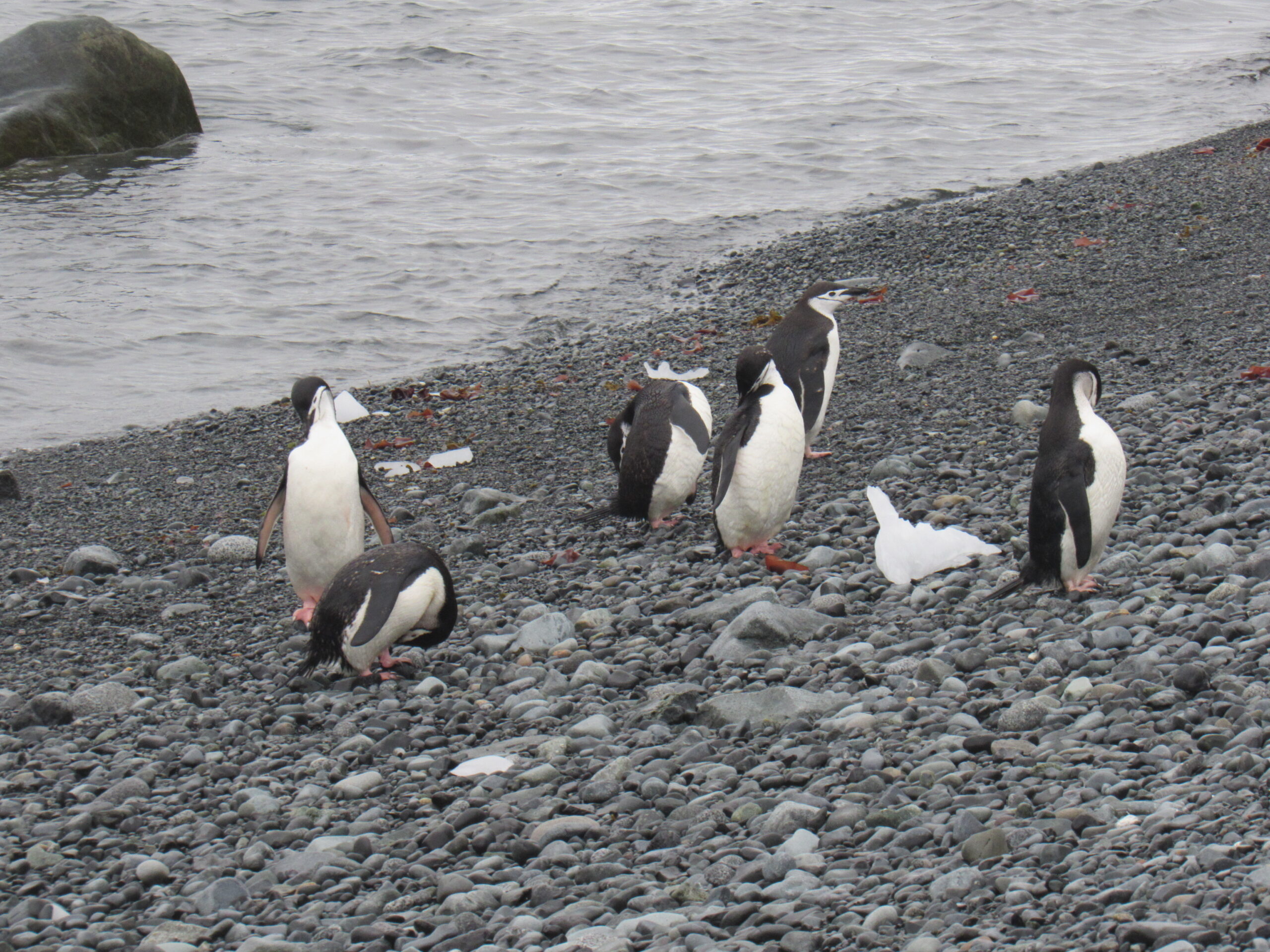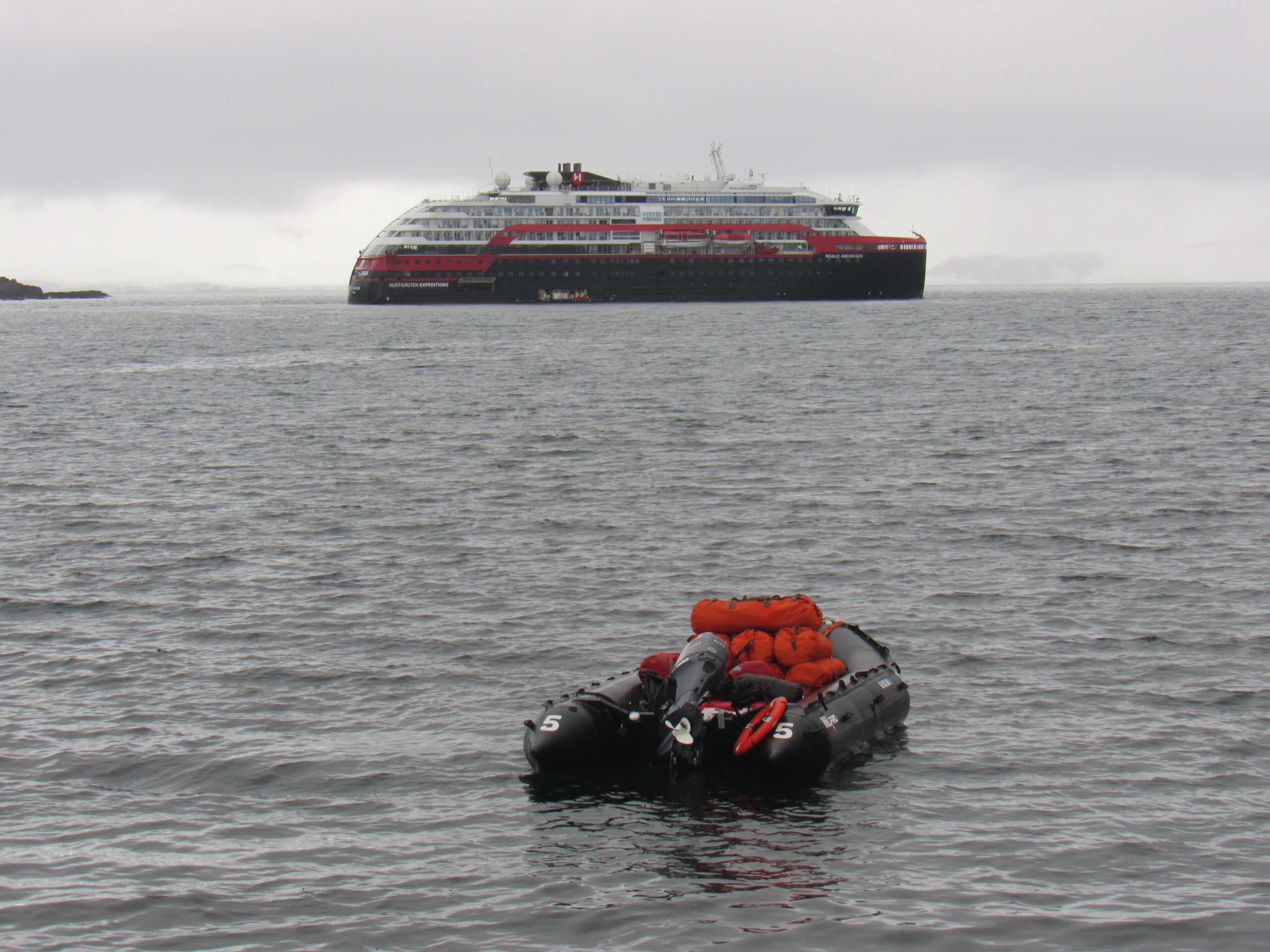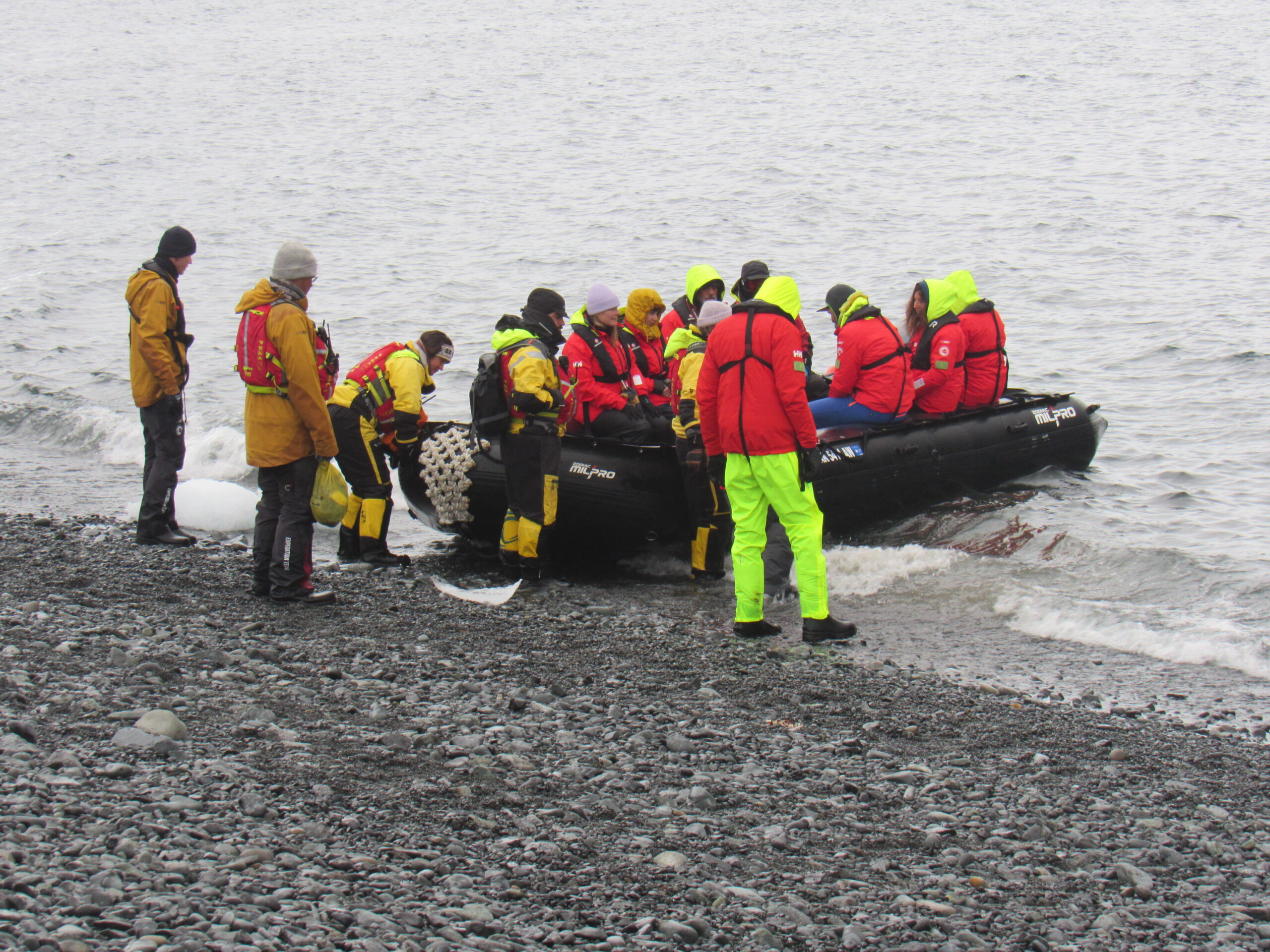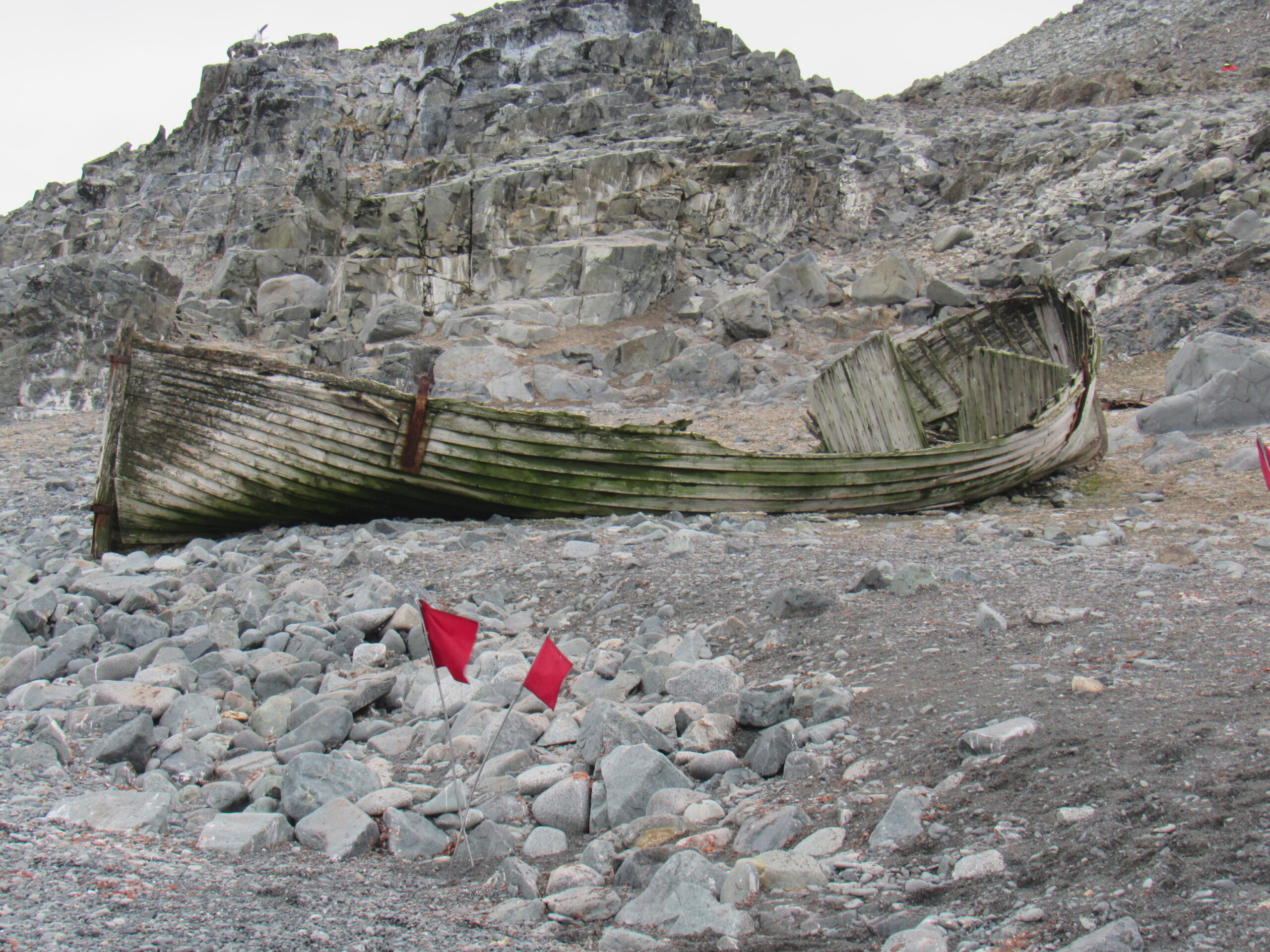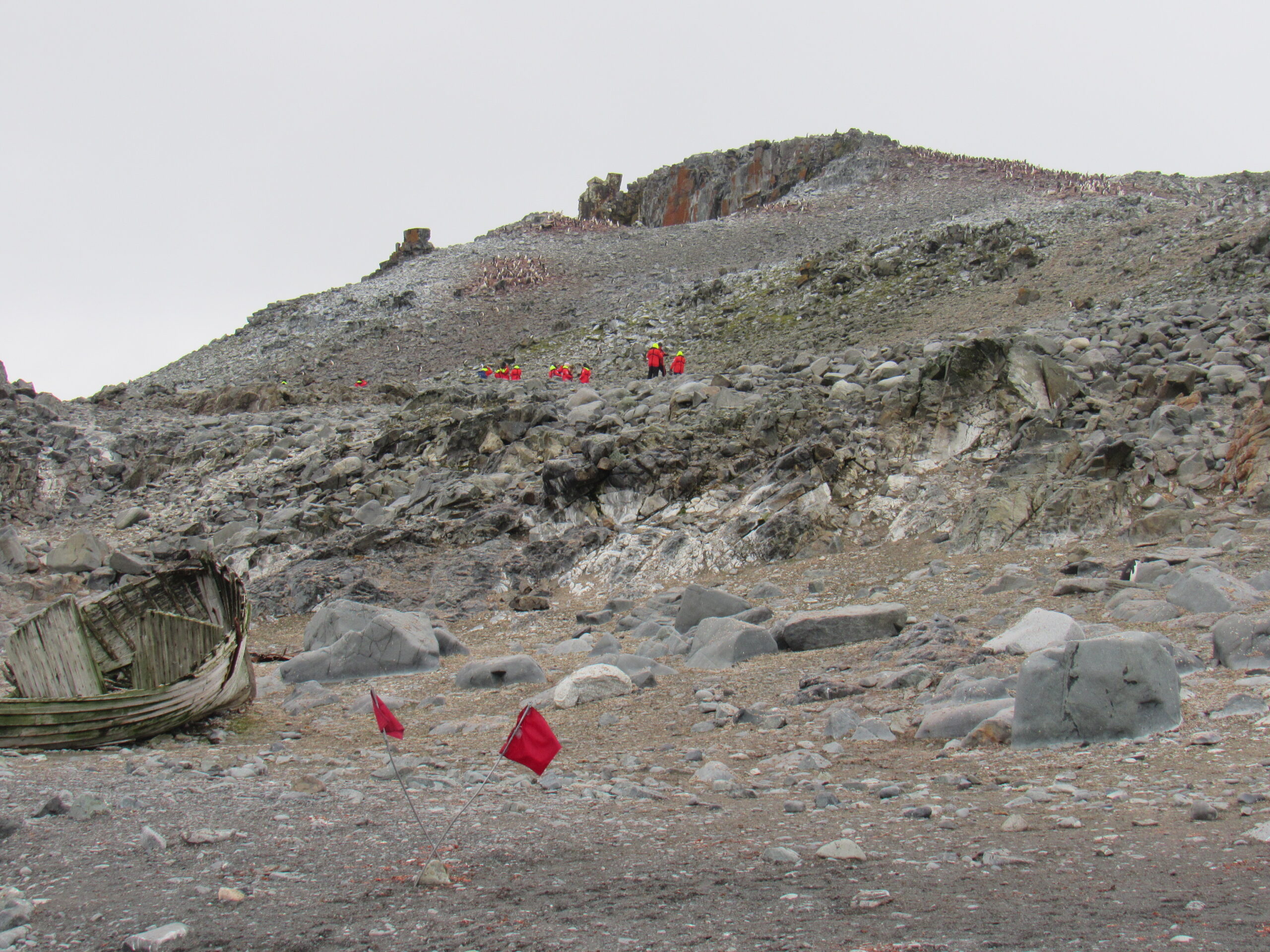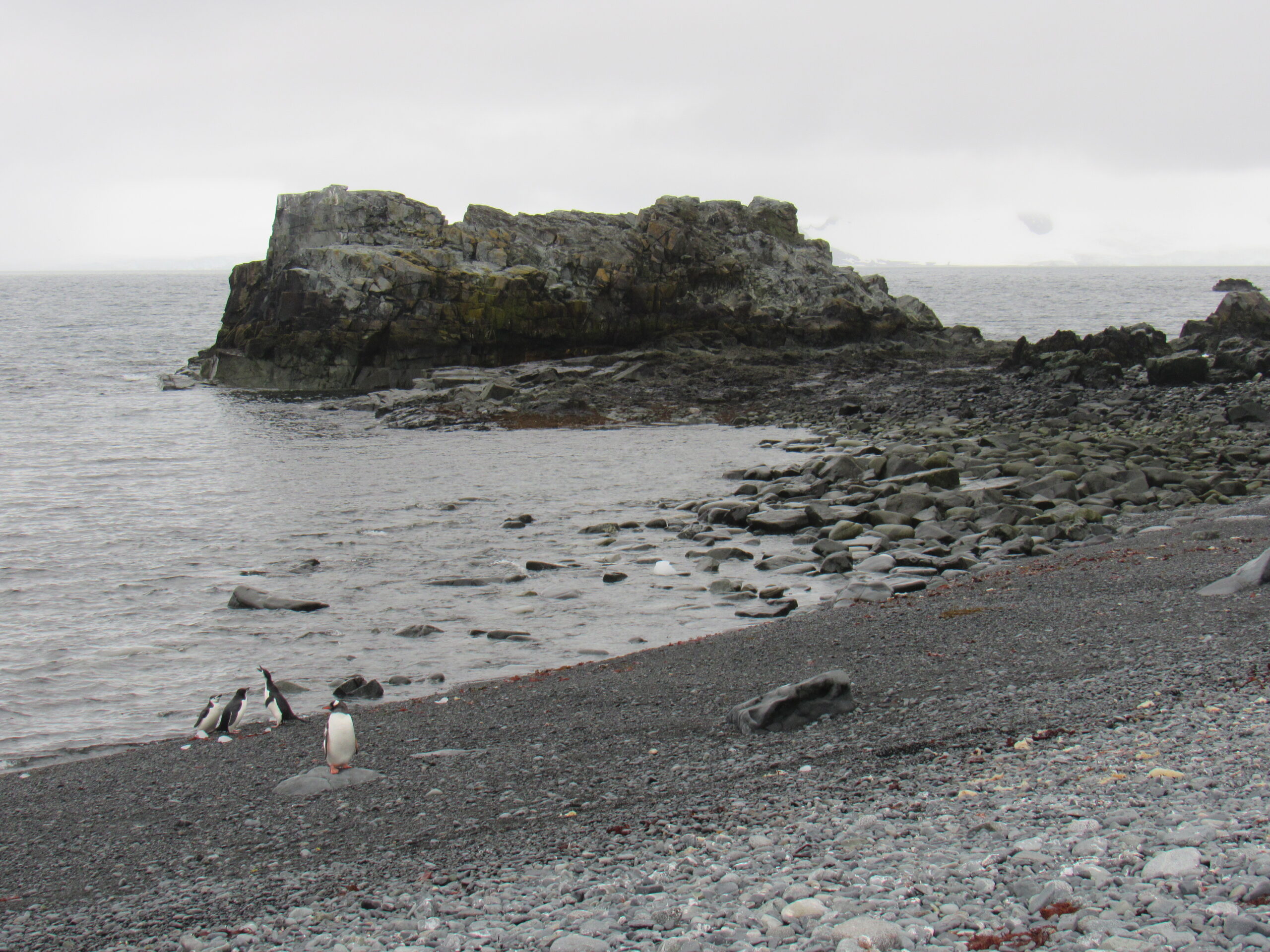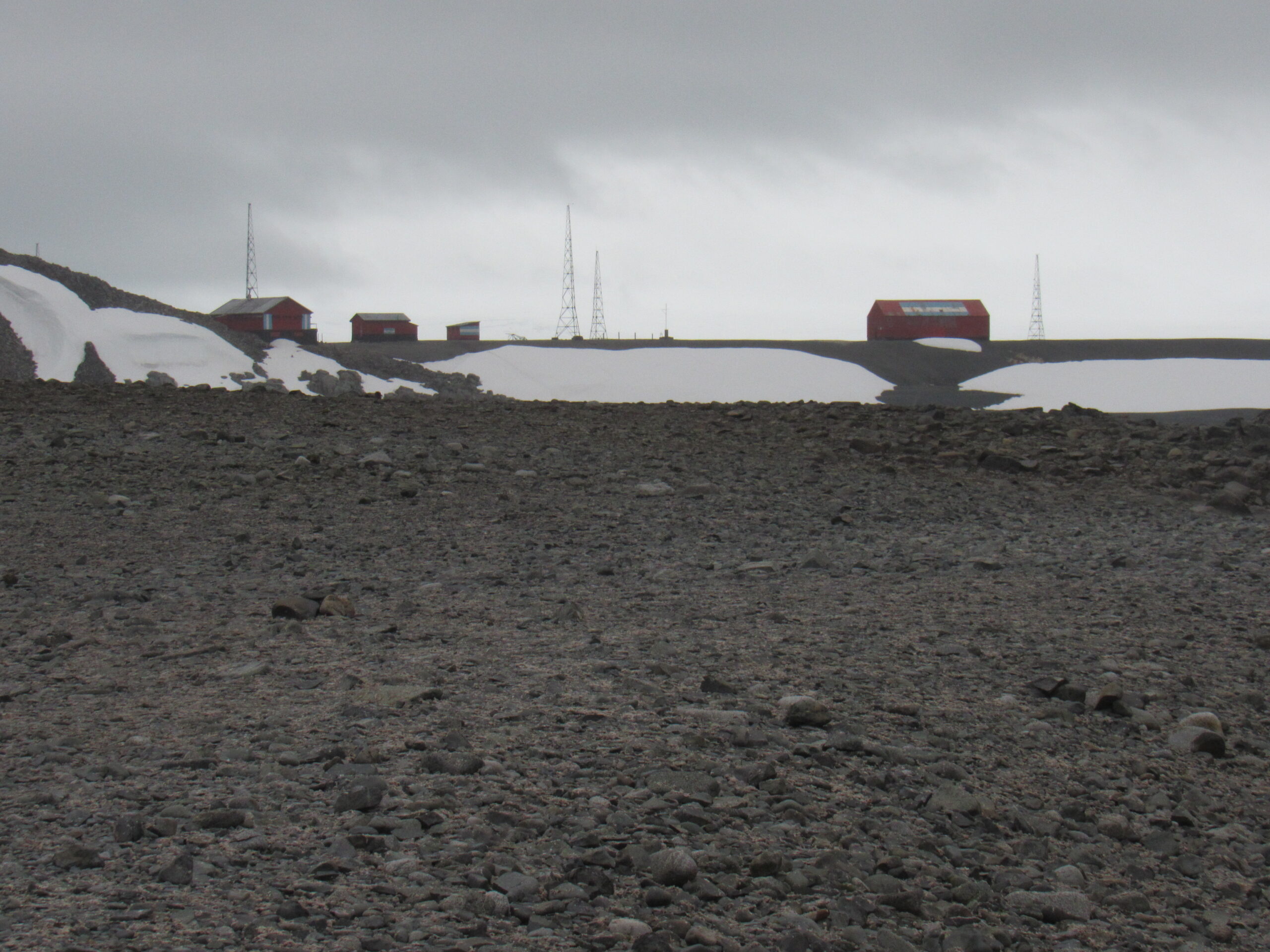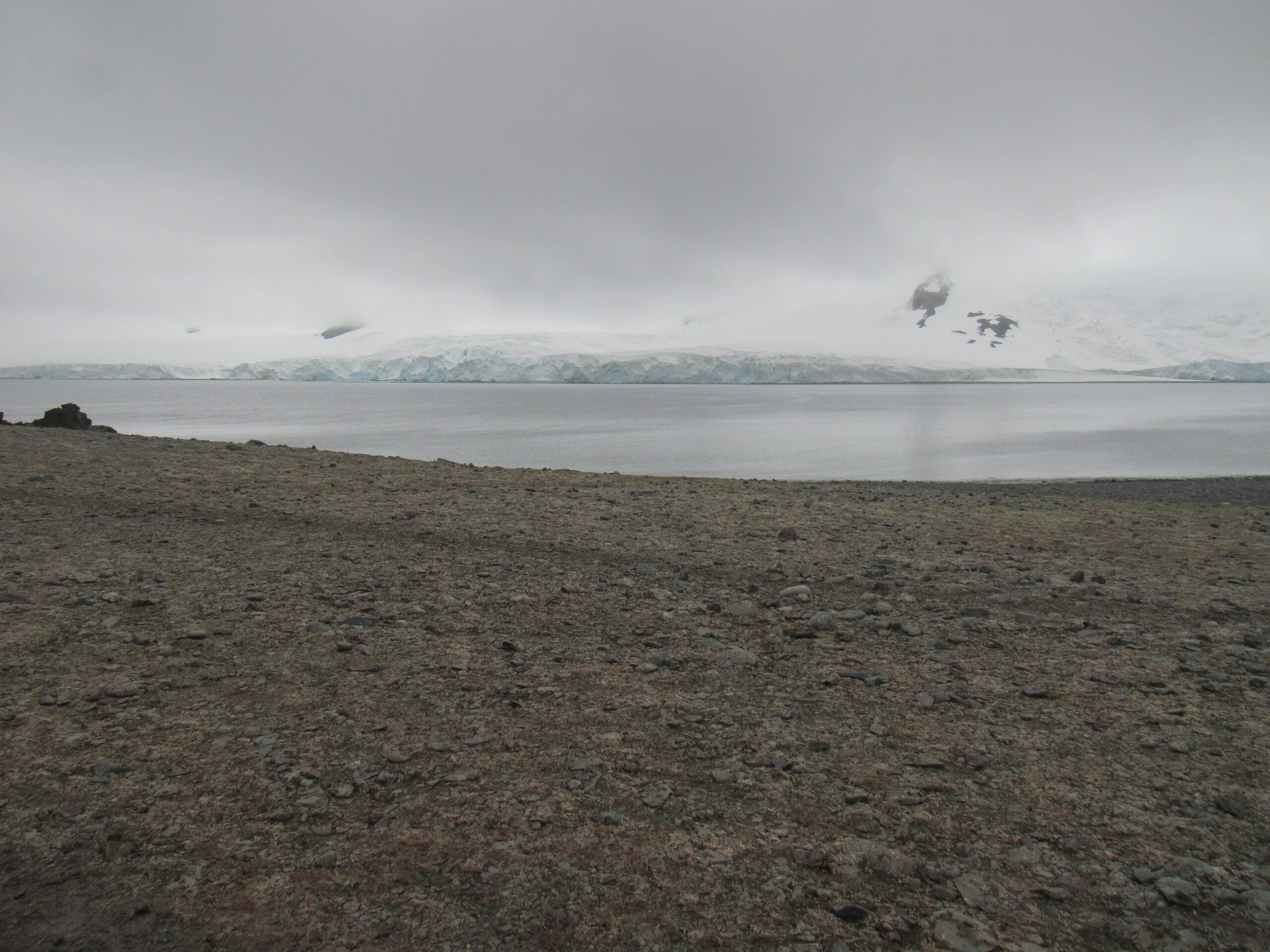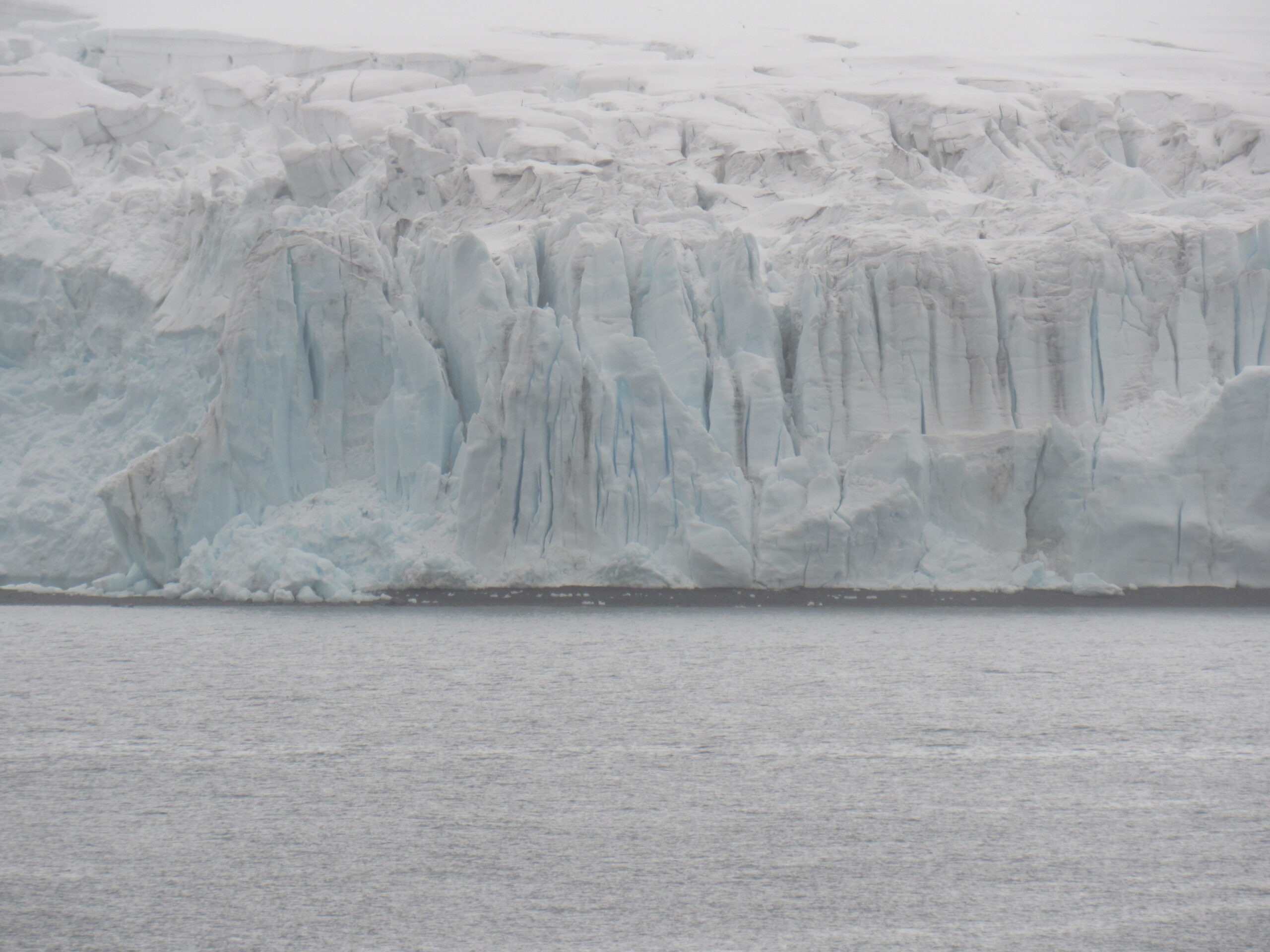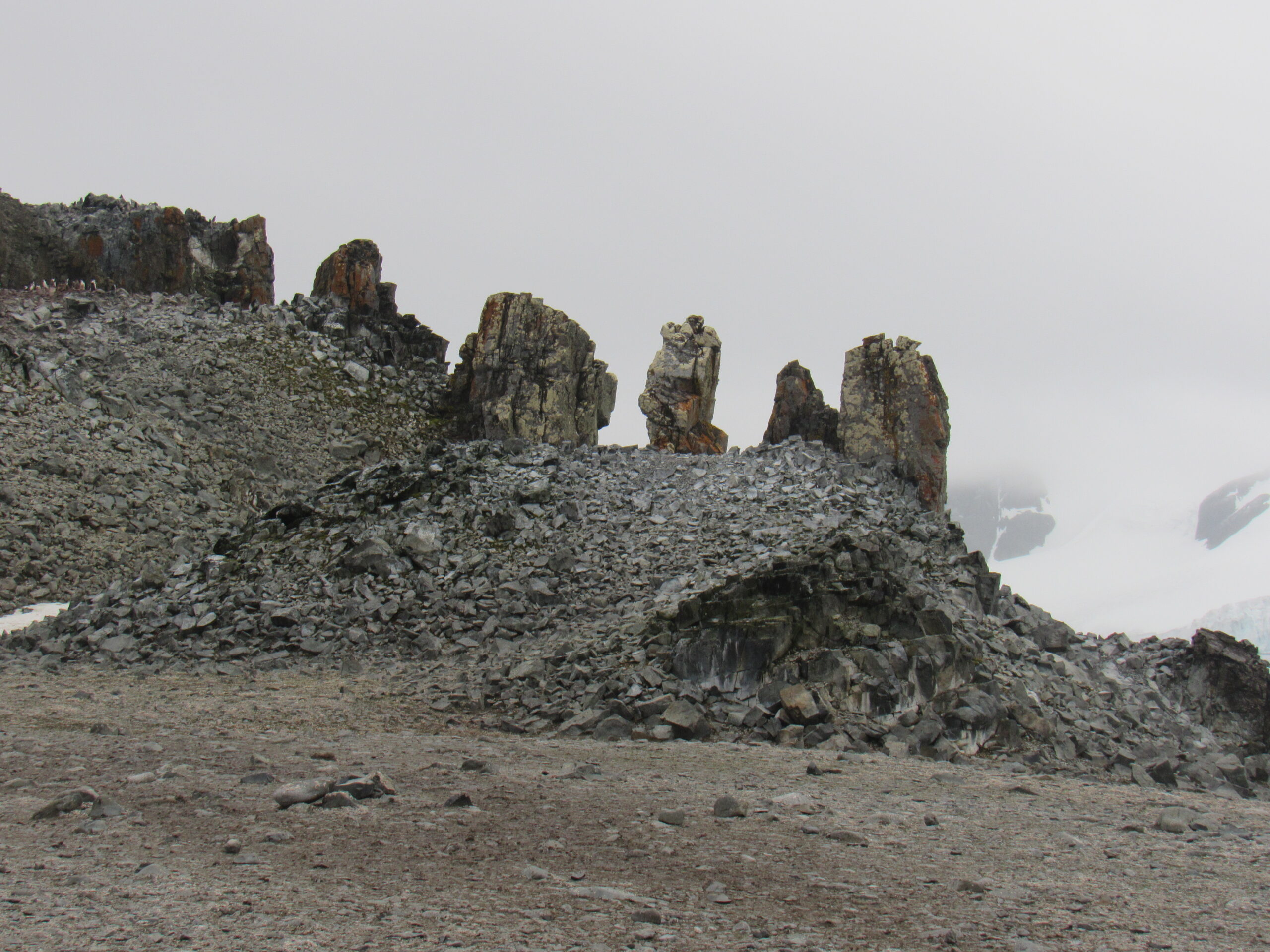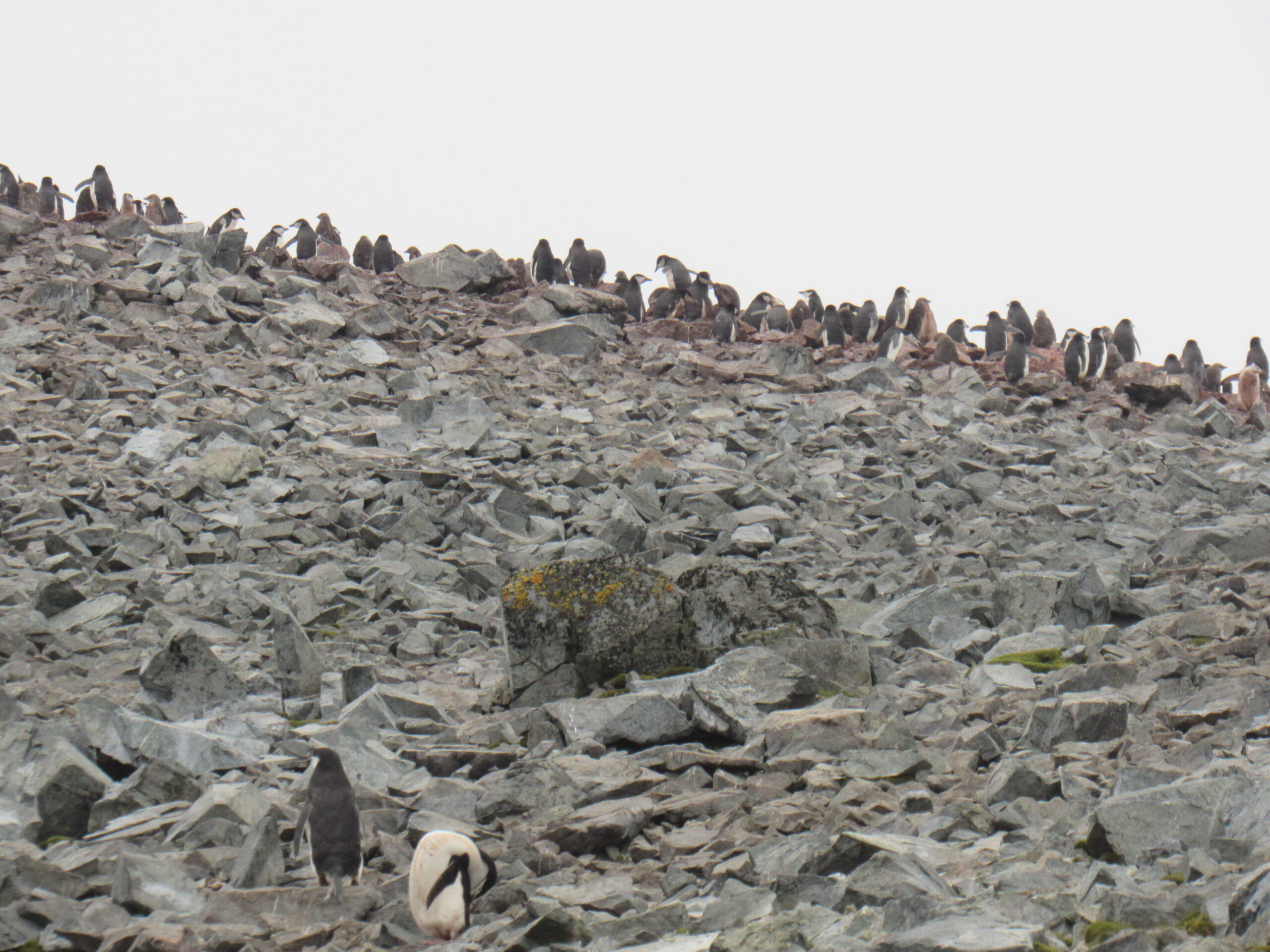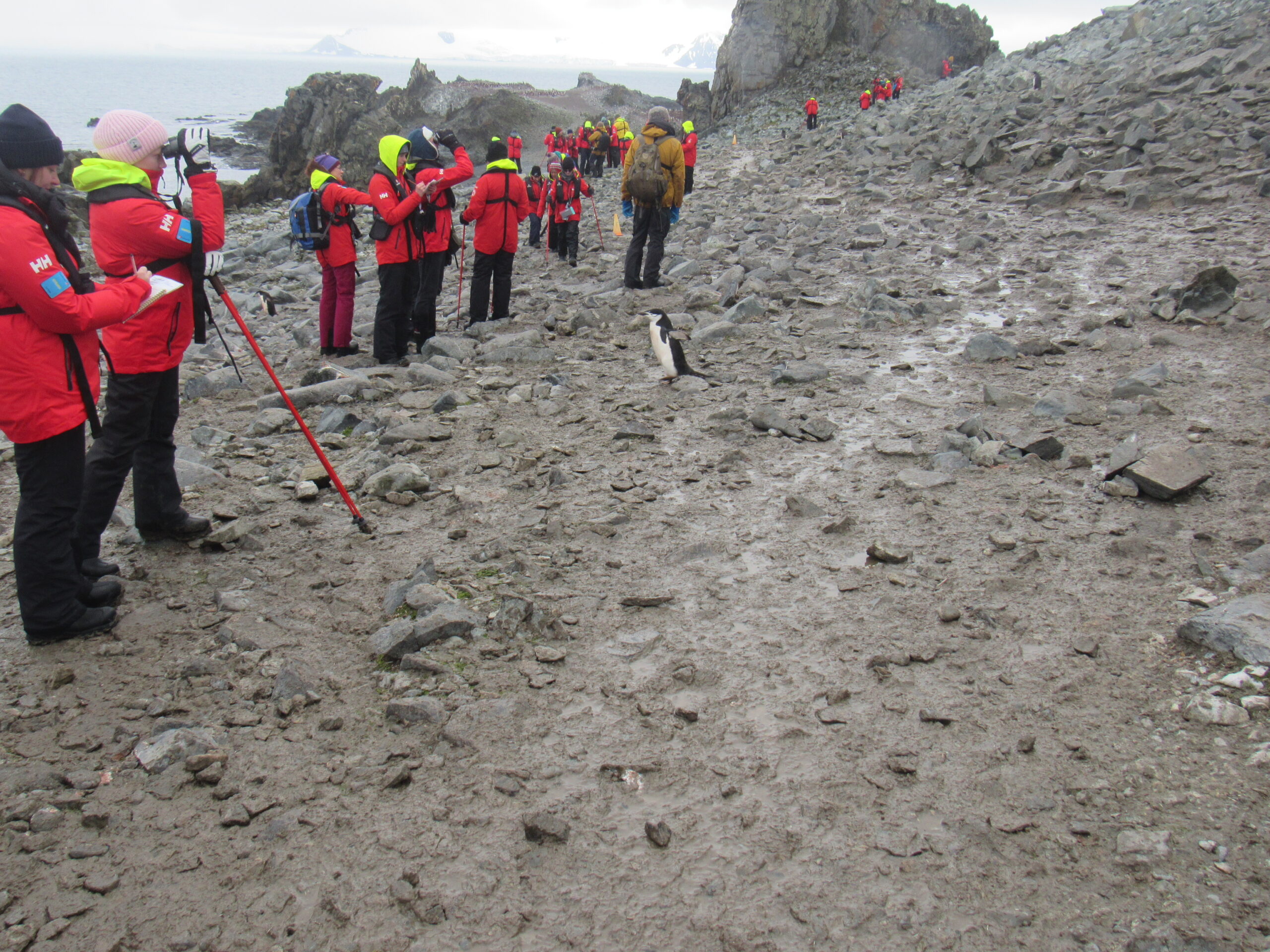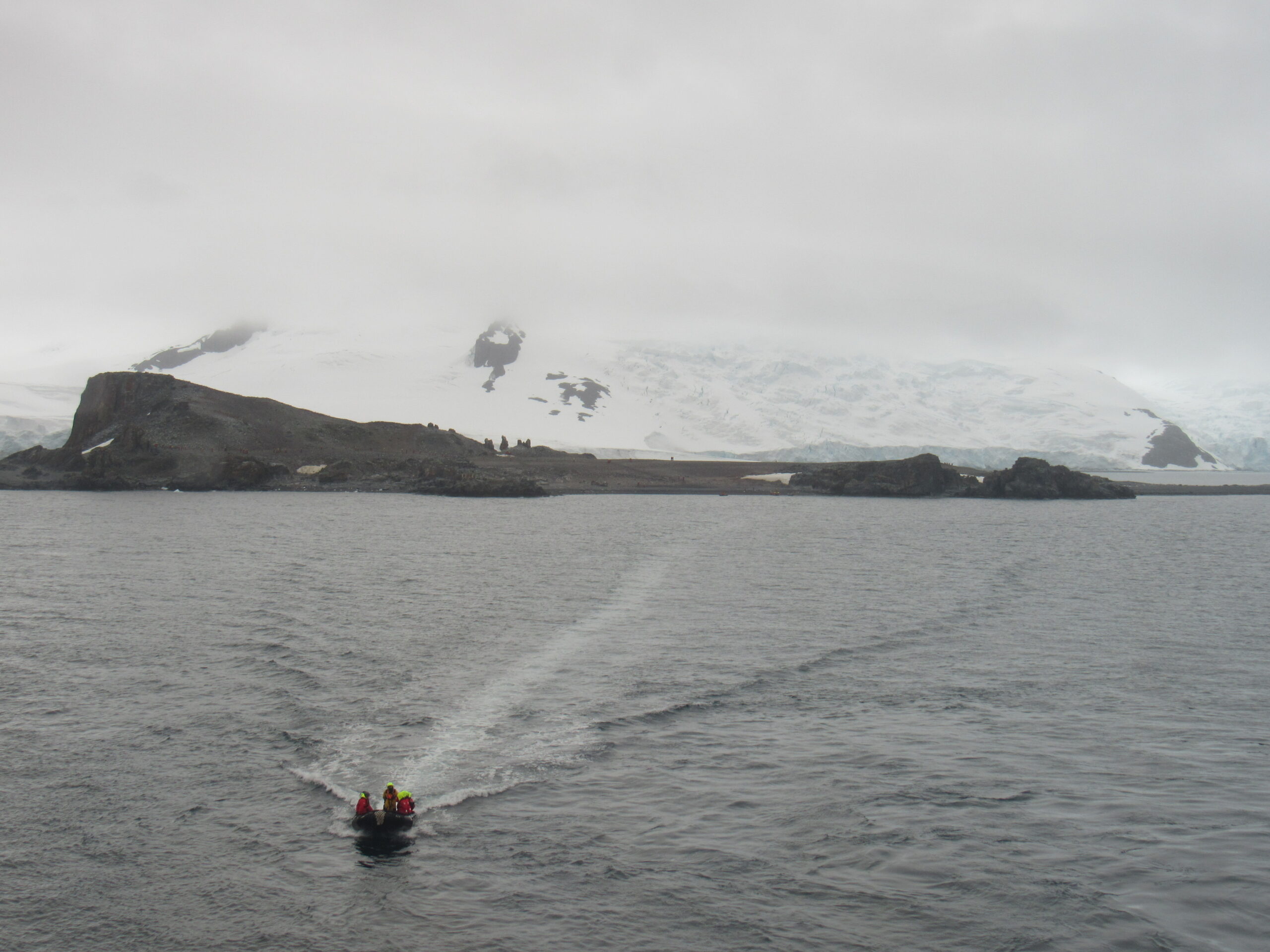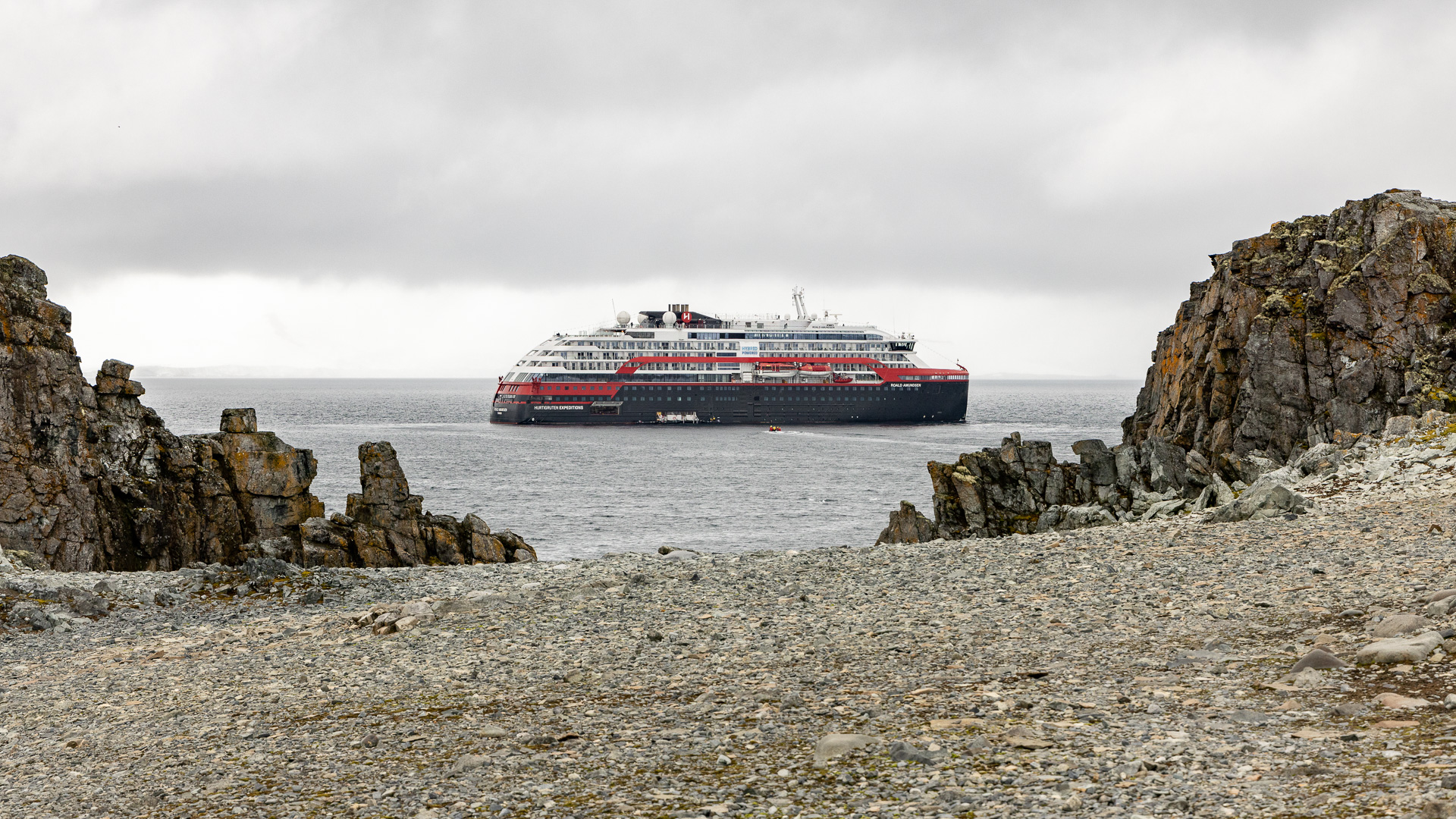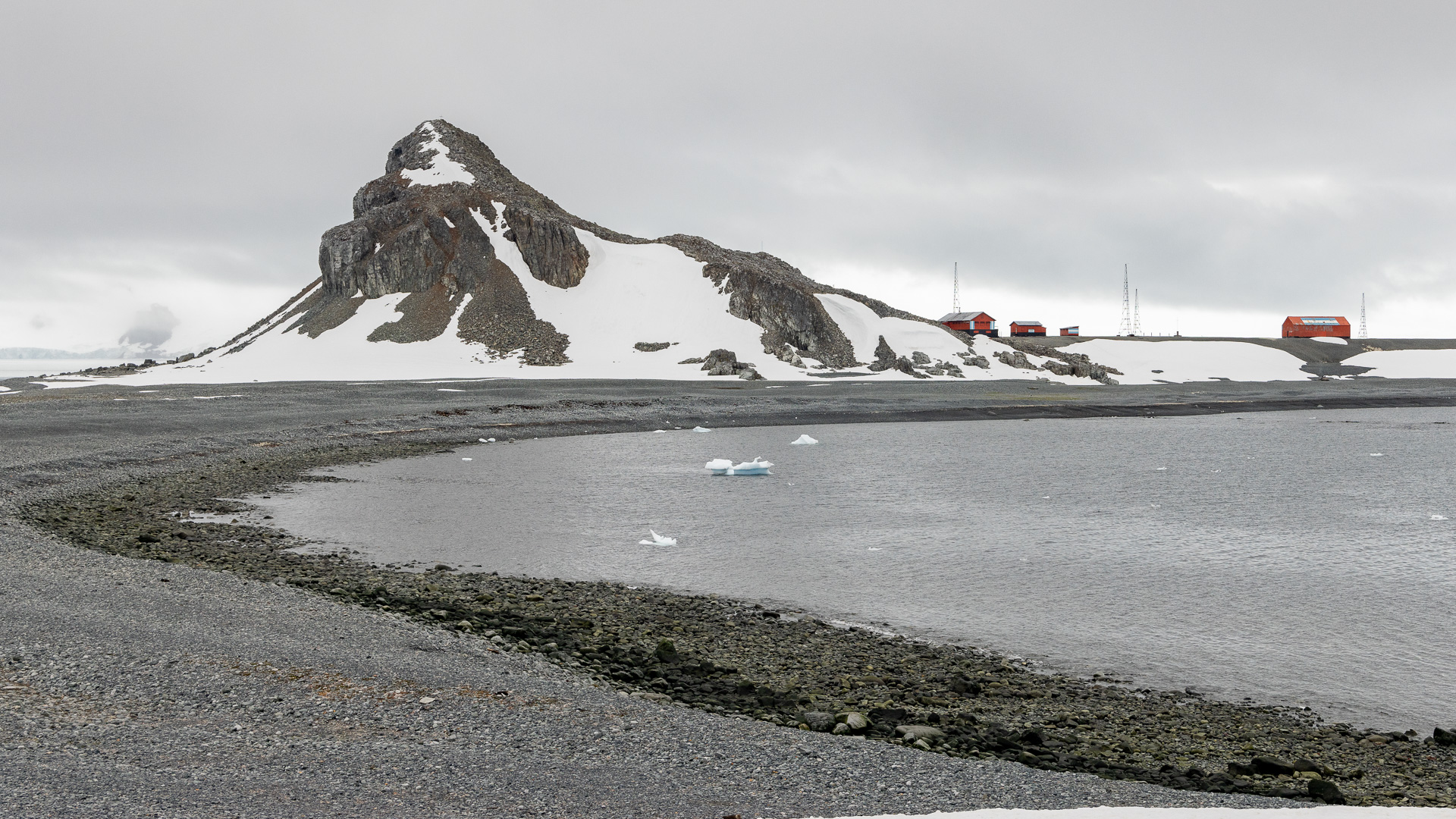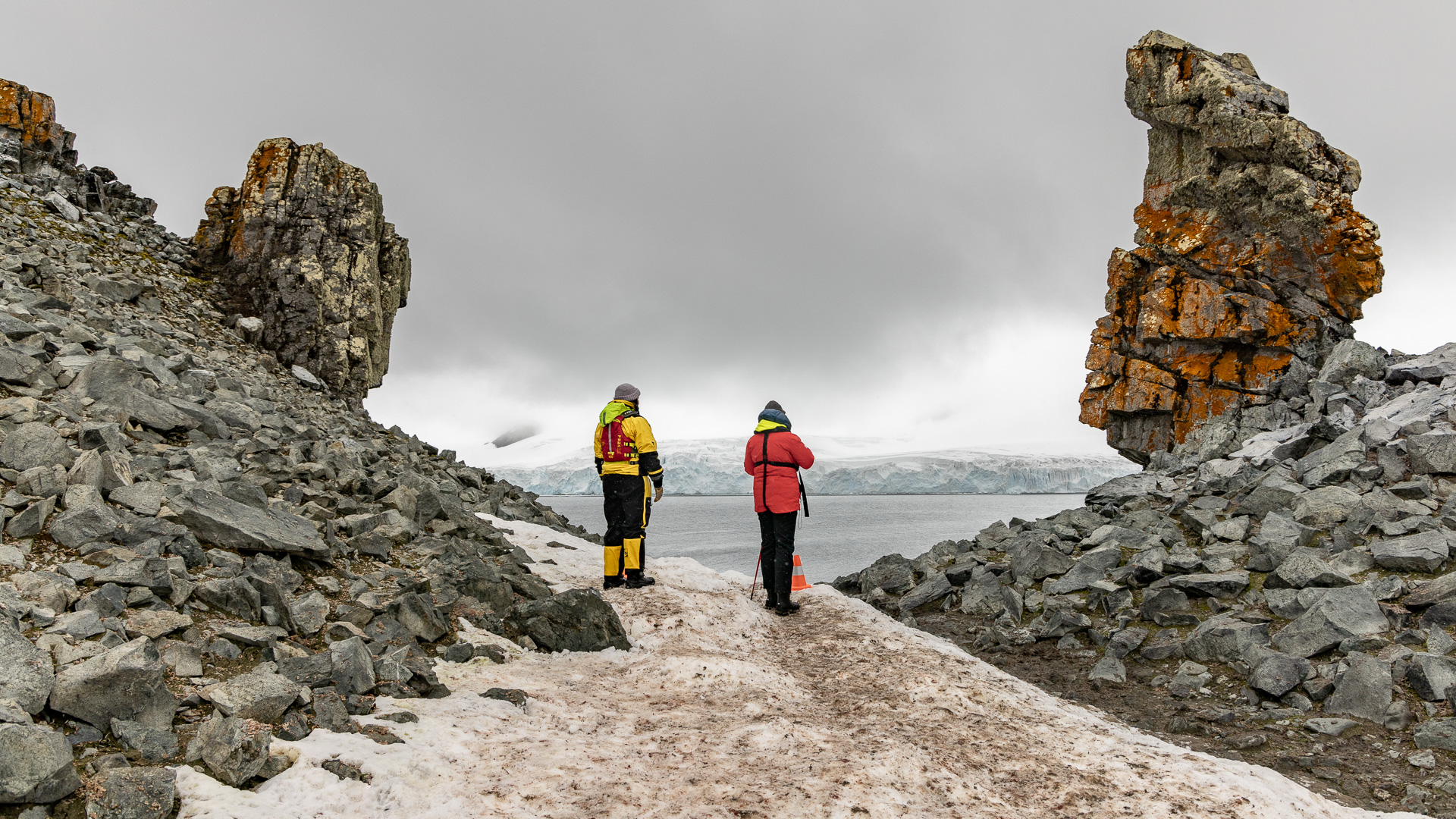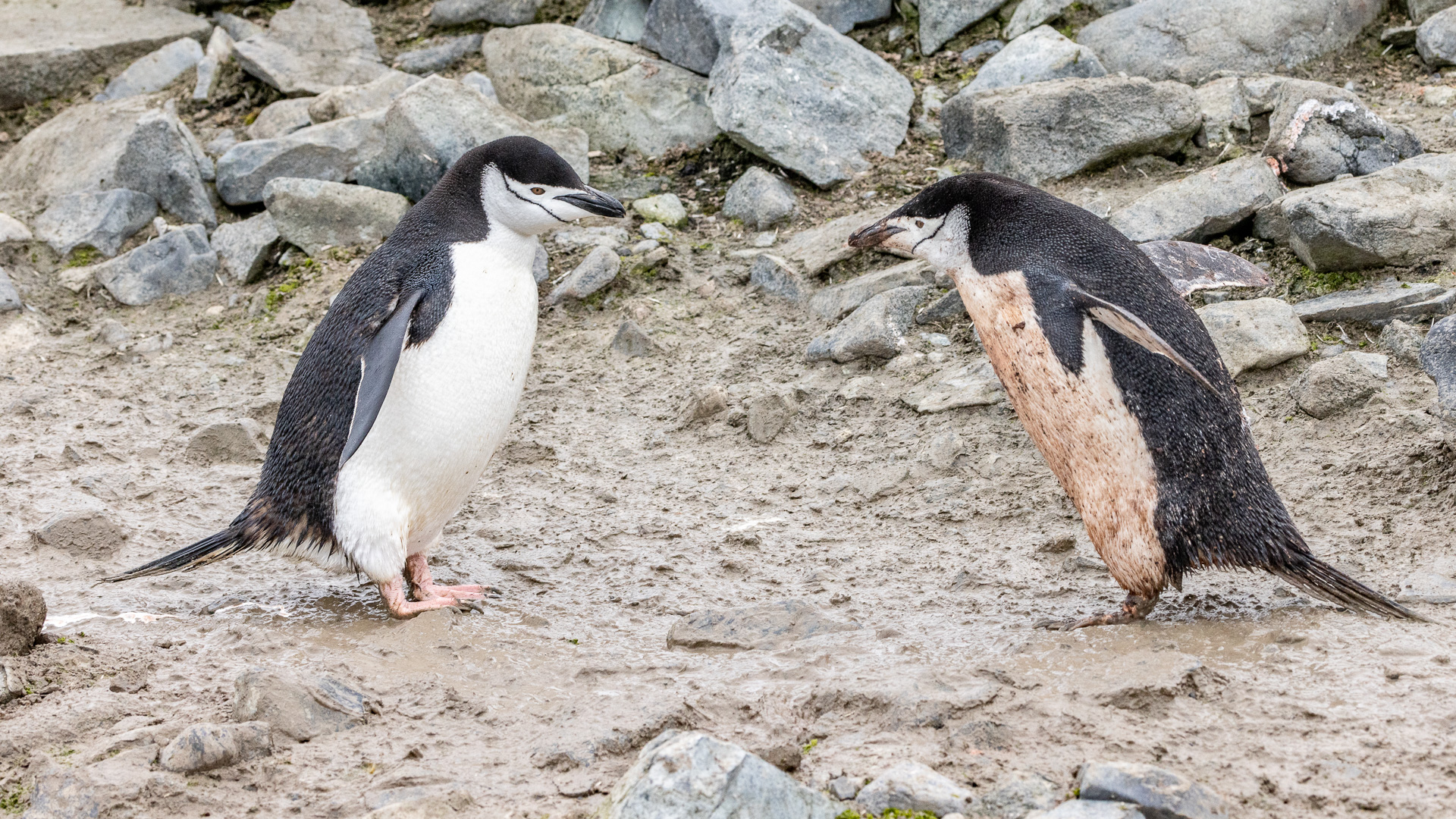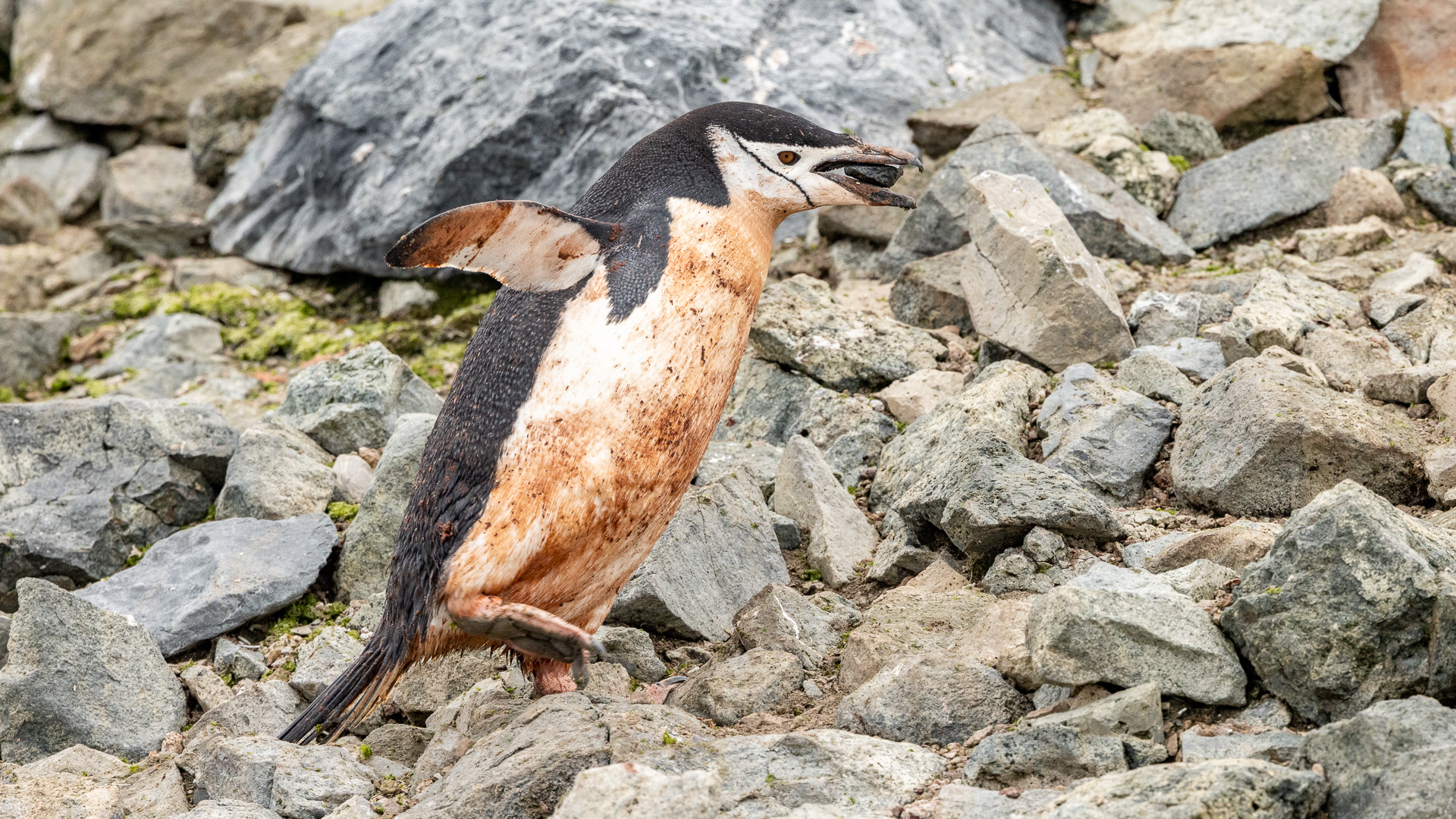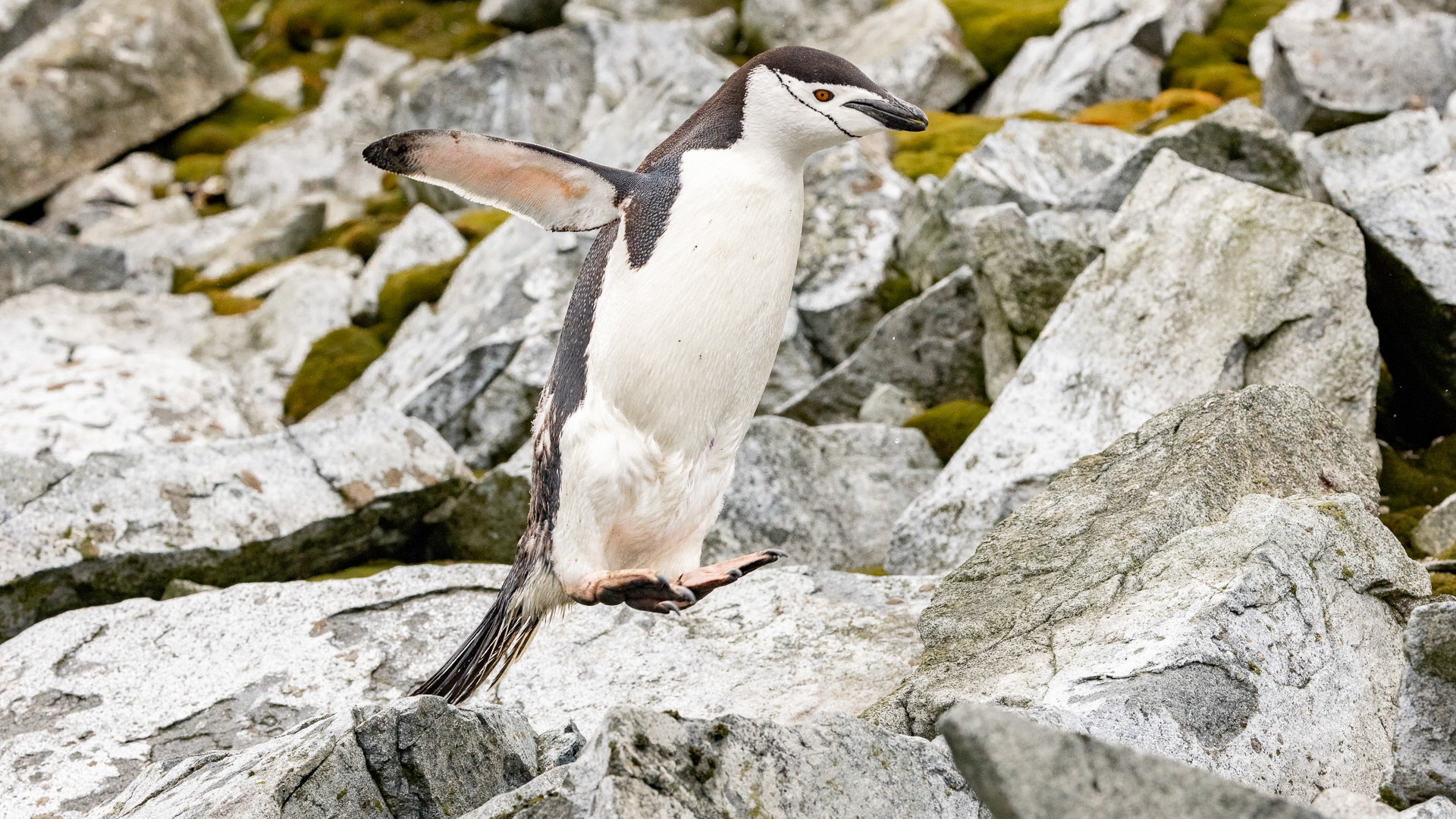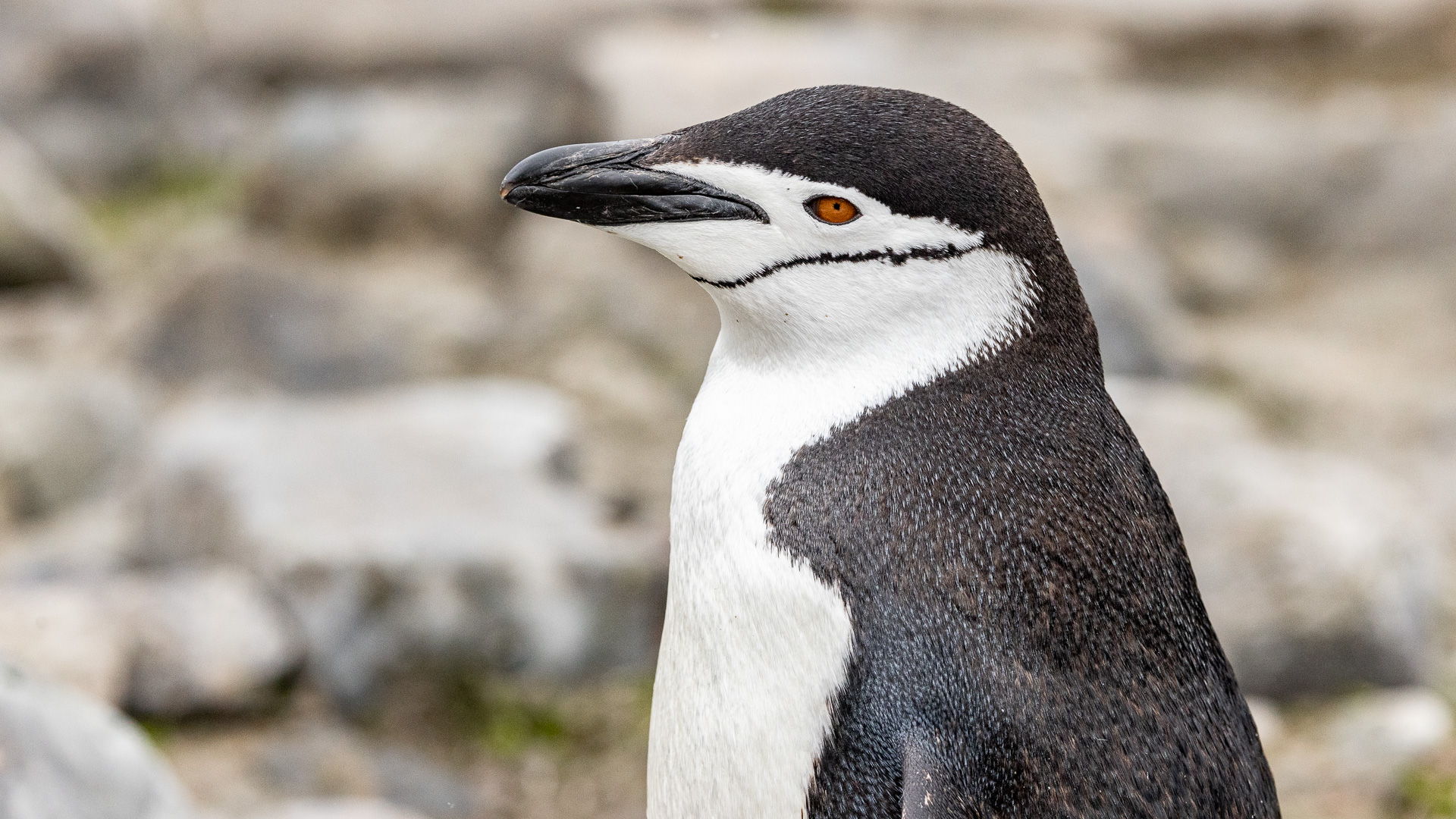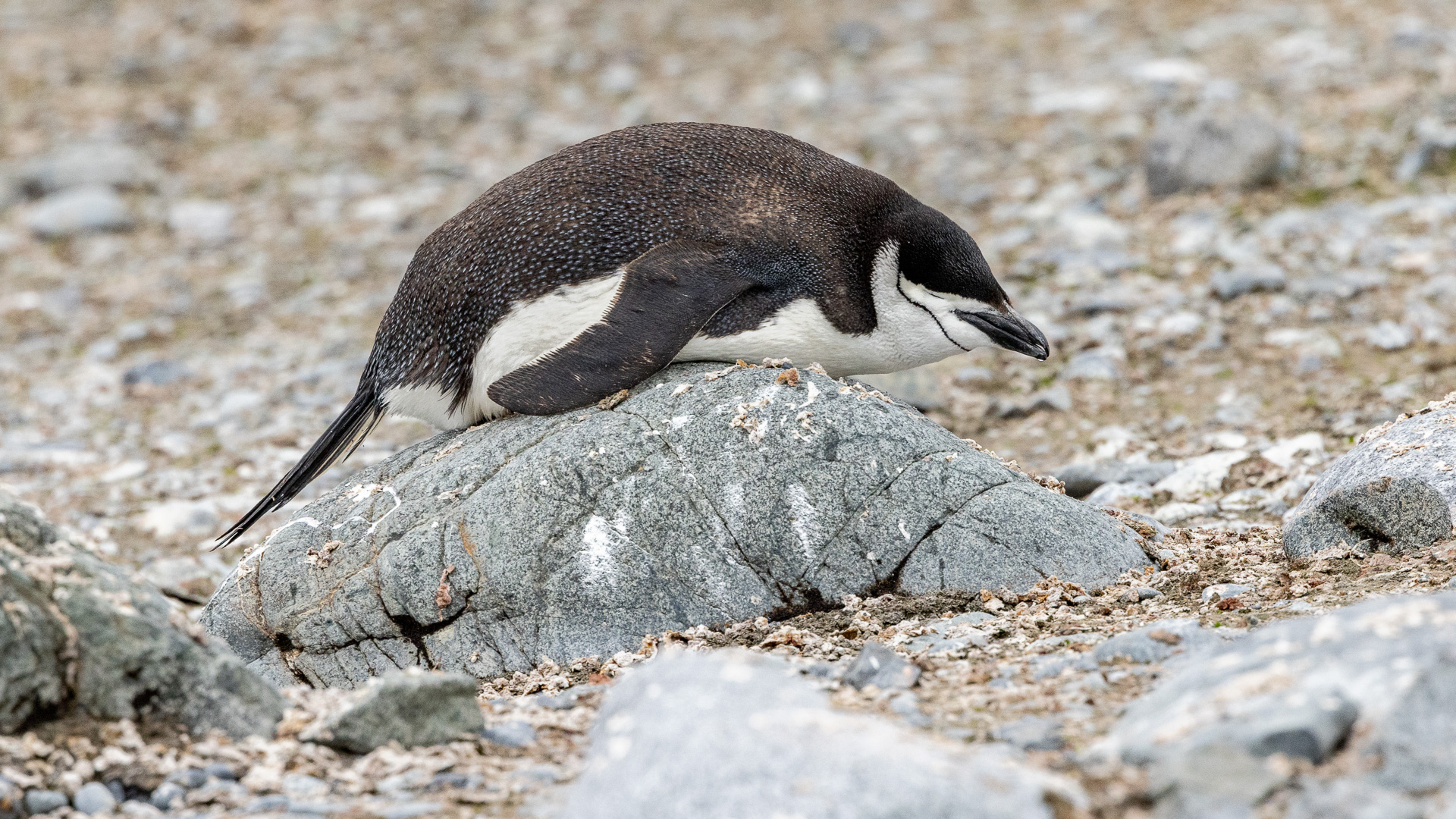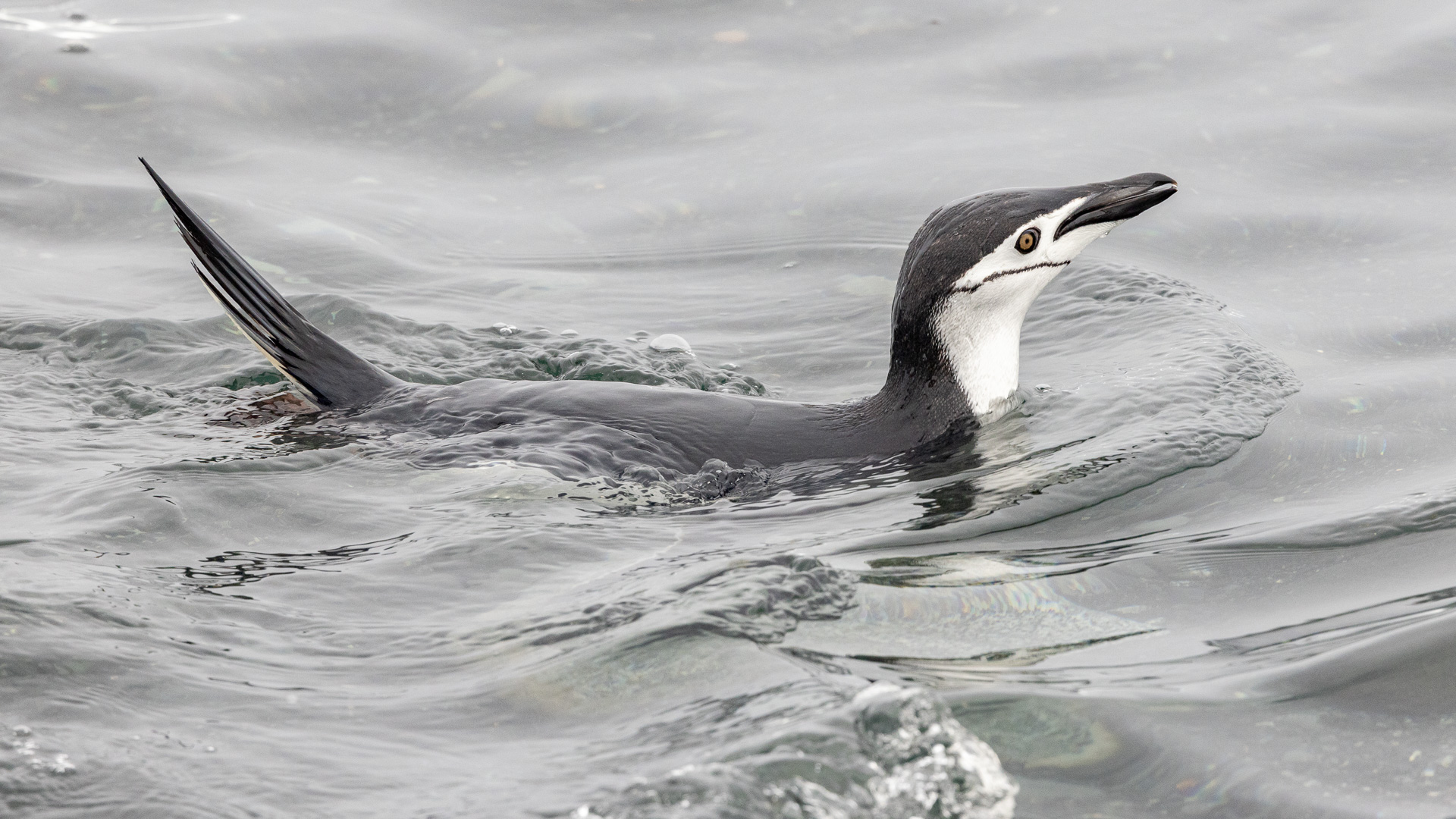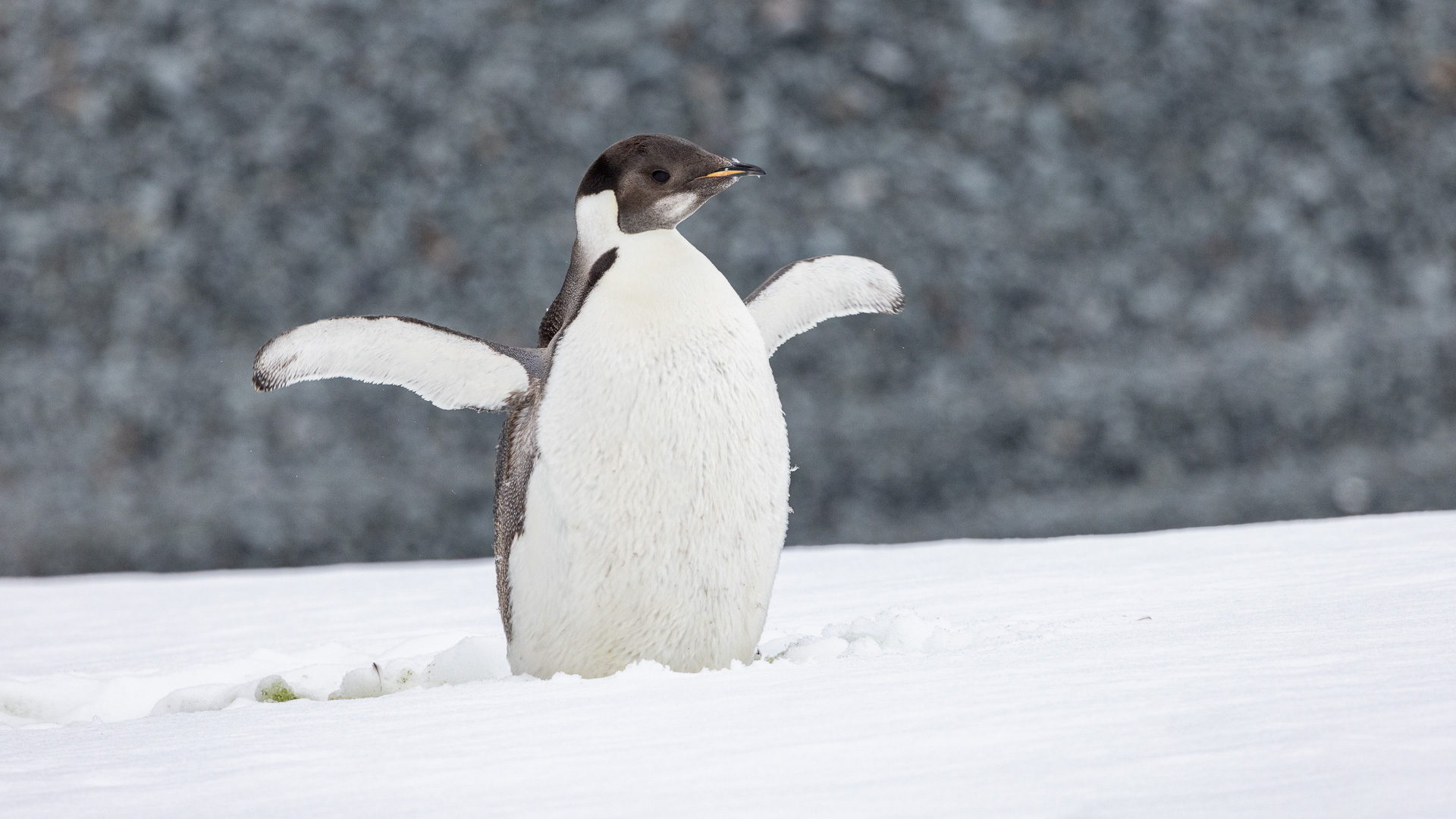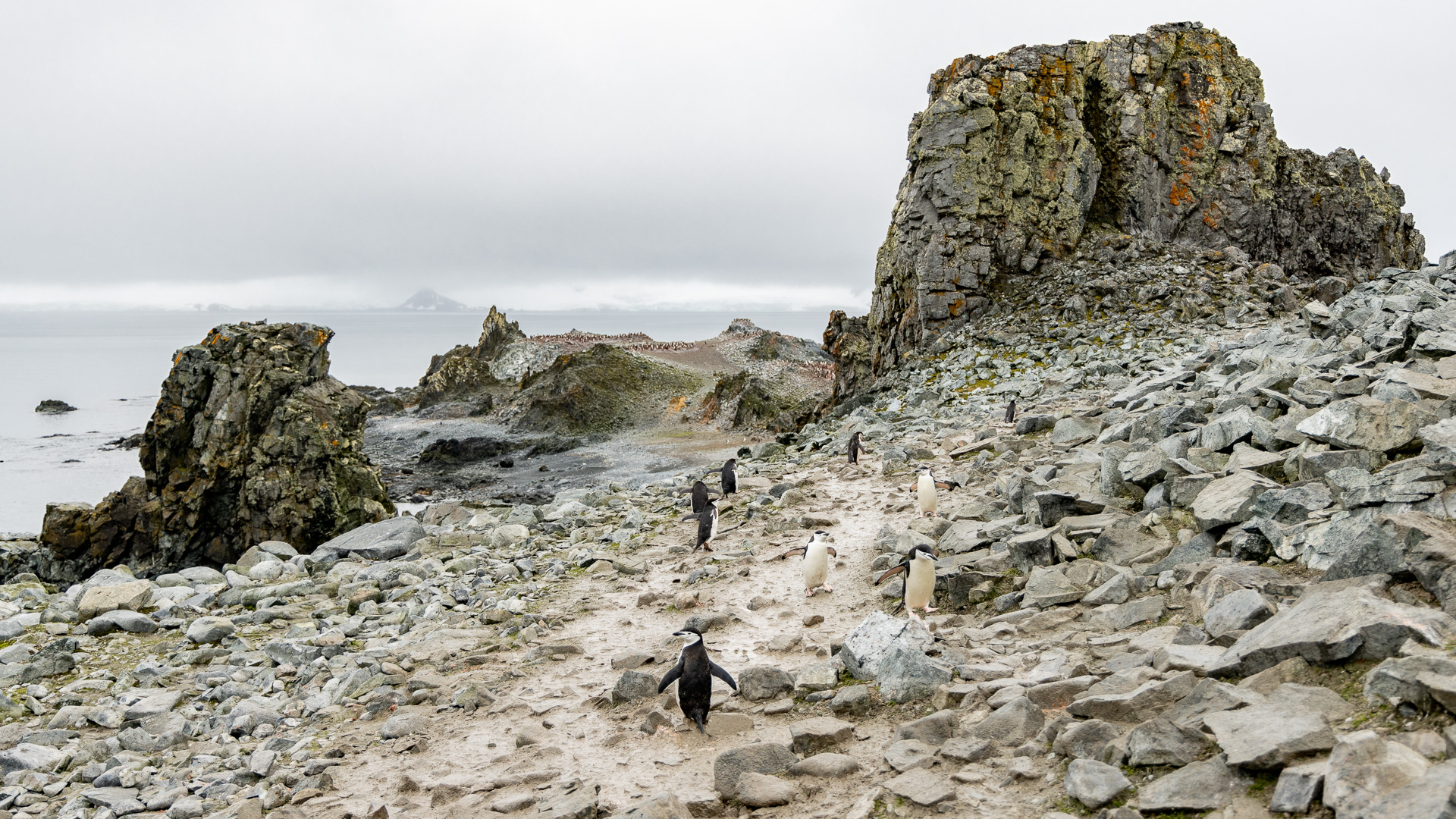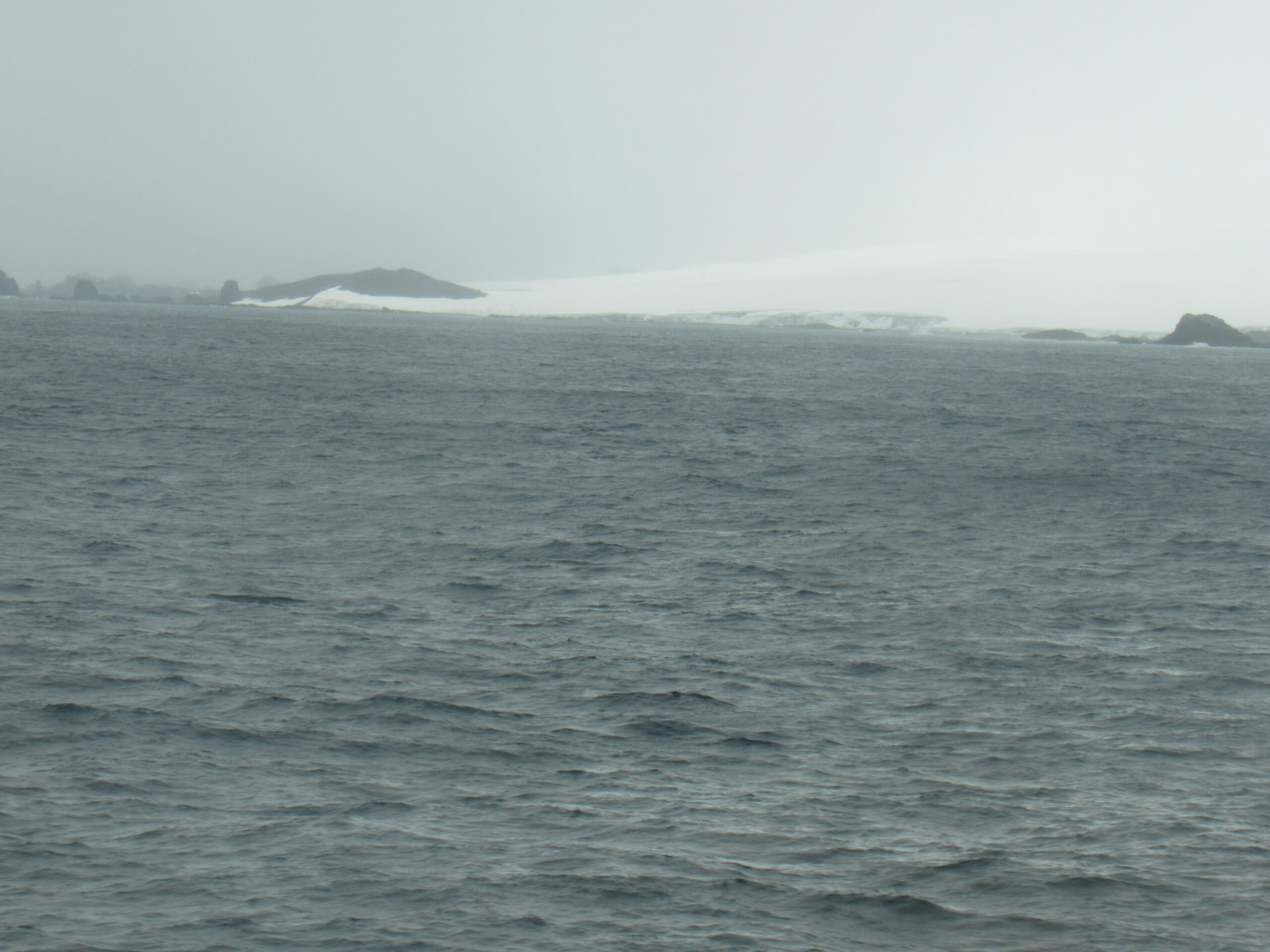Where we left off, our ship was way down the west side of the Antarctic Peninsula. Poor weather had forced us to skip one shore landing, and we headed north at full speed to get to a new area. We had spent the next day at Tay Head, making a shore landing and enjoying the penguin colony. We were now in the Weddell Sea, an area that was colder and drier, with less wind and smaller waves. Upon leaving Tay Head, we traveled farther southwest into the Weddell Sea, passing through Erebus and Terror Gulf – I love that name. The Erebus and Terror Gulf was named for HMS Erebus and HMS Terror, the vessels used by Sir James Clark Ross in exploring these waters in 1842–43.
Our new goal was James Ross Island (64°10’S 57°45’W), a large island off the southeast side and near the northeastern extremity of the Antarctic Peninsula, from which it is separated by Prince Gustav Channel. Rising to 1,630 meters (5,350 ft), it is irregularly shaped and extends 46 miles in a north–south direction. Vega Island is to the north of the island, separated from James Ross Island by Herbert Sound. Erebus and Terror Gulf is to the northeast. Seymour Island and Snow Hill Island are to the southeast. The island was connected to the Antarctic mainland by an ice shelf until 1995, when the ice shelf collapsed, making the Prince Gustav Channel passable for the first time. Mendel Polar Station, the first Czech Antarctic Base, is located on the island.
James Ross Island was charted in October 1903 by the Swedish Antarctic Expedition under Otto Nordenskiöld, who named it for Sir James Clark Ross, the leader of a British expedition to this area in 1842 that discovered and roughly charted a number of points along the eastern side of the island.
Two dinosaur-bearing formations are present on the island, both from the Upper Cretaceous: the Santa Marta Formation and the Snow Hill Island Formation. These are two of only three known formations to have dinosaur fossils in Antarctica.
The first dinosaur discovered in Antarctica was Antarctopelta oliveroi, a medium-sized ankylosaur found on James Ross Island by Argentinian geologists Eduardo Olivero and Roberto Scasso in 1986. The dinosaur was recovered about 2 km (1.2 mi) south of Santa Marta Cove on the north part of the island. The ankylosaur was not formally named until 2006.
In December 2003, U.S. paleontologist Judd Case and U.S. geologist James Martin discovered the bones of a theropod dinosaur on the island. Nicknamed “Naze” after the northerly Naze Peninsula on which it was found, the Late Cretaceous remains include an upper jaw and teeth, and most of the lower legs and feet. Little information is available, but the shape of the leg and feet indicate it was a runner. In 2019, it was given the name Imperobator antarcticus. It was large, about the size of Utahraptor. It is the second Antarctic theropod discovered, after Cryolophosaurus. An ornithopod was found in the Snow Hill Island Formation by Argentine paleontologists in 2008. In 2013, it was named Trinisaura santamartaensis. In 2015, an iguanodontid found in 2002 was named Morrosaurus antarcticus. The genus name refers to the site of El Morro on James Ross Island, where the remains of the species were found. The specific name refers to Antarctica.
Mount Haddington is a massive 1,630 m (5,350 ft) high shield volcano comprising much of James Ross Island. It is 60 km (37 mi) wide and has had numerous subglacial eruptions throughout its history, forming many tuyas. A tuya is a flat-topped, steep-sided volcano formed when lava erupts through a thick glacier or ice sheet. They are rare worldwide, being confined to regions which were covered by glaciers and had active volcanism during the same period. Some of its single eruptions were bigger in volume than a whole normal-sized volcano. Old eruption shorelines are widespread on the volcano’s deeply eroded flanks.
Mount Haddington was discovered on December 31, 1842 by the Ross expedition, a voyage of scientific exploration of the Antarctic from 1839 to 1843 led by James Clark Ross. Ross named the mountain after the Earl of Haddington, then First Lord of the Admiralty.
Pictures of the island are hard to come by, but I did find this link which shows a few.
https://www.researchgate.net/figure/A-Ulu-Peninsula-from-Johnson-Mesa-Note-the-flat-topped-volcanic-mesas-with-small-ice_fig6_259812368
As lava that erupts under a glacier cools very quickly and cannot travel far, it piles up into a steep-sided hill. If the eruption continues long enough, it either melts all the ice or emerges through the top of the ice and then creates normal-looking lava flows that make a flat cap on top of the hill. Discovering and dating the lava flows in a tuya has proven useful in reconstructing past glacial ice extents and thicknesses.
Have a look at this map – the top of the map is northeast. #1 is the Antarctic Peninsula. The ocean off to the right is the Weddell Sea. #2 is James Ross Island, where we were today.

Swift Bay is located at 64°22’S 57°46’W. On the morning of January 19th, we were there. It was snowing and 32 degrees F, and one look outside convinced me that this was a shore landing that I’d not be doing. There was fresh snow on the peaks and right down to the ocean. Nevertheless, some hardy souls braved the elements and rode the zodiacs to go ashore. A group of kayakers paddled around in the falling snow.
Here’s a snowy look towards the landing site.
Wet snow had accumulated around the ship.
Here’s a snowy telephoto shot I took of people on shore waiting for their turn to get back into a zodiac.
Here’s a zodiac with nine passengers plus driver.
Here’s a short video from that day.
And here are some photos taken by the ship’s photographer that day.
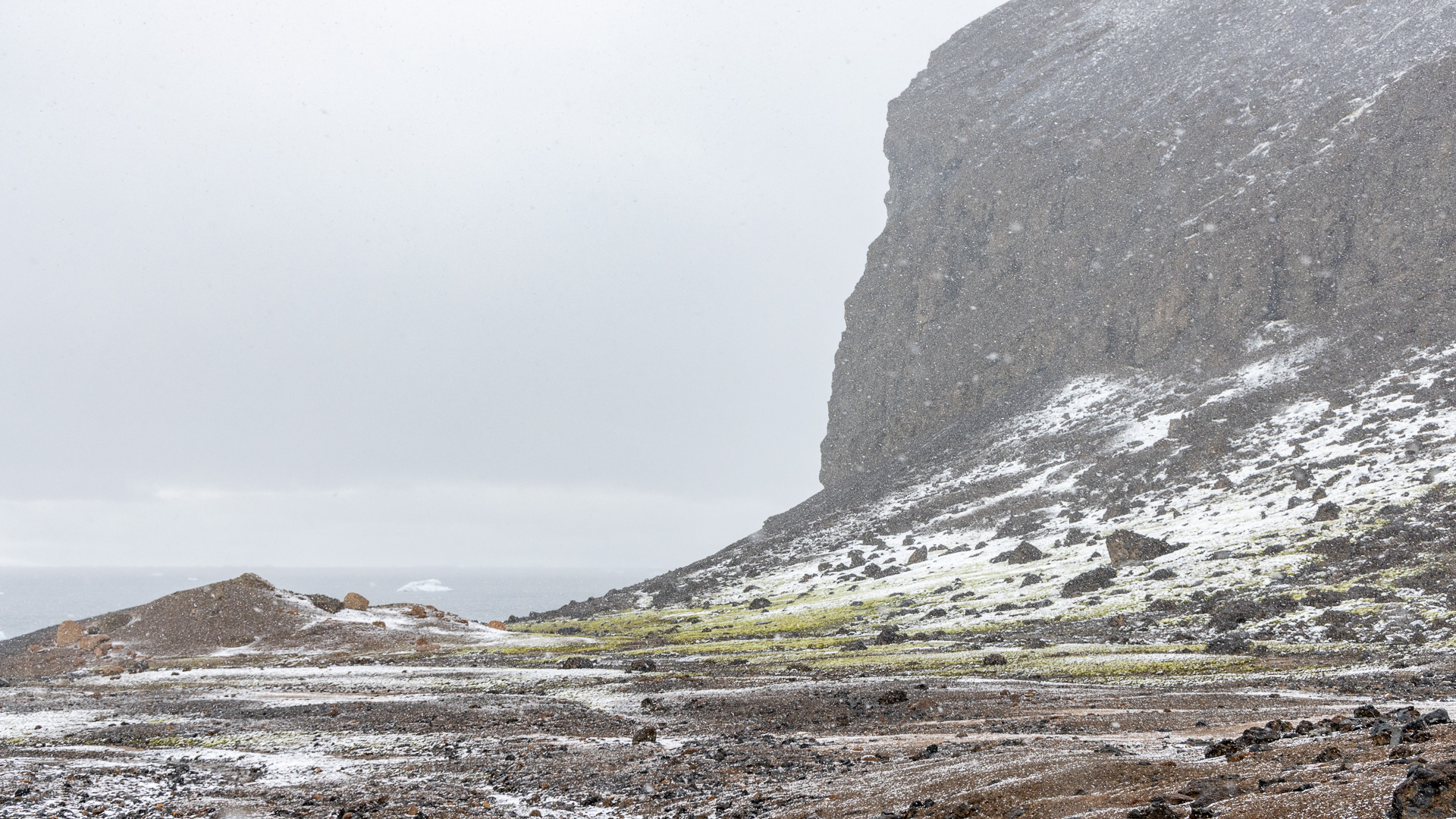
On shore. The green you see is possible this far north where the climate is less harsh – it could be algae or lichen.
By mid-afternoon, our shore excursion was over and our ship headed away at 8-9 knots, traveling northeast. There was a lot of ice everywhere.
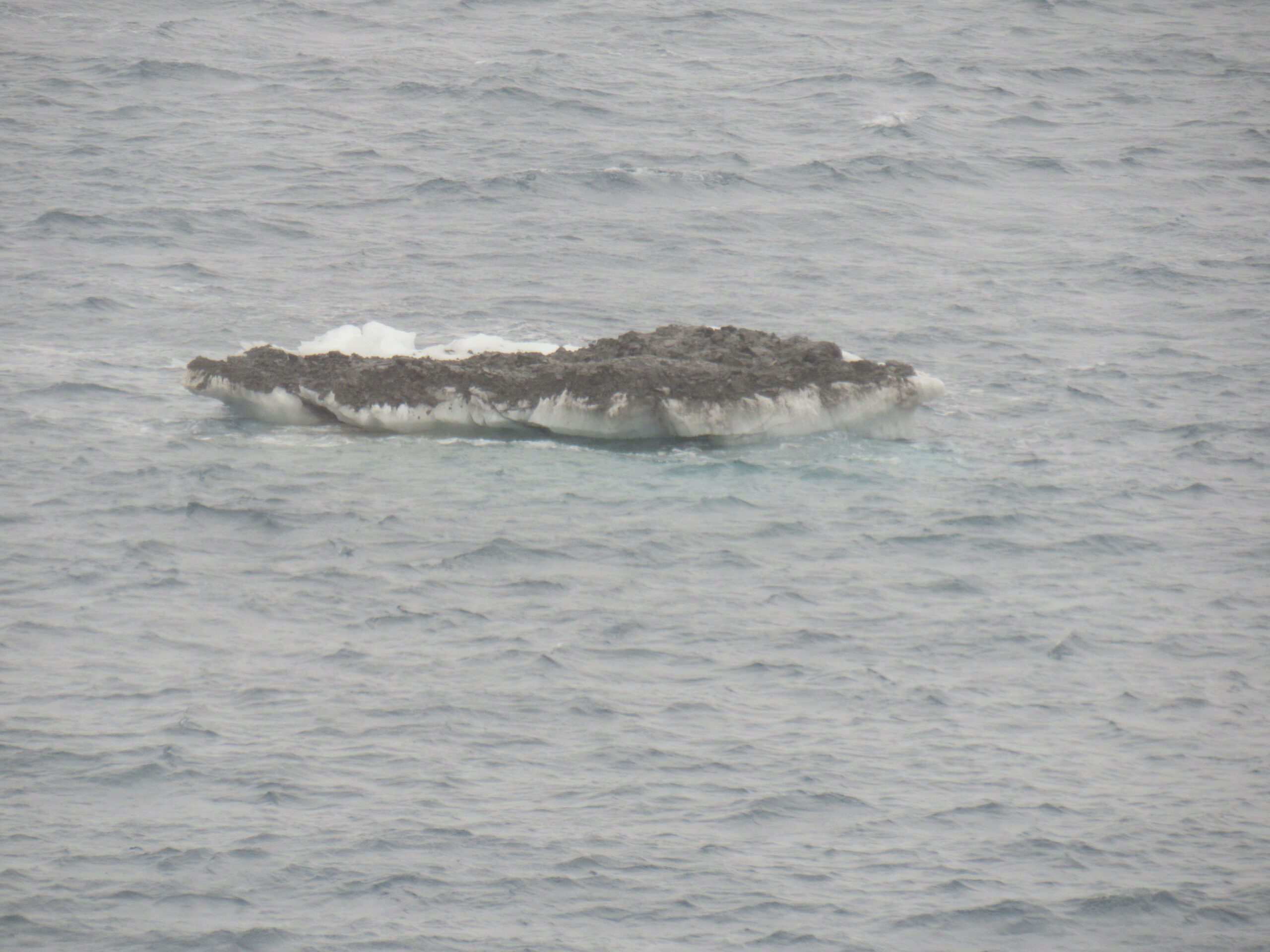
Some of the ice we were seeing was carrying a load of dirt and rocks, picked up from the land and frozen on to the surface of the ice, to be carried out to sea.
That evening, while we sat at dinner, the captain took us right past a huge tabular iceberg. It seemed close enough to touch, and it towered above our vantage point fifty feet above the water – it was very dramatic. As the day progressed, we made our way through seas littered with countless icebergs of all sizes.
Here’s a video which shows the strong wind blowing across the icy sea.
That evening at around 11:00 PM, we once again entered Antarctic Sound, heading north. The captain had announced that we were heading out into the Southern Ocean and to the South Shetland Islands. Some so-called Antarctic cruises only go as far south as those islands and don’t get anywhere near the mainland of the continent itself, where we had just spent the last 10 days. Our cruise had certainly ticked all the boxes.
The next morning, the skies were overcast but with good visibility. We had arrived at Greenwich Island, our stop for the day. Greenwich Island is 15 miles long and it averages about 3.25 miles wide, and is situated between Robert Island and Livingston Island in the South Shetland Islands. The Chilean base Arturo Prat and the Ecuadorian base Pedro Vicente Maldonado are situated on the northeast and north coast of the island, respectively. The harbor is located at 62°32’S 59°47’W. The high point of the island is Momchil Peak, with an elevation of 2,051 feet.
Yankee Harbor is a small inner harbor entered from Shopski Cove between Glacier Bluff and Spit Point, indenting the southwest side of the island. It is about 1.5 miles long and one mile wide, and runs in a west-southwest to east-northeast direction. It was known to both American sealers and the British as early as 1820.
As well as mosses, lichens and algae, the flowering plants Antarctic hairgrass and Antarctic pearlwort occur. It has been identified as an Important Bird Area by Birdlife International because it supports a breeding colony of about 5,000 pairs of gentoo penguins. Skuas, Wilson’s storm petrels and snowy sheathbills are also thought to nest there. Southern elephant seals, Weddell seals and Antarctic fur seals regularly haul out on the beaches.
This wonderful natural harbor is surrounded by glaciers. It’s an almost-perfect safe anchor for ships, which is why it was used by sealers for many years. You can also look across McFarlane Strait towards Half Moon Island and glaciers and the snow cap across the peaks of Livingstone Island, one the most spectacular islands in the South Shetlands. The landing beach here is terraced, and there is a melt-pool from the glacier on the eastern end. Depending on the conditions and breeding status of the penguins, some longer walks in the area are possible along the curved gravel spit. There are many artifacts from the days of sealing still littering the shoreline here. As well as the foundations of a sealer’s hut, there are the remains of a try pot that was used to render the blubber from the hunted animals.
Here are some photos I took around mid-day as we approached Yankee Harbor.
Even though we were many miles north of the mainland of Antarctica itself, I was surprised to see how much ice covered the land. In fact, the South Shetland Islands were mostly ice-covered, with only a small part free from ice.
As we neared our destination, we saw another ship in the distance.
Here’s a telephoto of that ship taken from ours.
She was the Ocean Adventurer, based out of Seattle. Built in 1975, she carries 128 passengers with a crew of 87, and was built for travel in polar waters.
The air temperature was 34 degrees F. when we arrived. By the time we were able to go ashore, it was late in the afternoon.
Here are some photos taken by the ship’s photographer.
By dinner time, our shore excursion was over and we were all back on board. I took these last photos at around eight in the evening.
It had been another good day in Antarctica. Sure, the weather was overcast and we had no sunshine, but I was surprised to see how these South Shetland Islands were so rugged and ice-covered. It just goes to show that at even the modest 62 degrees south latitude, the temperature is cold enough and the precipitation great enough to cover the land in glaciers. I’m glad we made a stop here.
Our next stop was only a short distance away. Half Moon Island is small, only 420 acres, and is in McFarlane Strait, between Livingston Island and Greenwich Island. The Argentine Cámara base is on the island, and is occupied in the summer only. On the morning of Sunday, January 21st, we were there and ready to make early shore excursions.
Plants found on the island include several lichen and moss species as well as Antarctic Hairgrass. The island has been identified as an Important Bird Area by Birdlife International because it supports a breeding colony of about 100 pairs of south polar skuas. Other birds nesting on the island include 2,000 pairs of chinstrap penguins, 125 pairs of Antarctic terns, 40 pairs of kelp gulls, Wilson’s and black-bellied storm petrels, Cape petrels, brown skuas, snowy sheathbills and imperial shags. Weddell and Antarctic fur seals regularly haul out on the beaches. Southern elephant seals can be seen, and whales are often seen patrolling the shores. Strict requirements are in place which govern shore landings, much as I’ve described in early chapters of this story.
The main excitement for us today was the penguins. It was our first and only stop at a colony of chinstrap penguins – one look at them explains the name. These little guys can live for 15 to 20 years. Here are some of the pictures I took while on the island.
I shot a few videos. Here’s one which shows a panorama of the island.
Here’s another – this one shows a lone chinstrap penguin making its way across a rocky hillside.
And finally, this one – a penguin walking towards me.
As usual on every one of our stops, the photos taken by the ship’s photographer were excellent.
This was the last of our shore excursions, and it was important to us because it gave us a good look at the last of the three major penguin species we’d hoped to see on this trip. Late in the afternoon, we headed away from Half Moon Island. I had this stormy look at the western end of Nelson Island before we turned north into the Drake Passage.
We were on our way home, but there was excitement yet to come.
Stay tuned for the final instalment of the story, Chapter Eleven.

